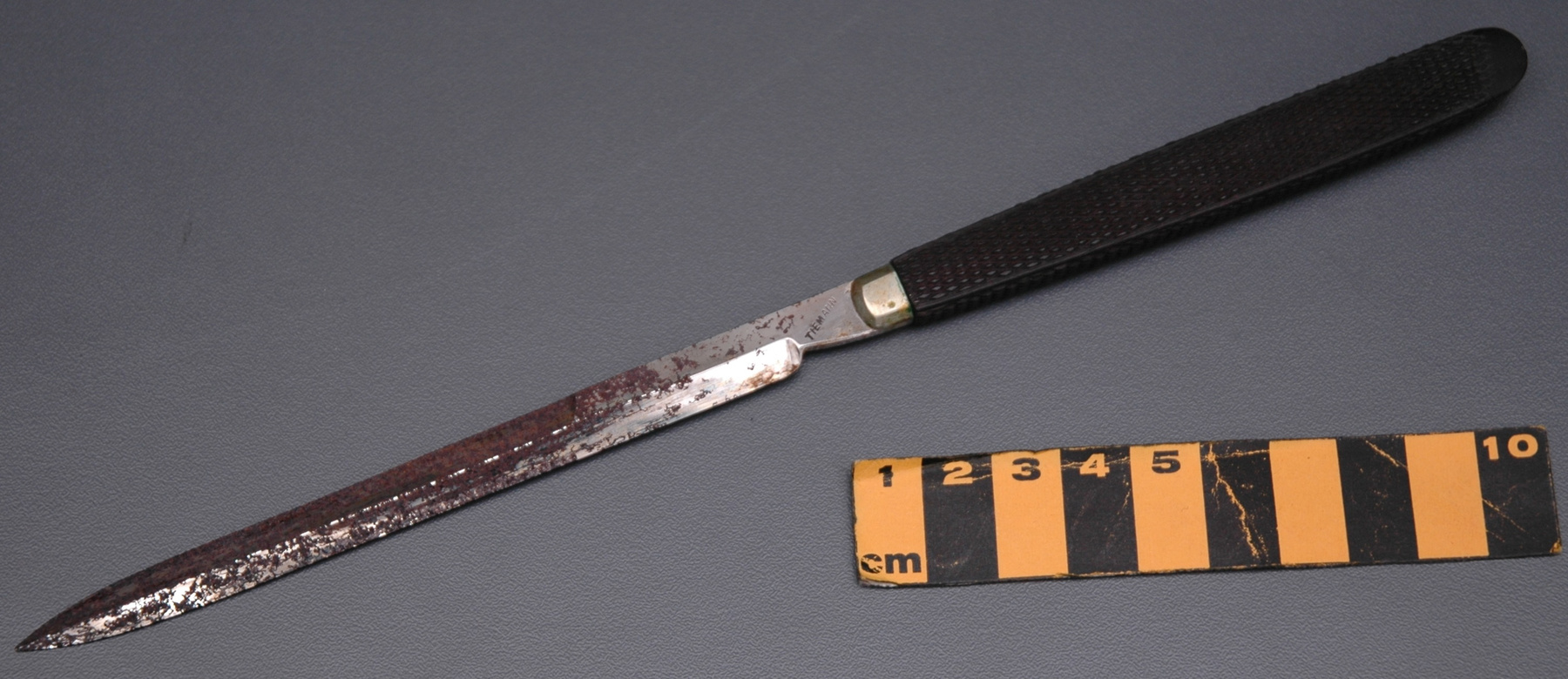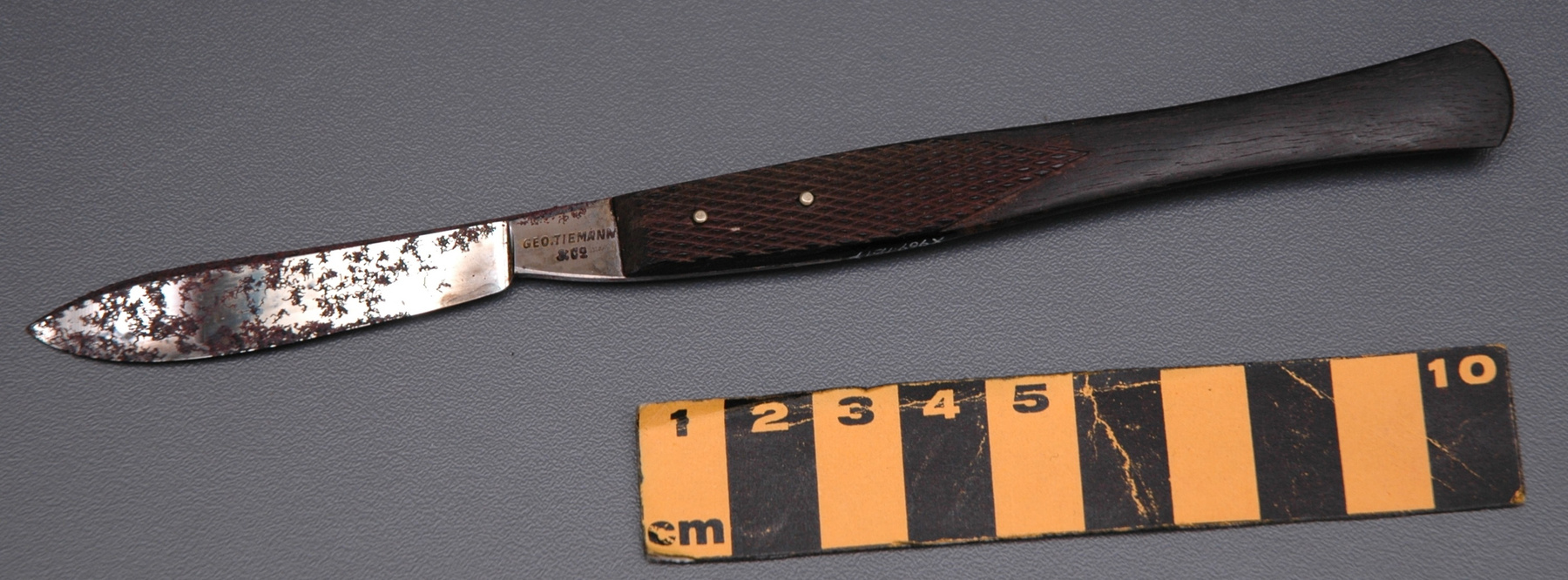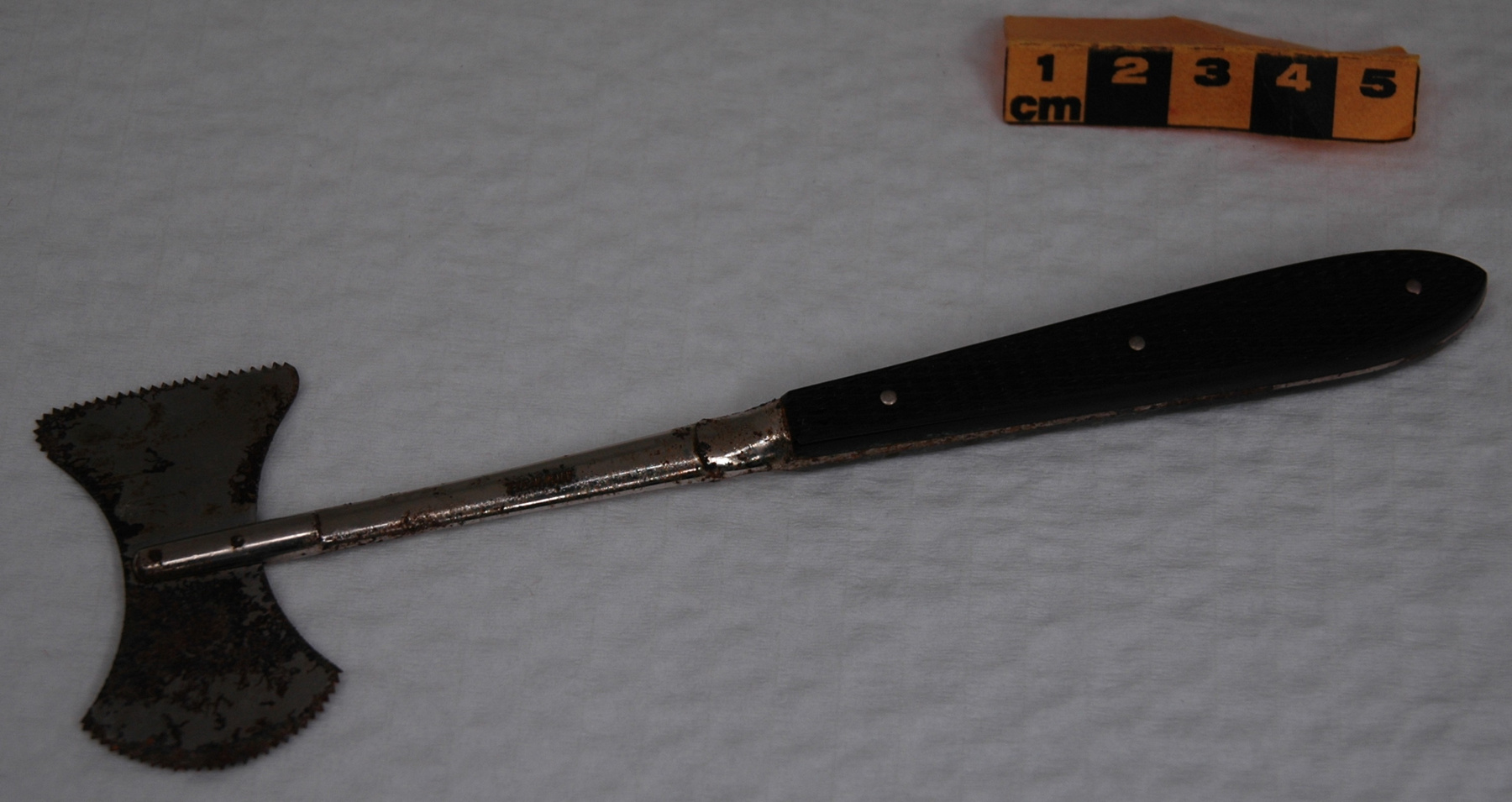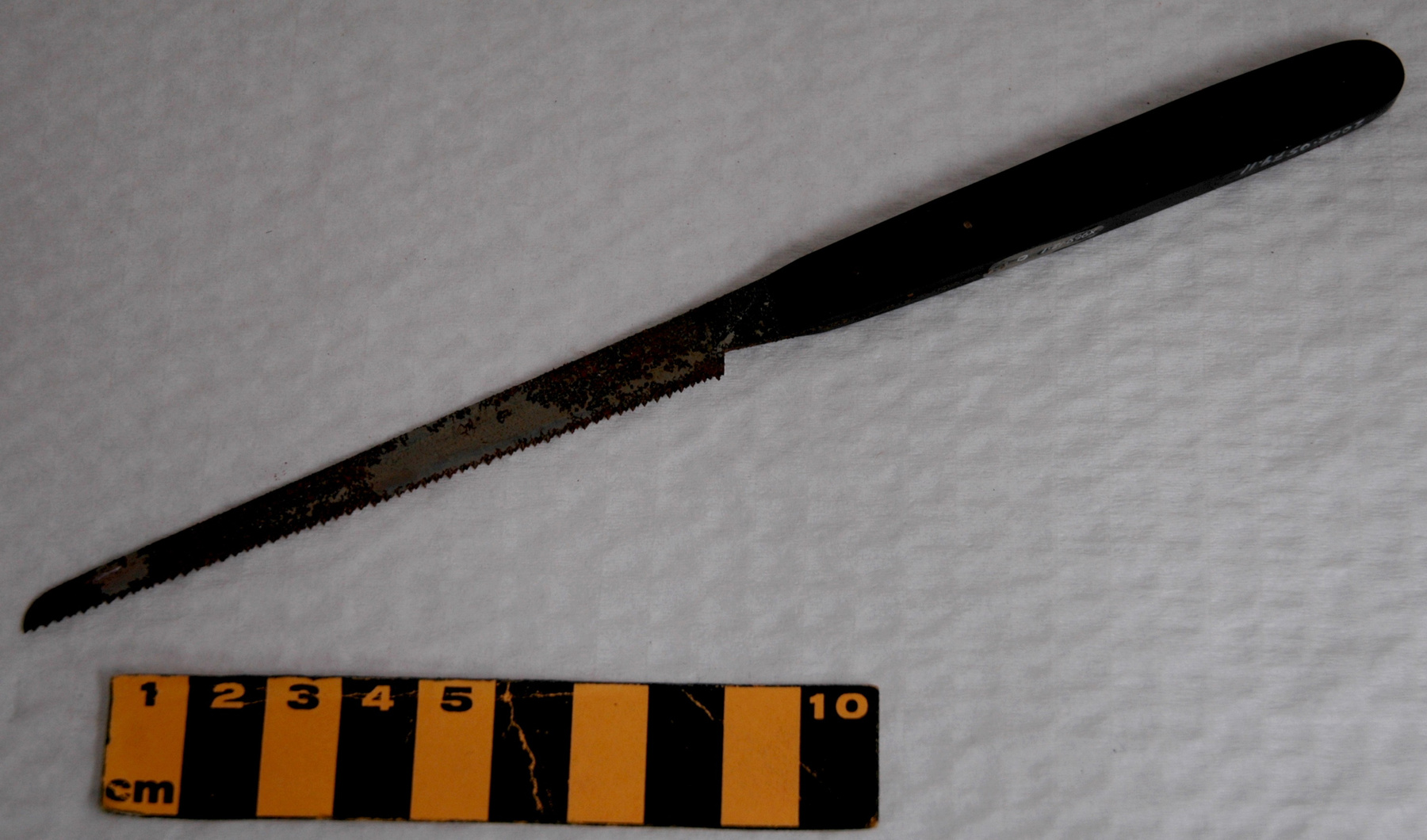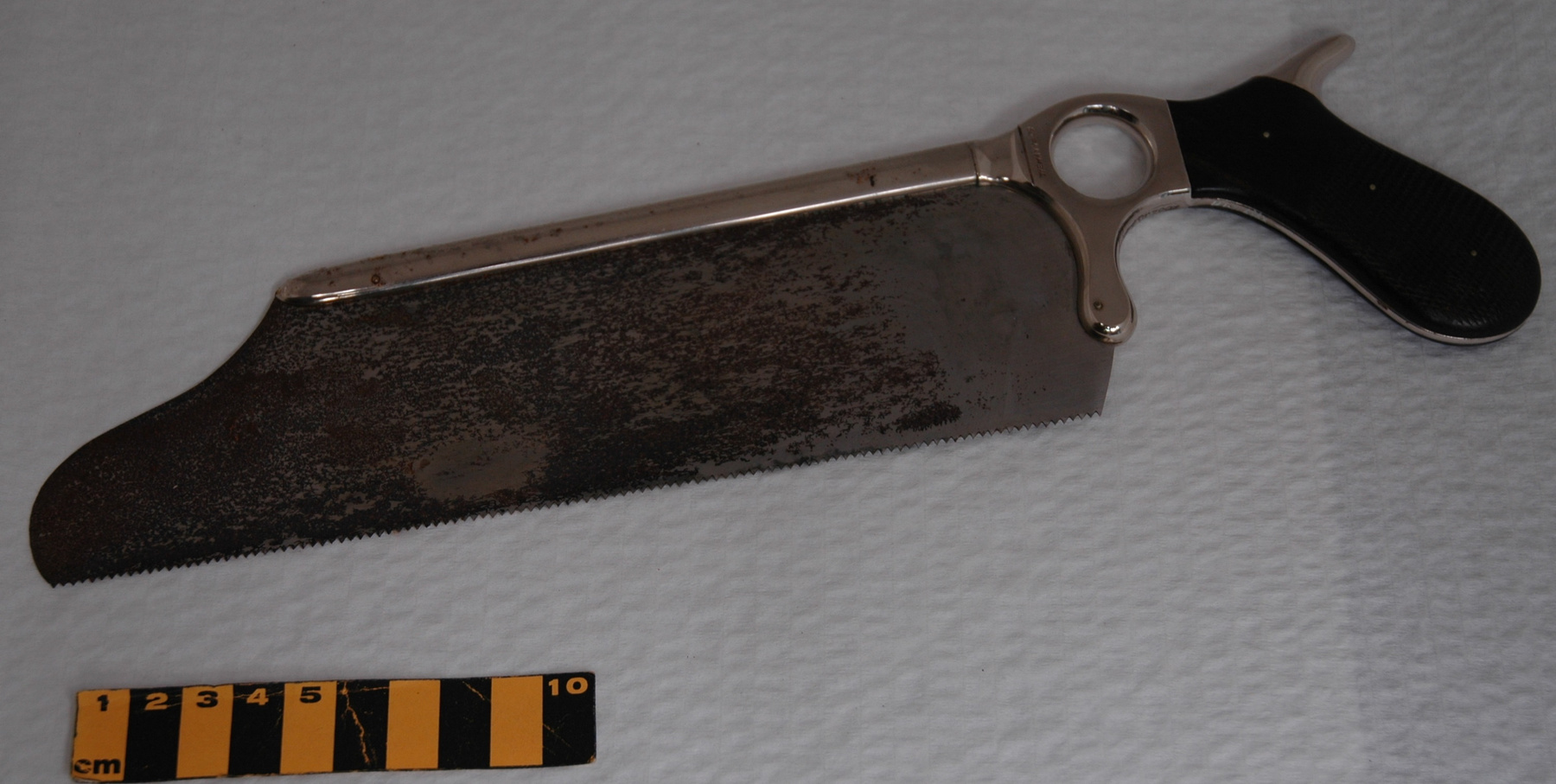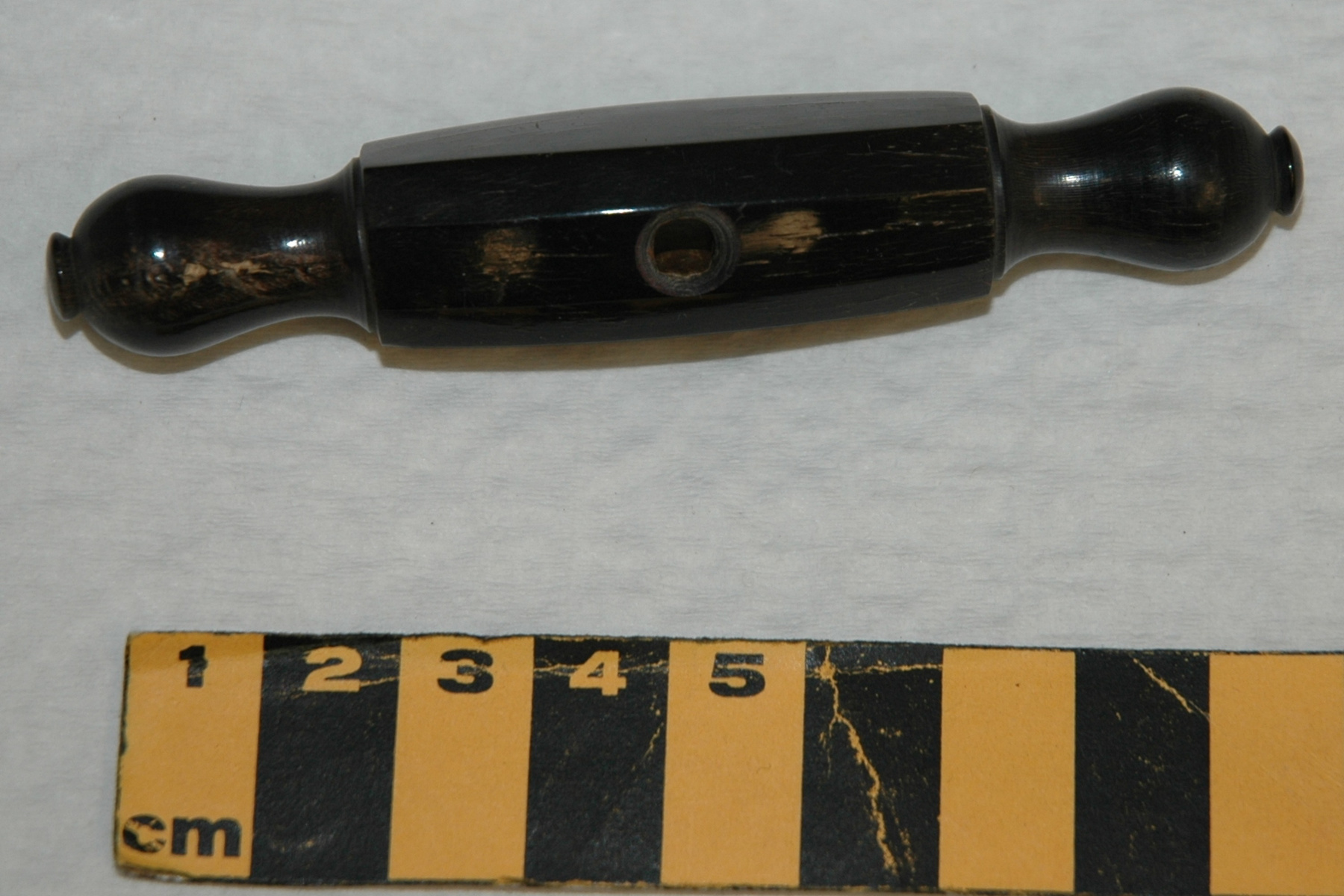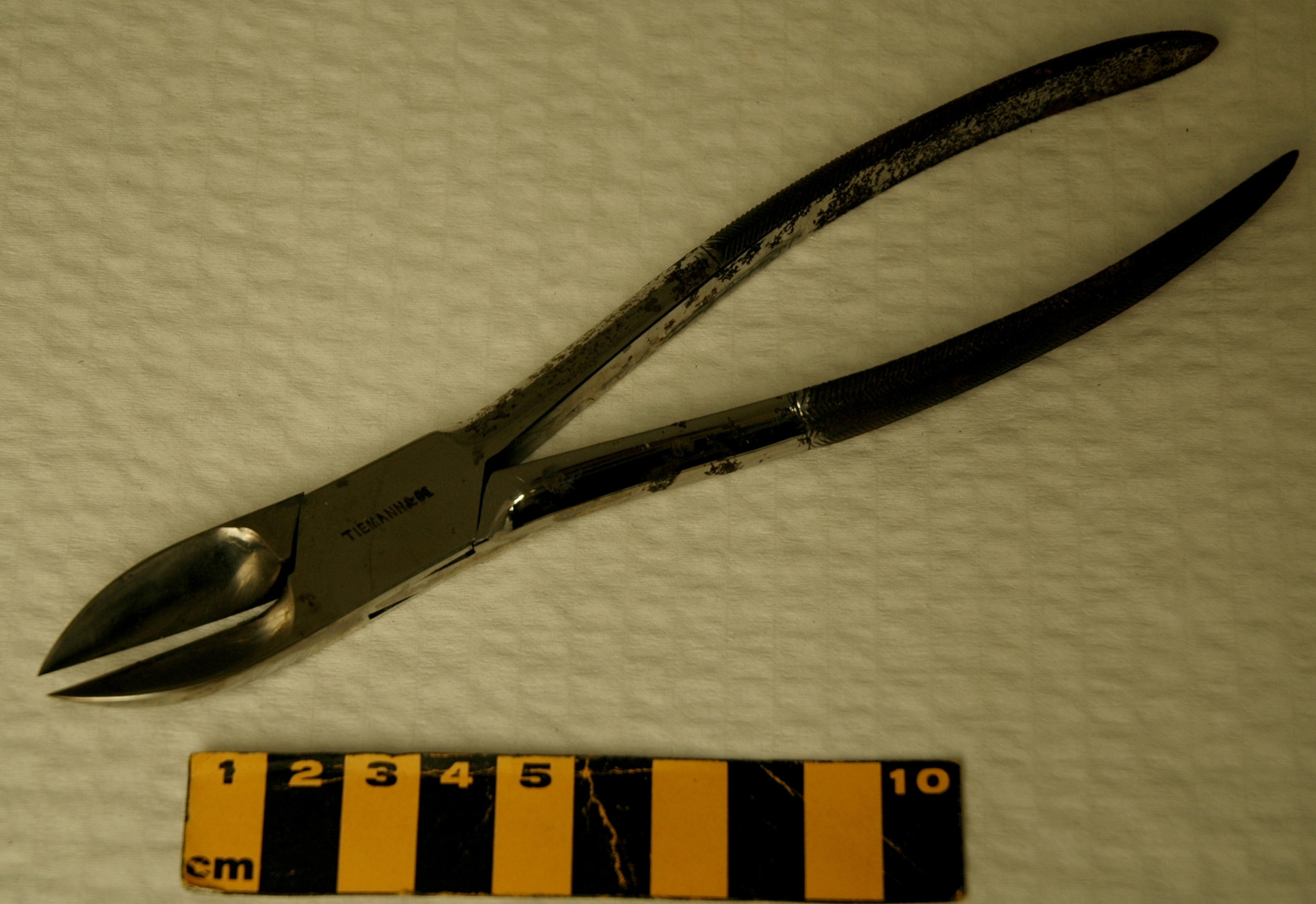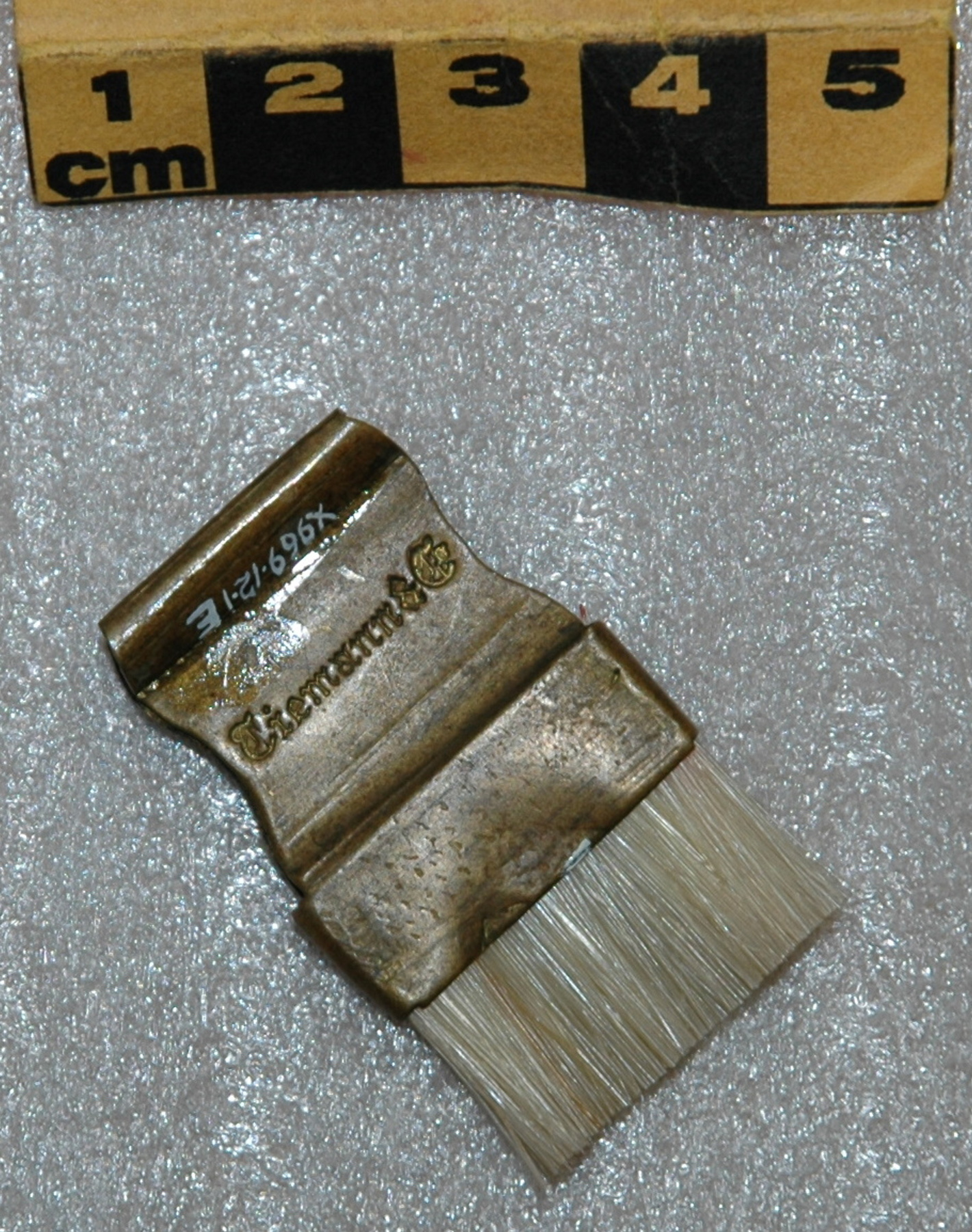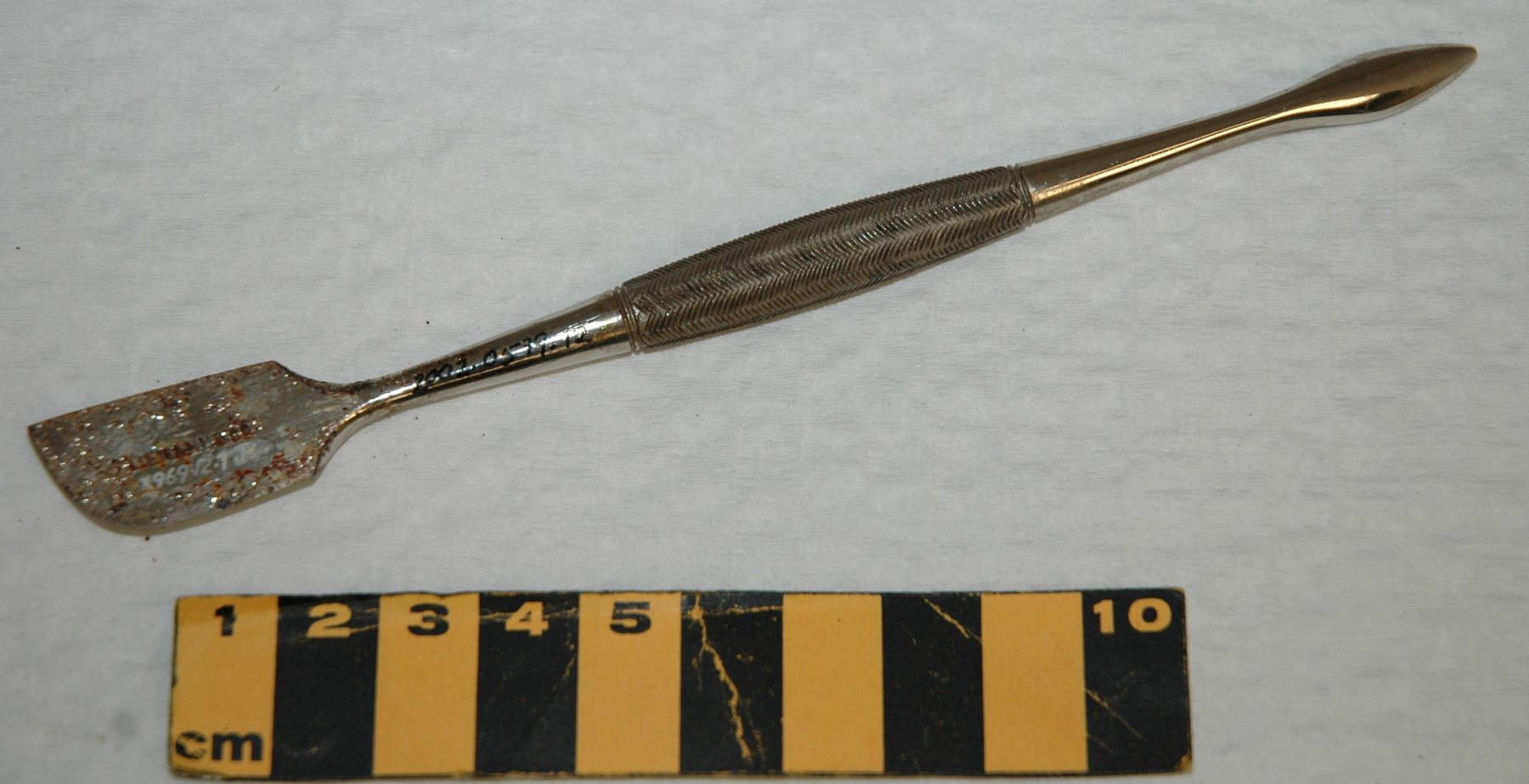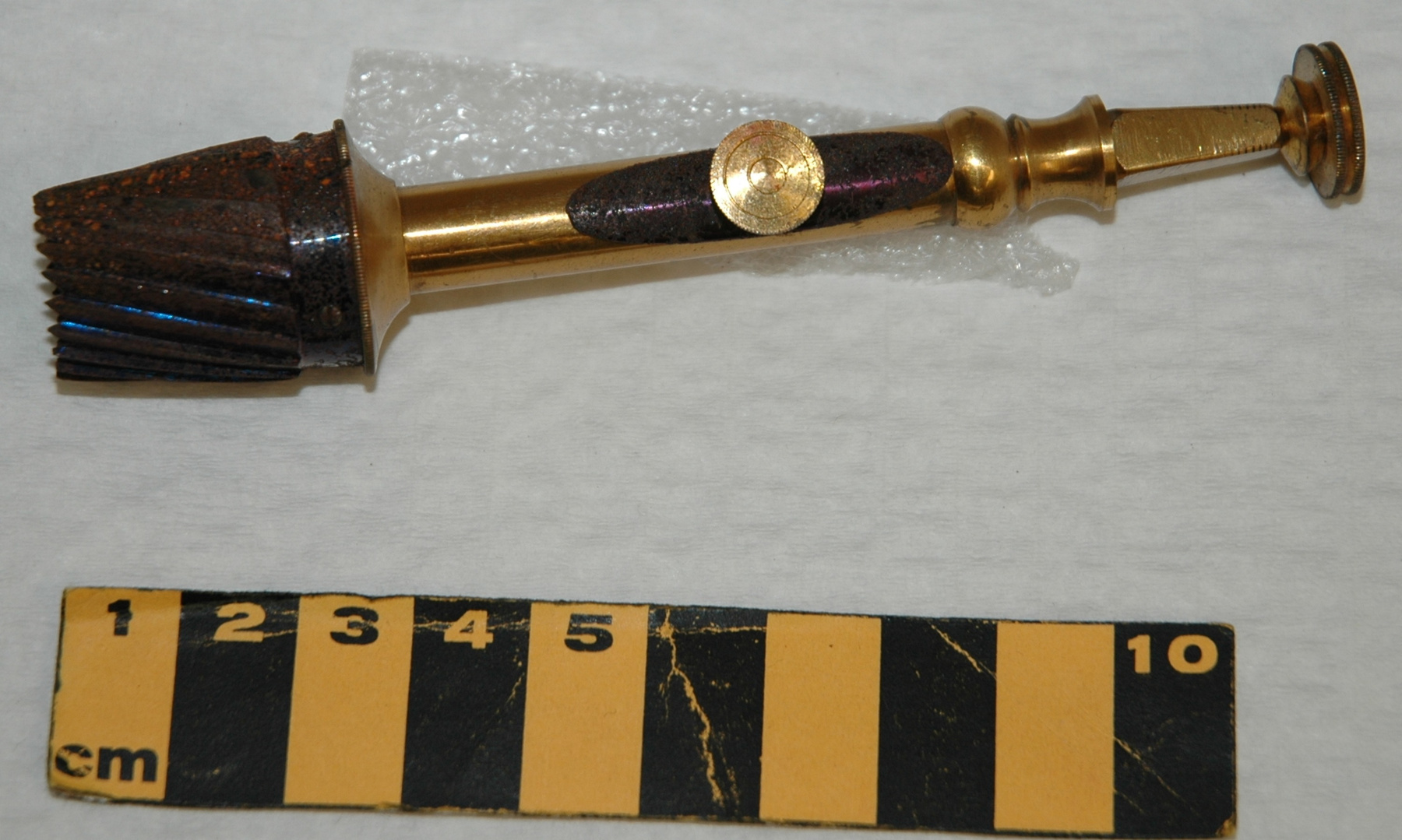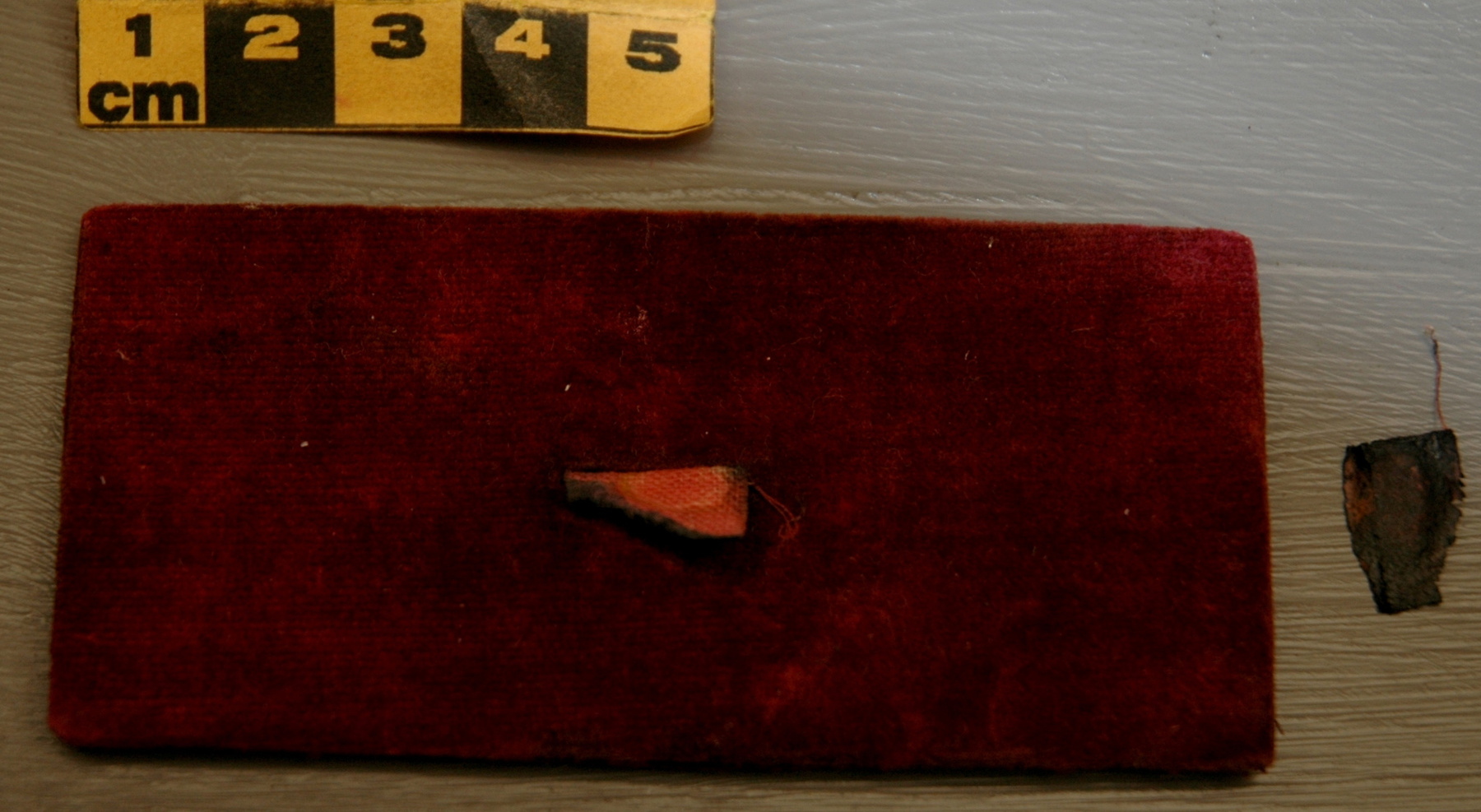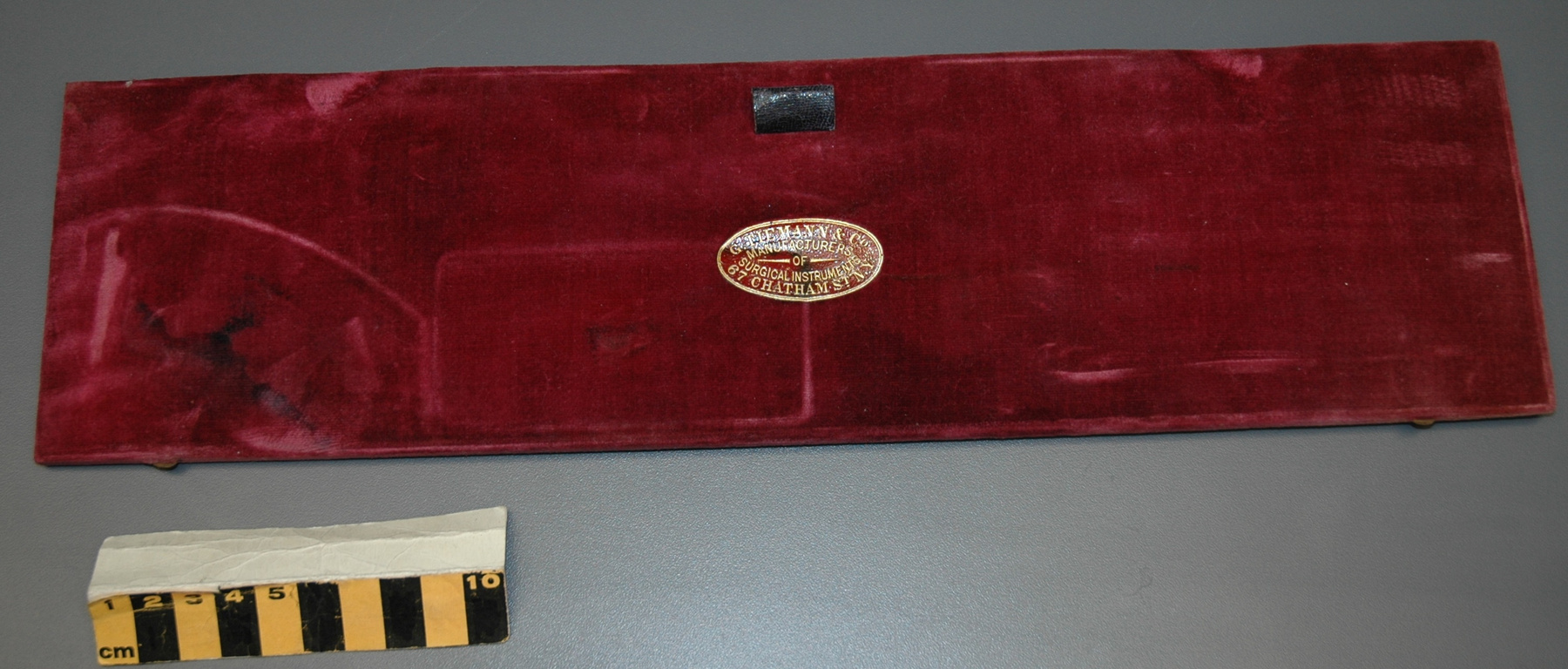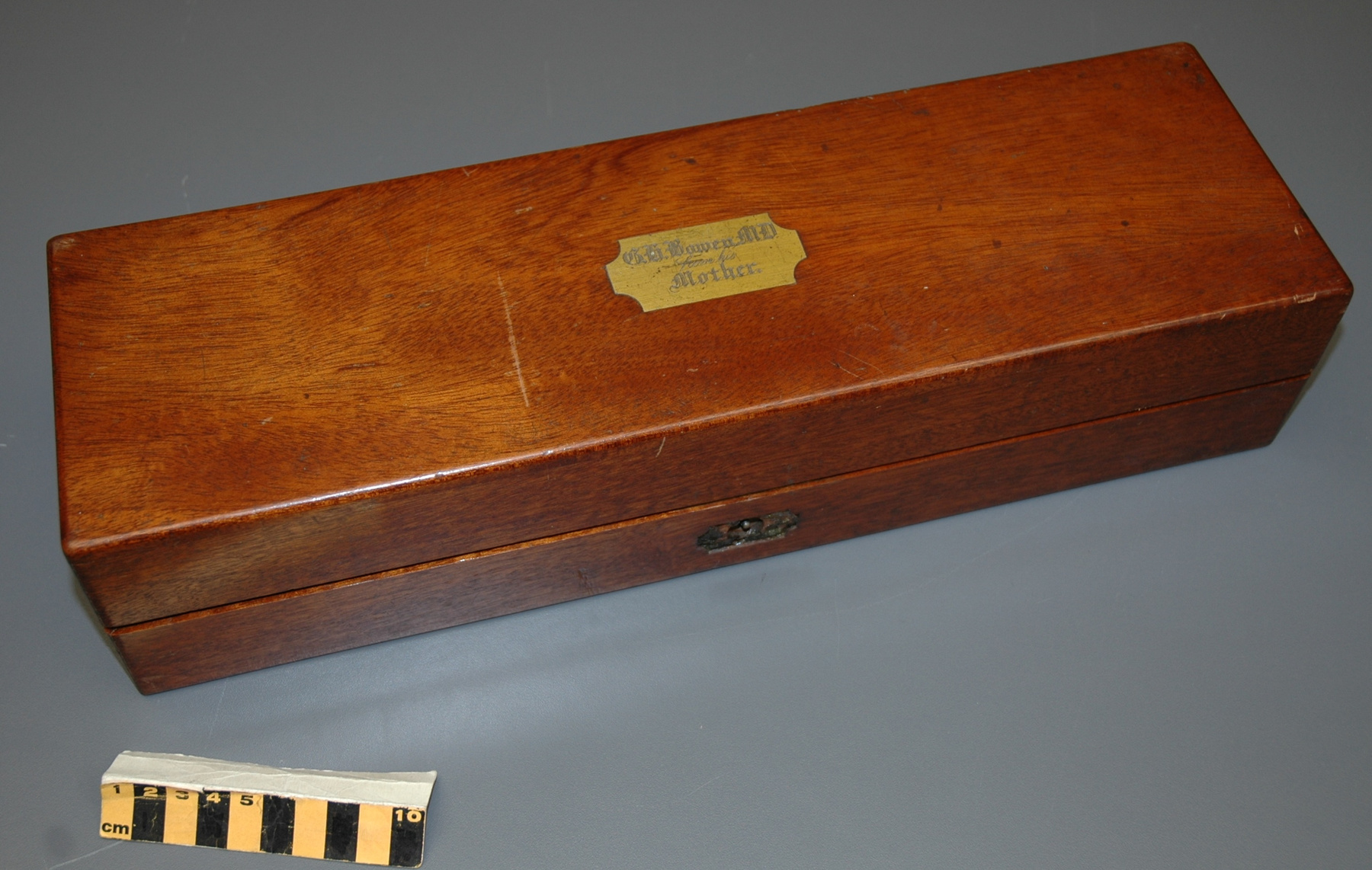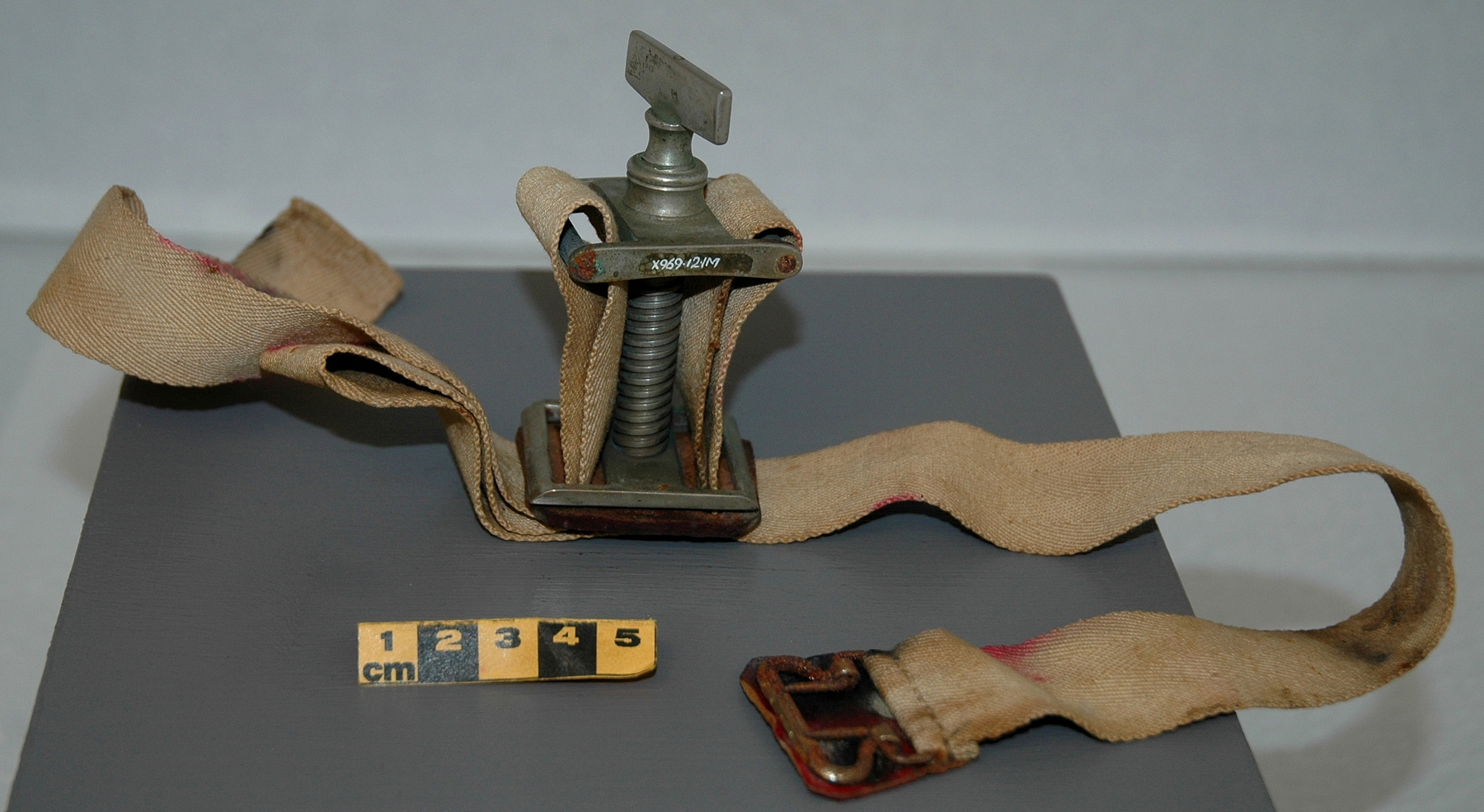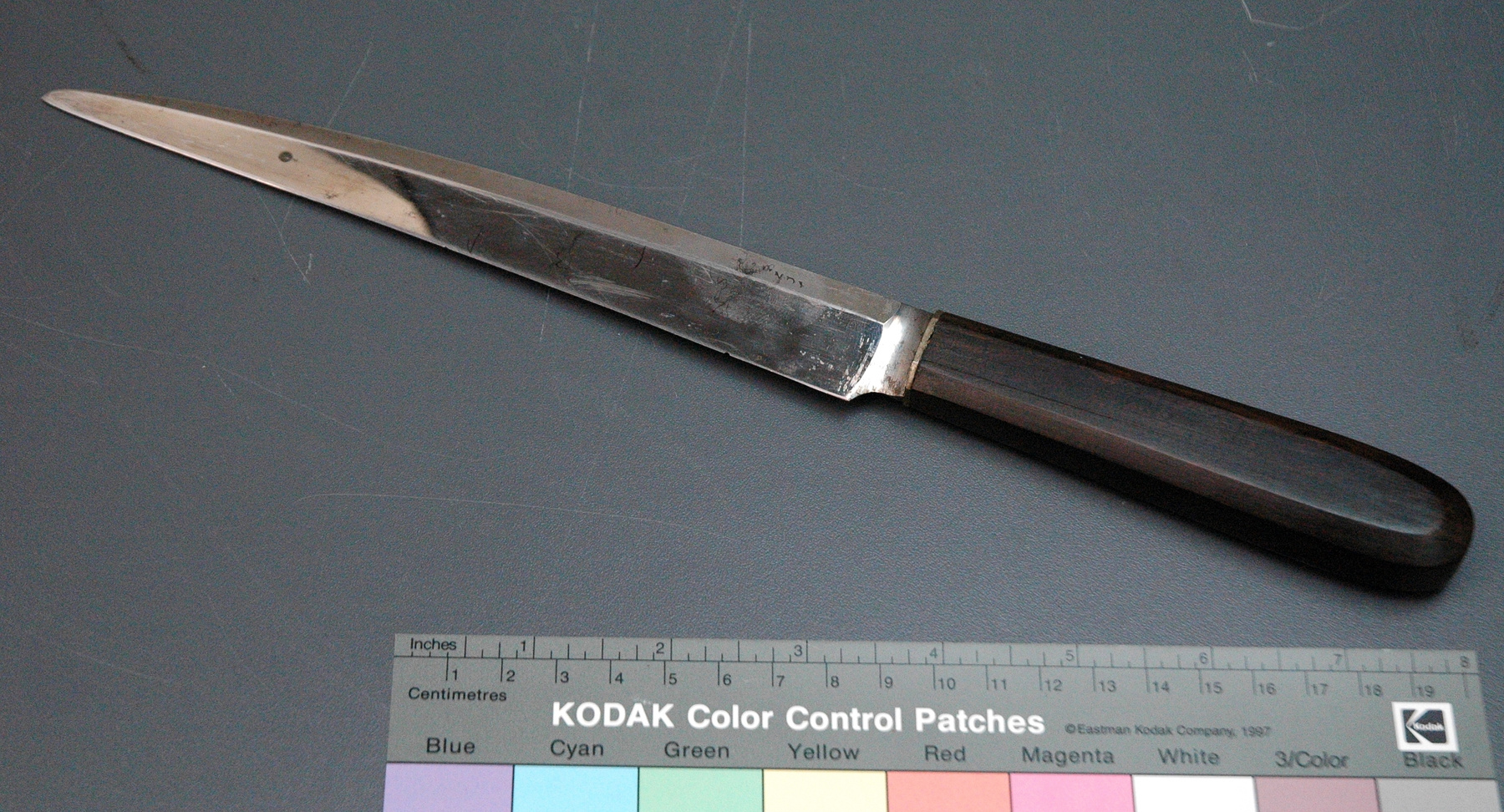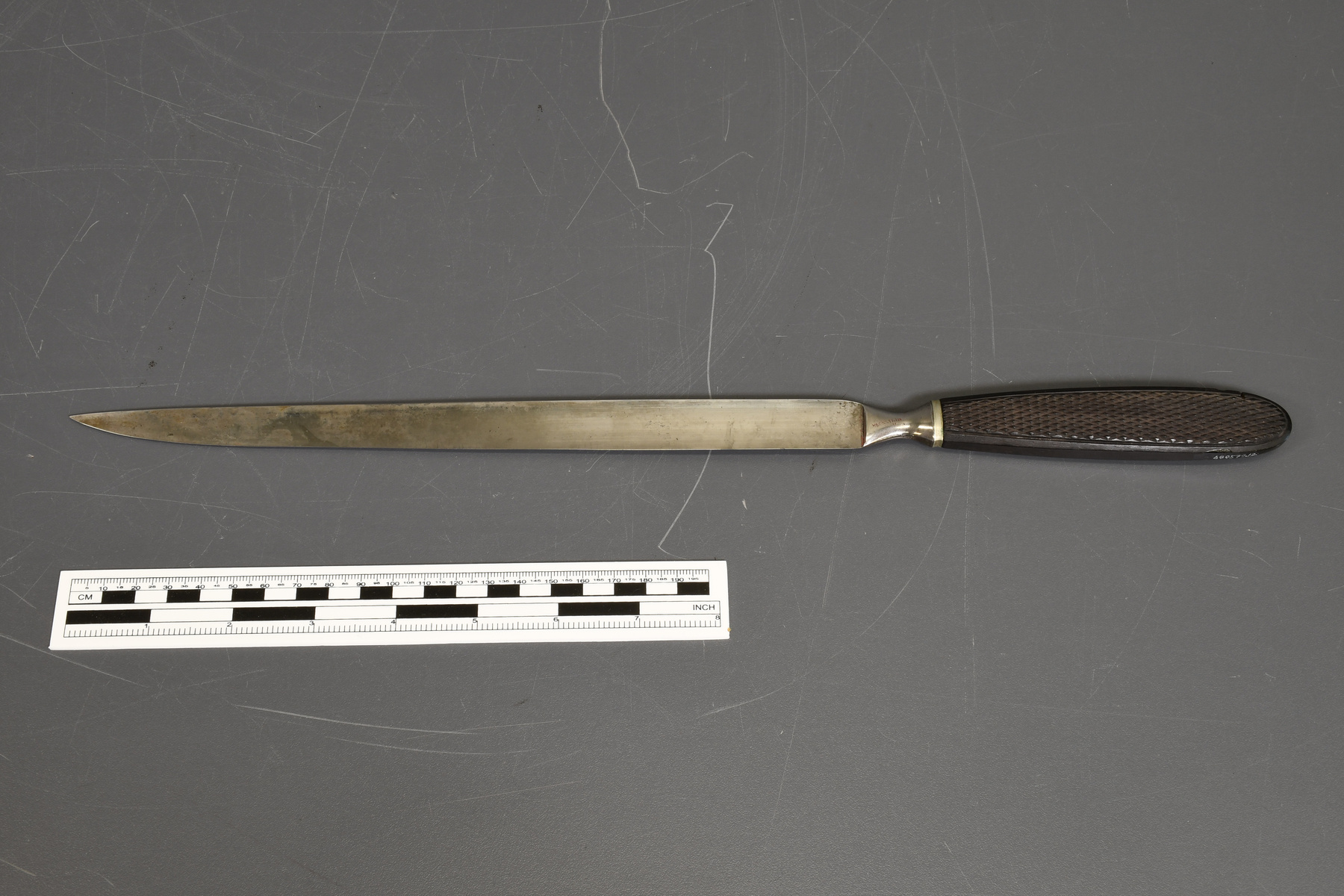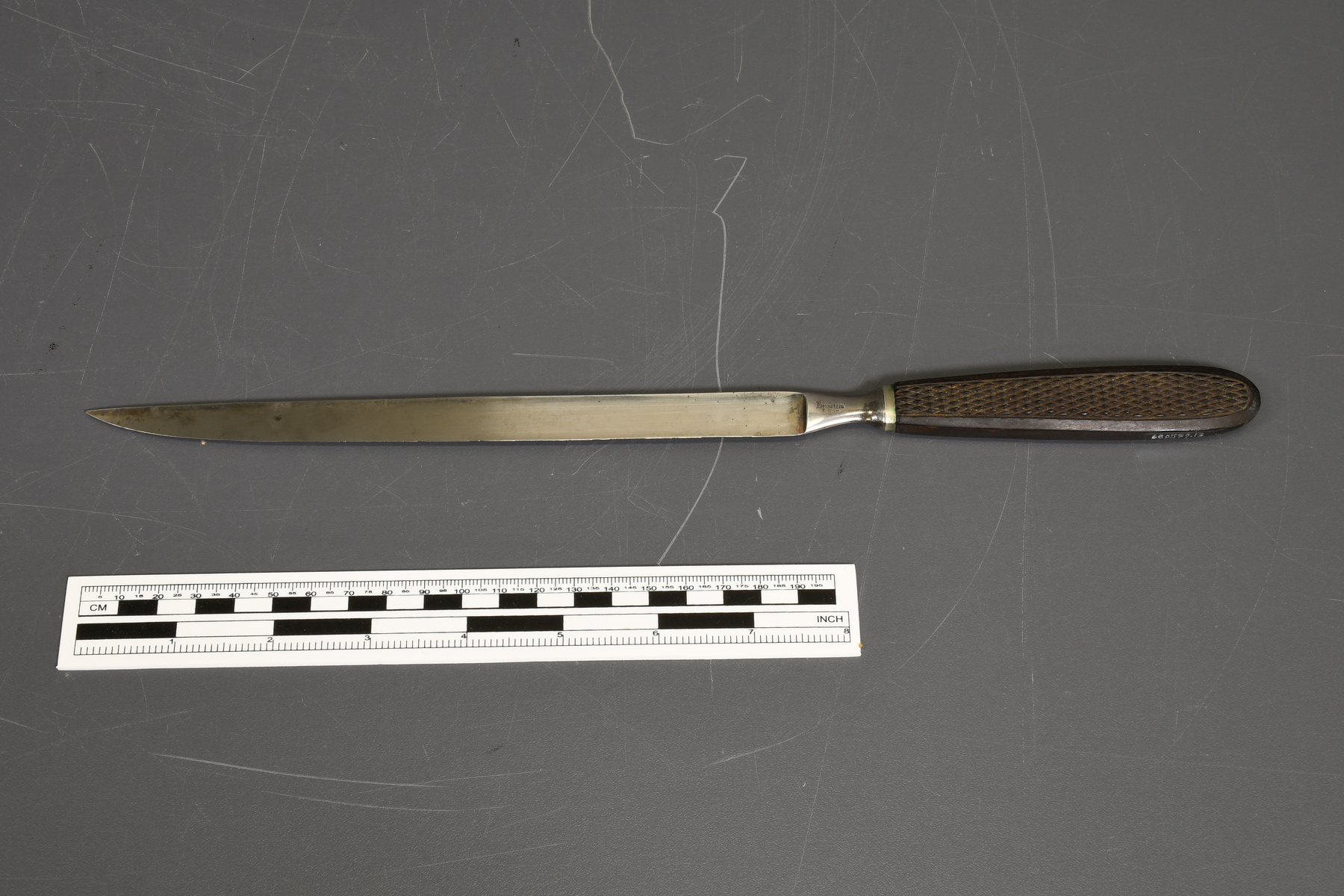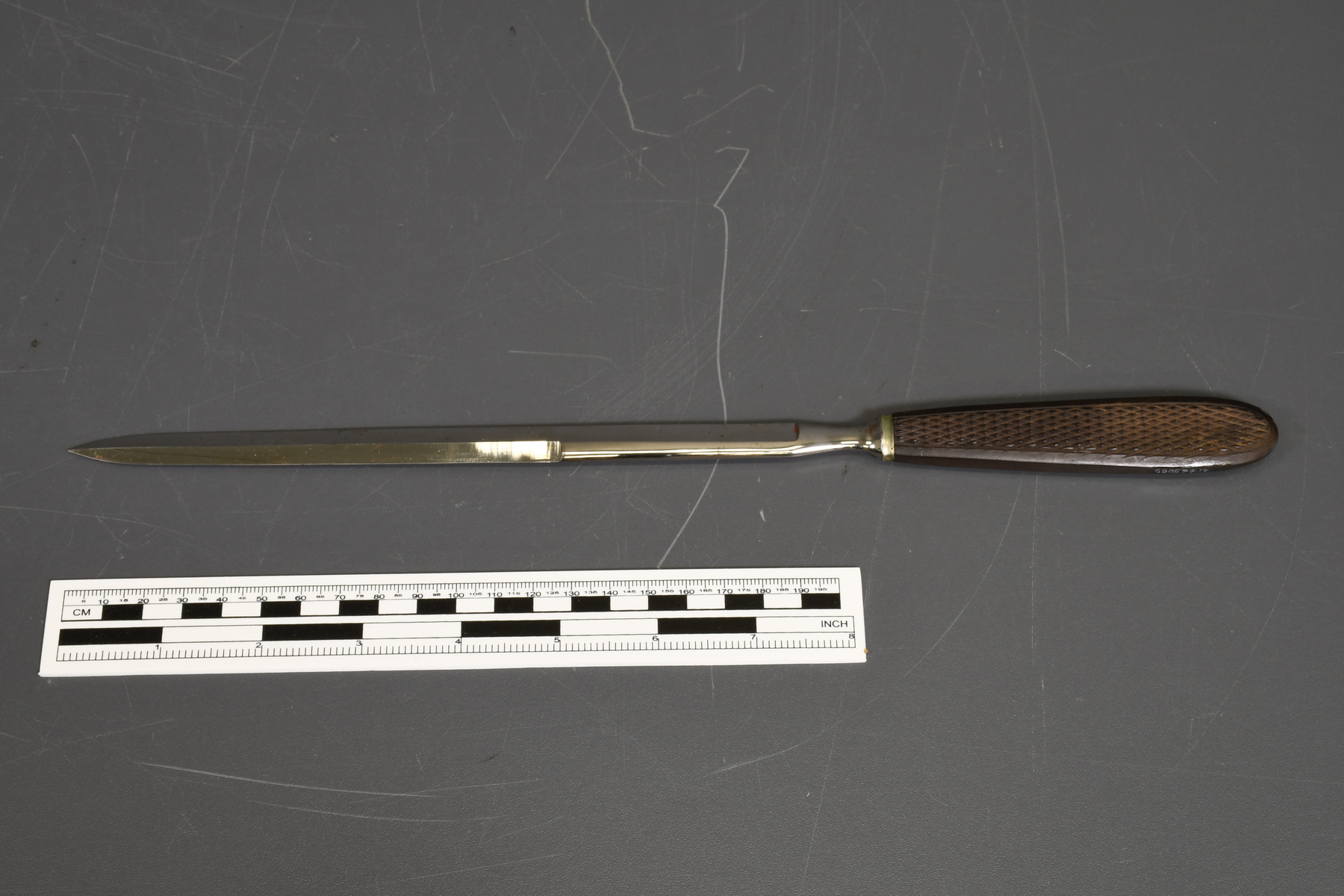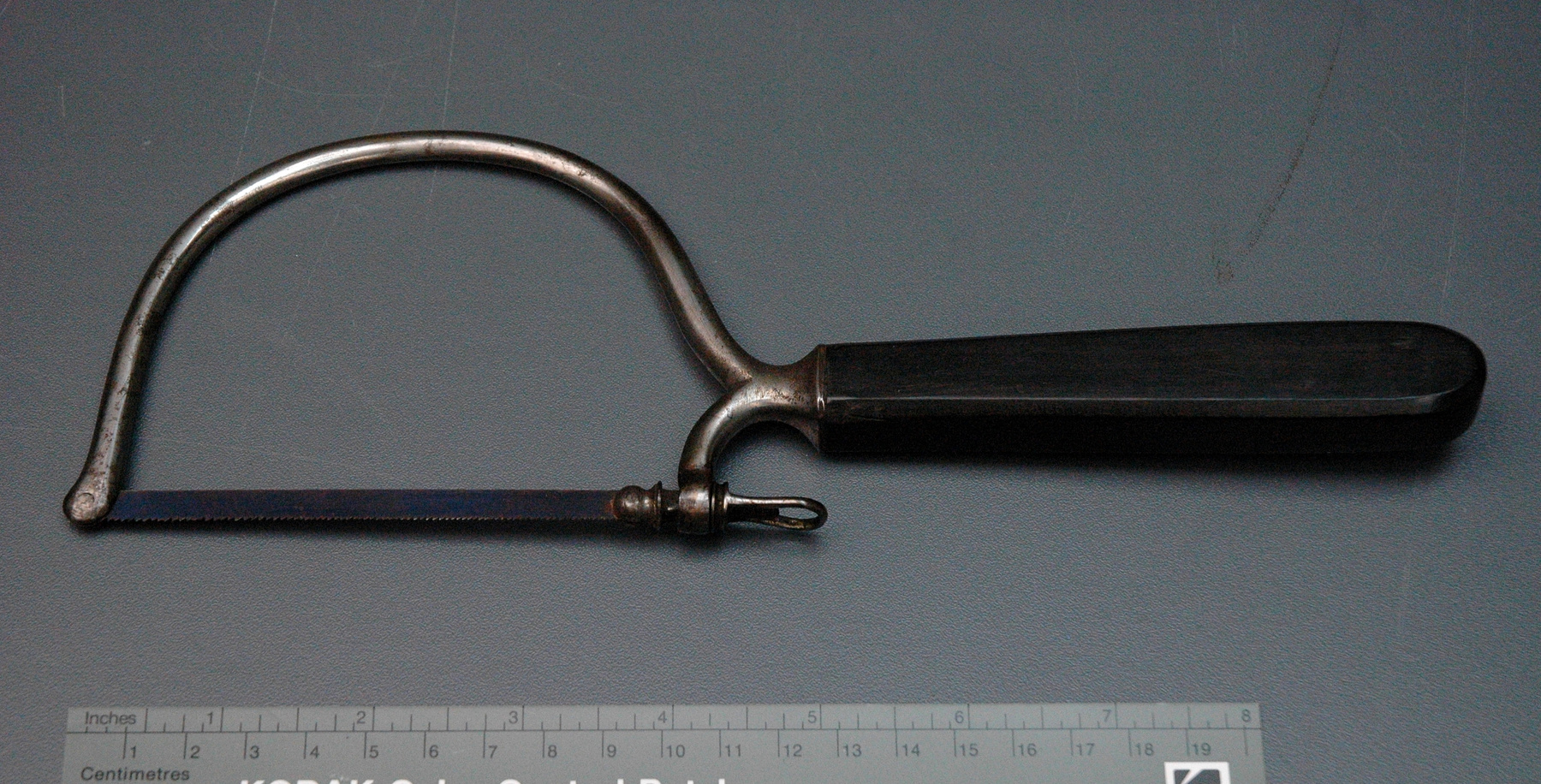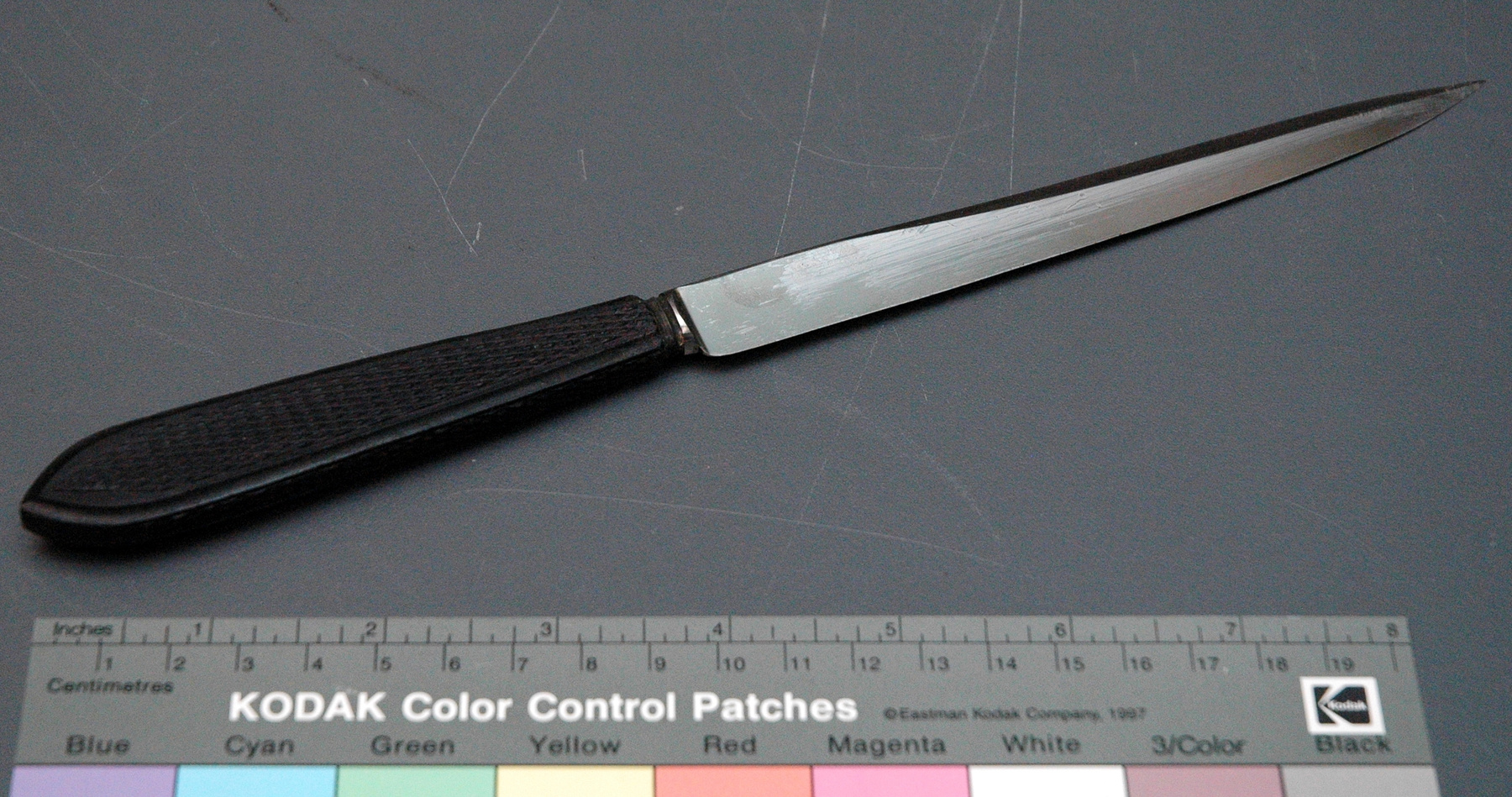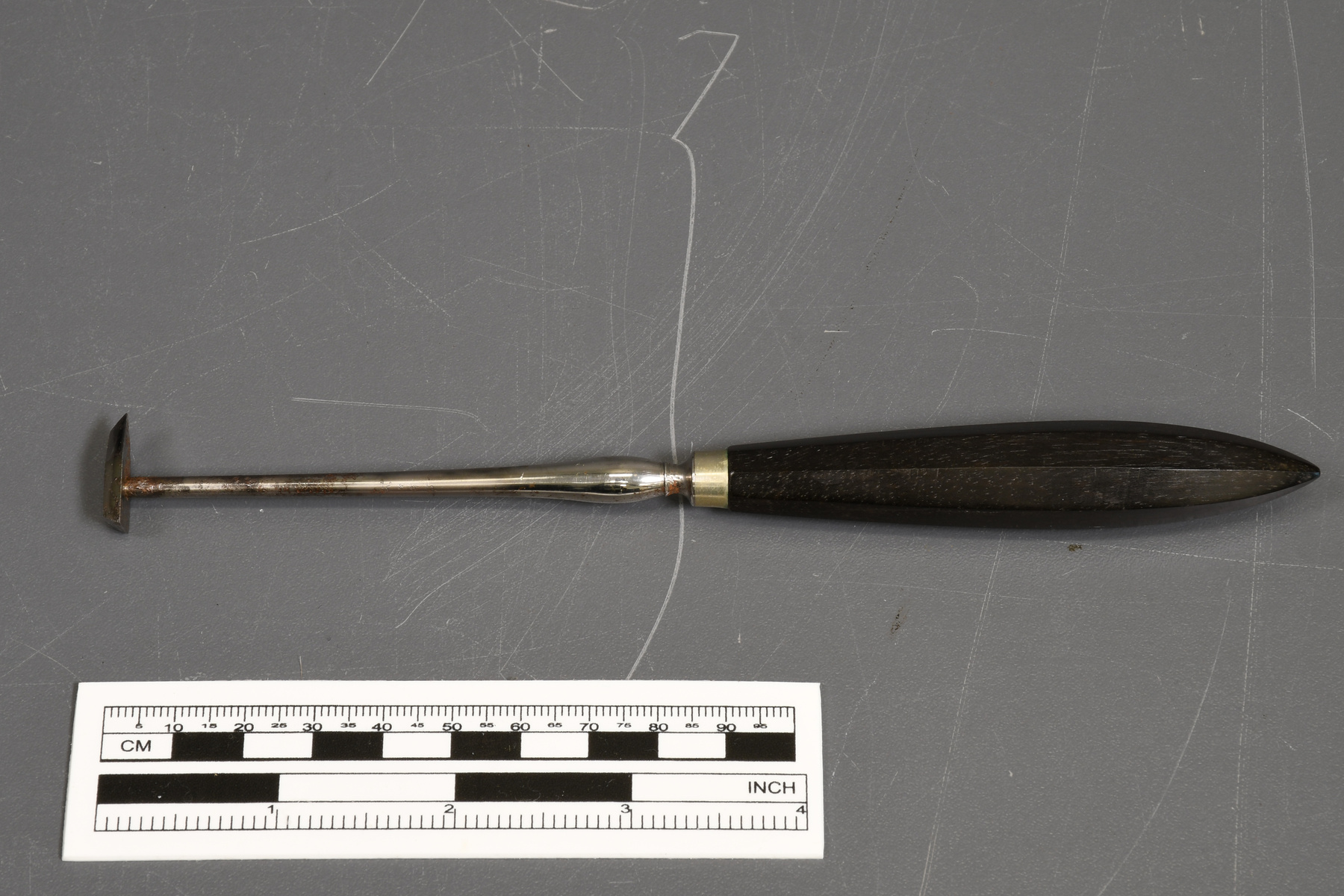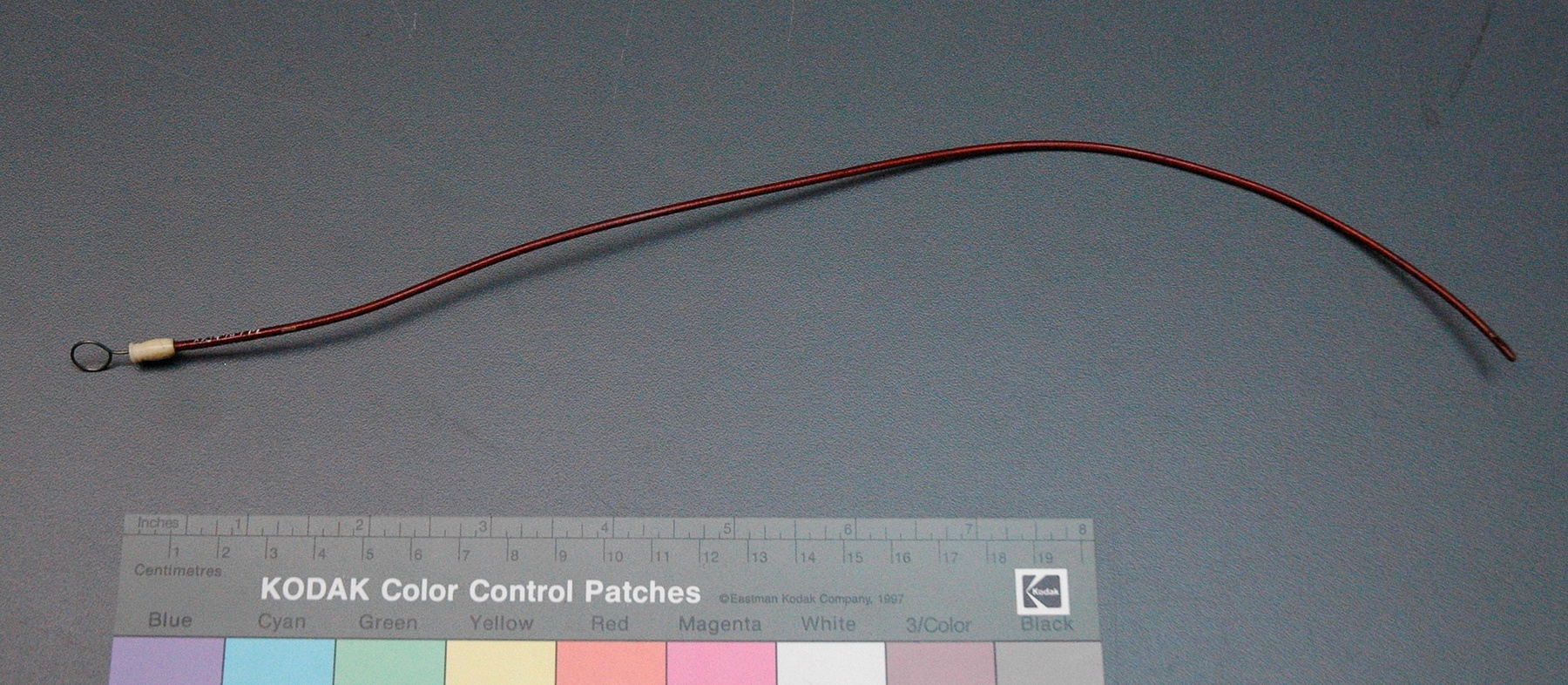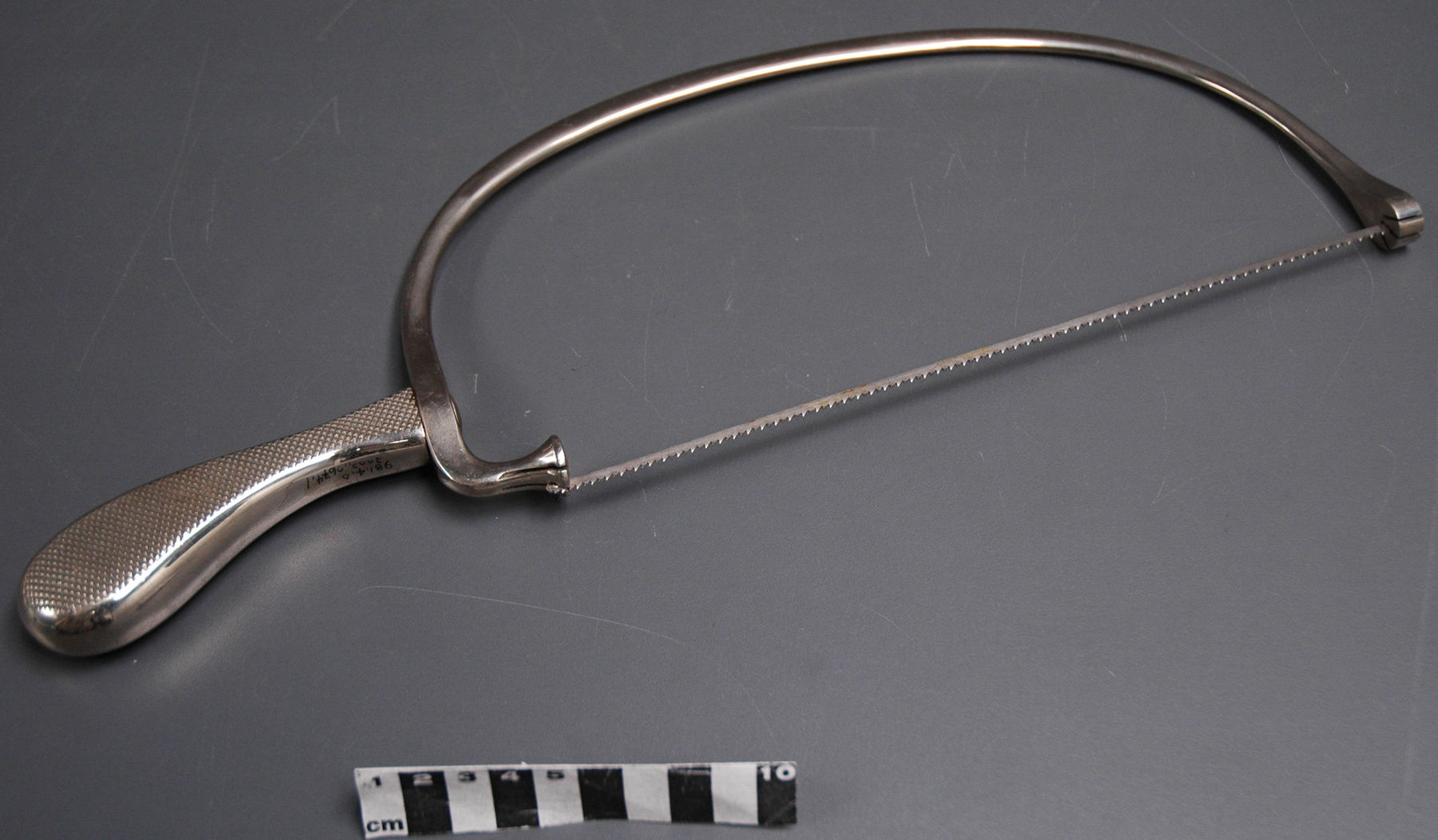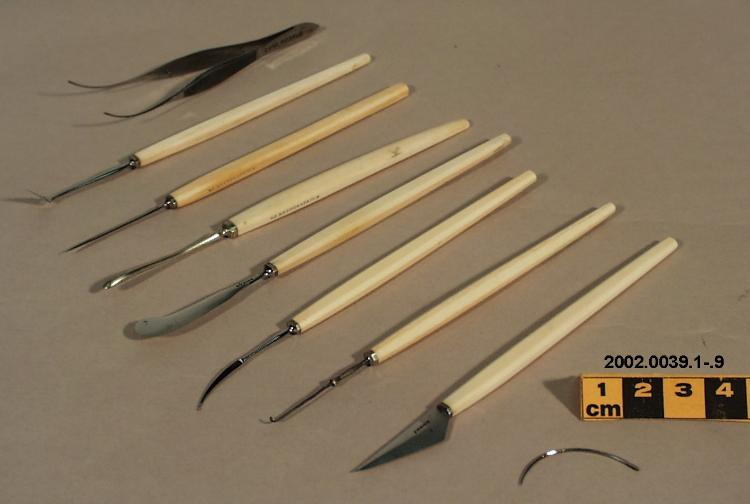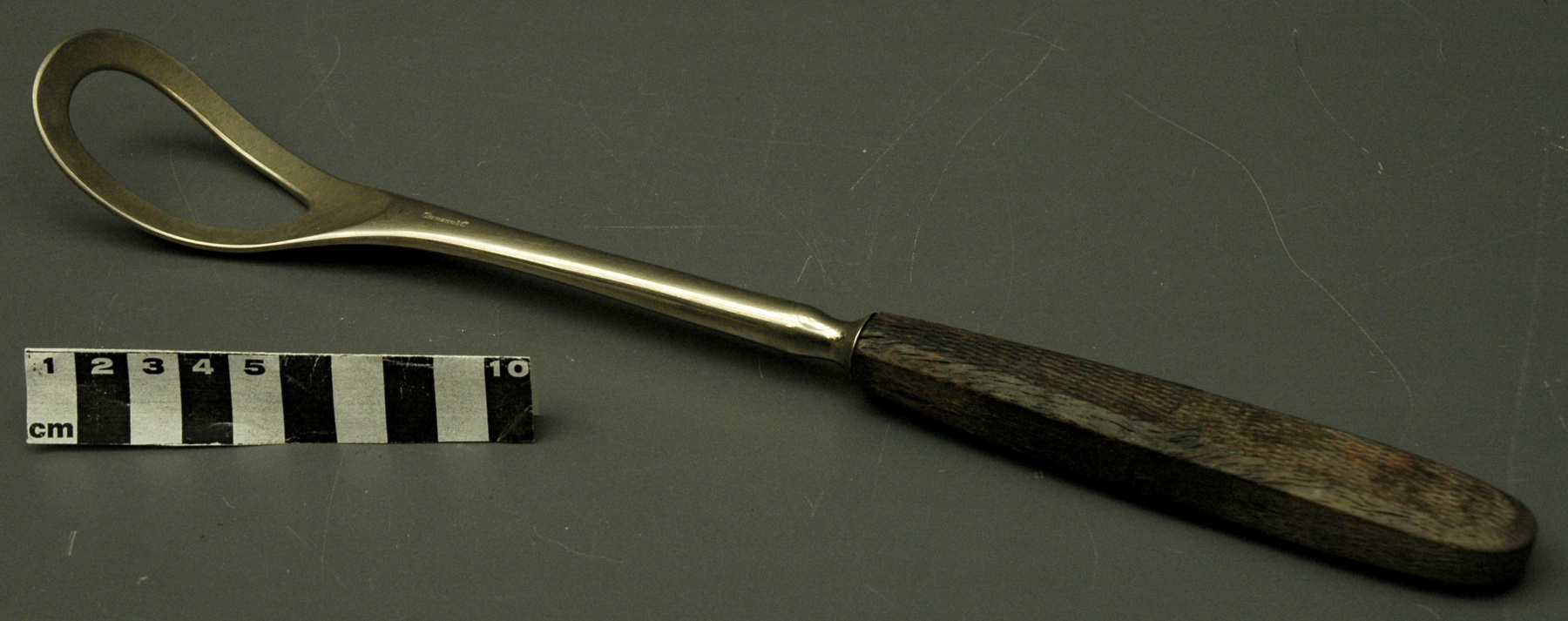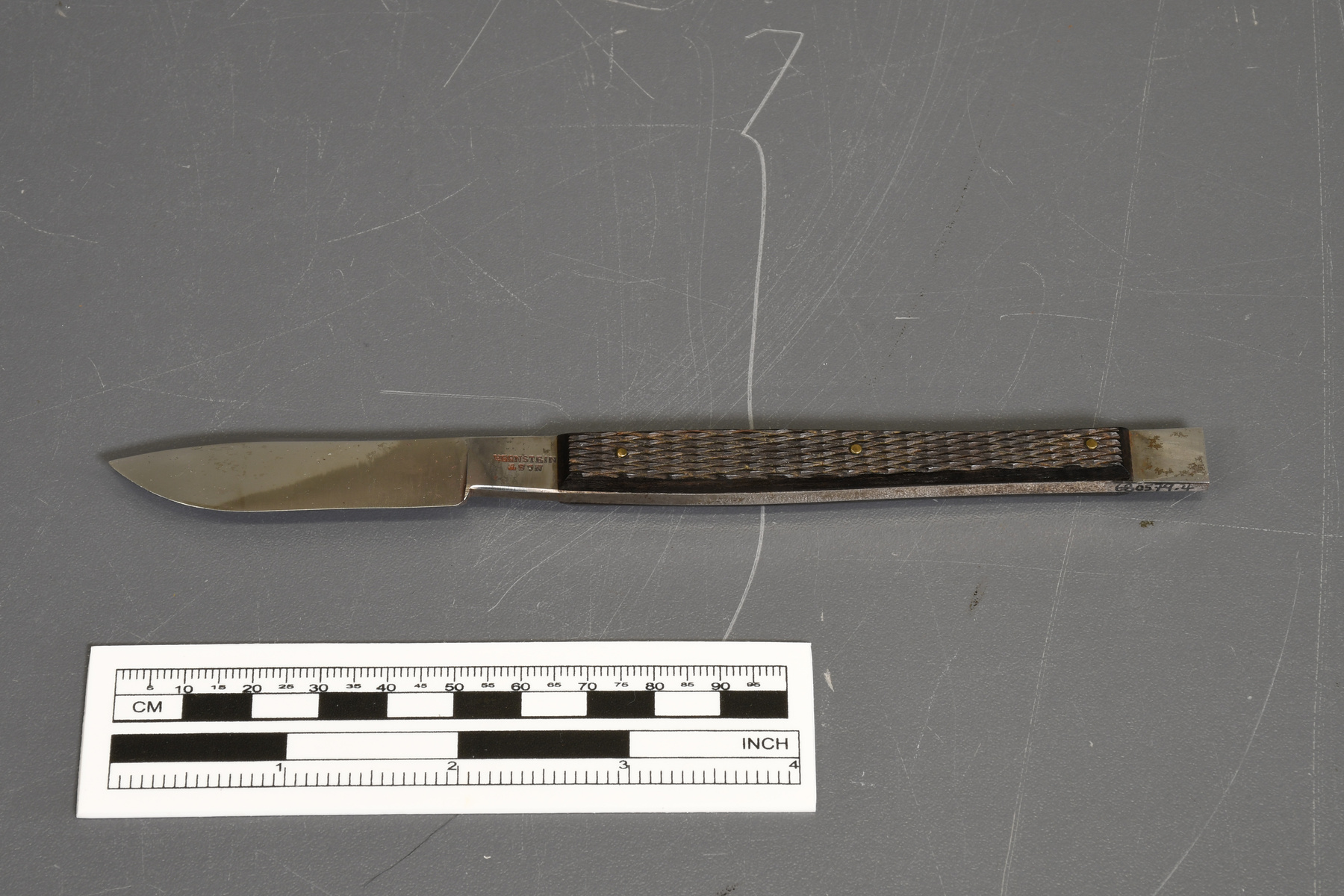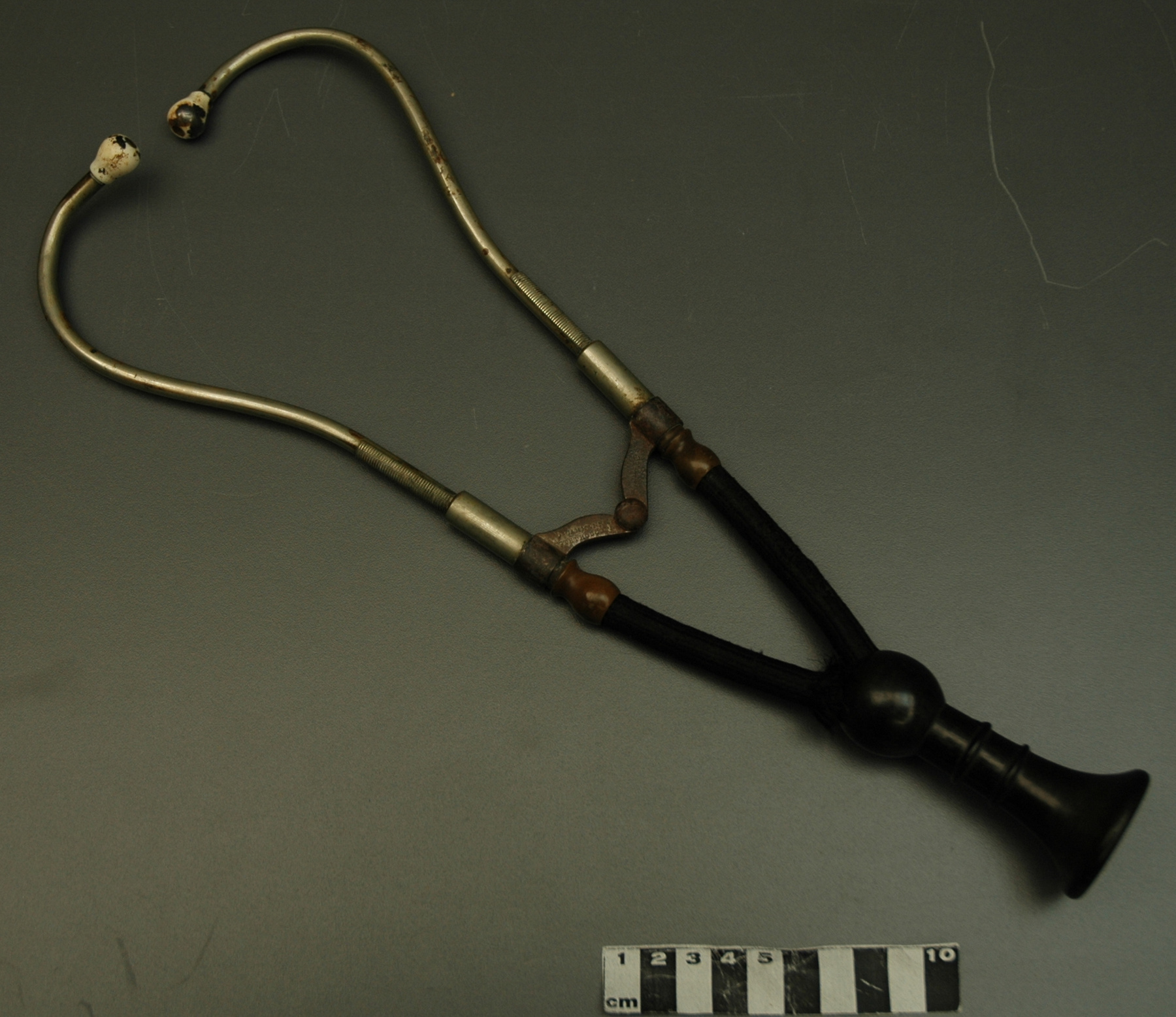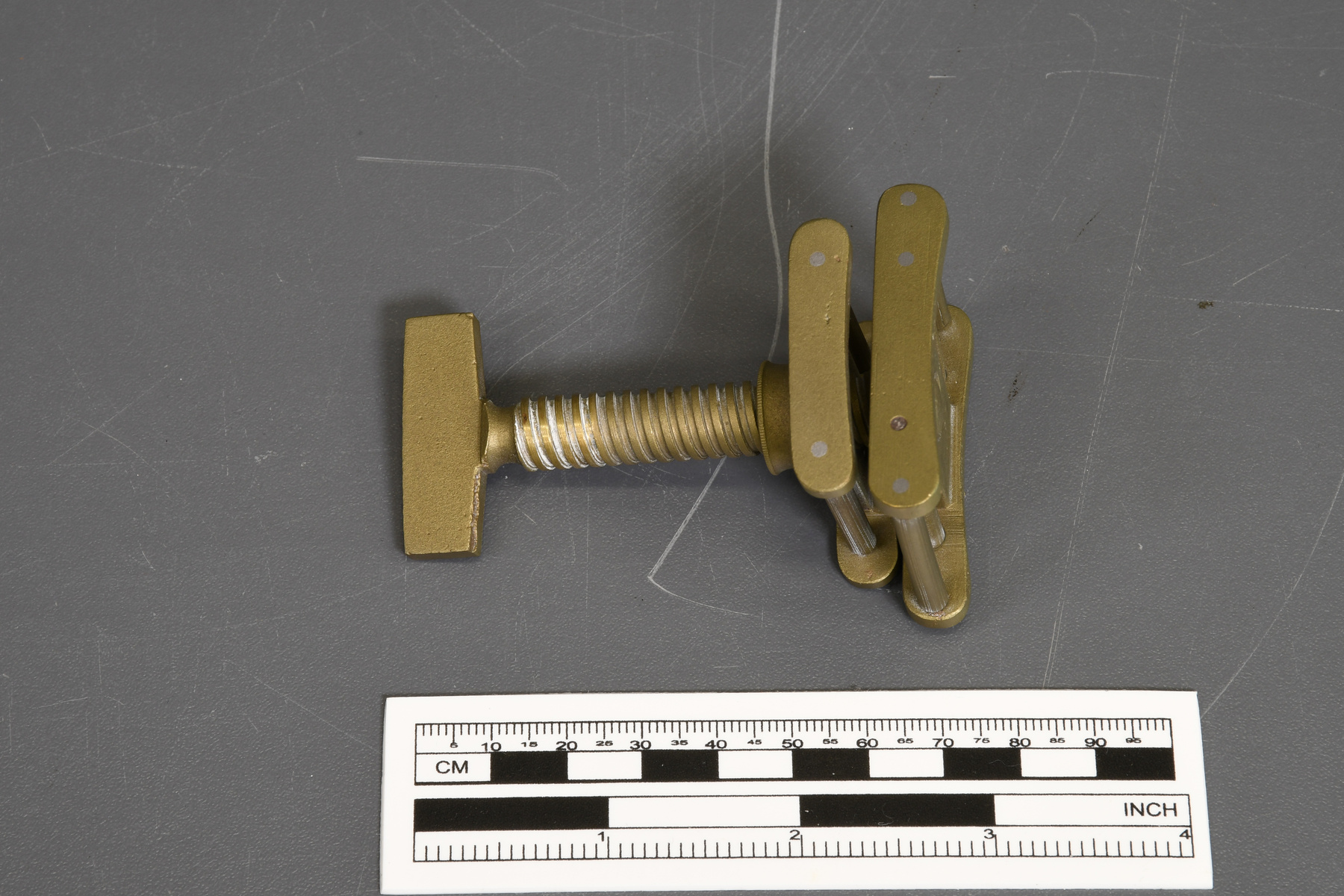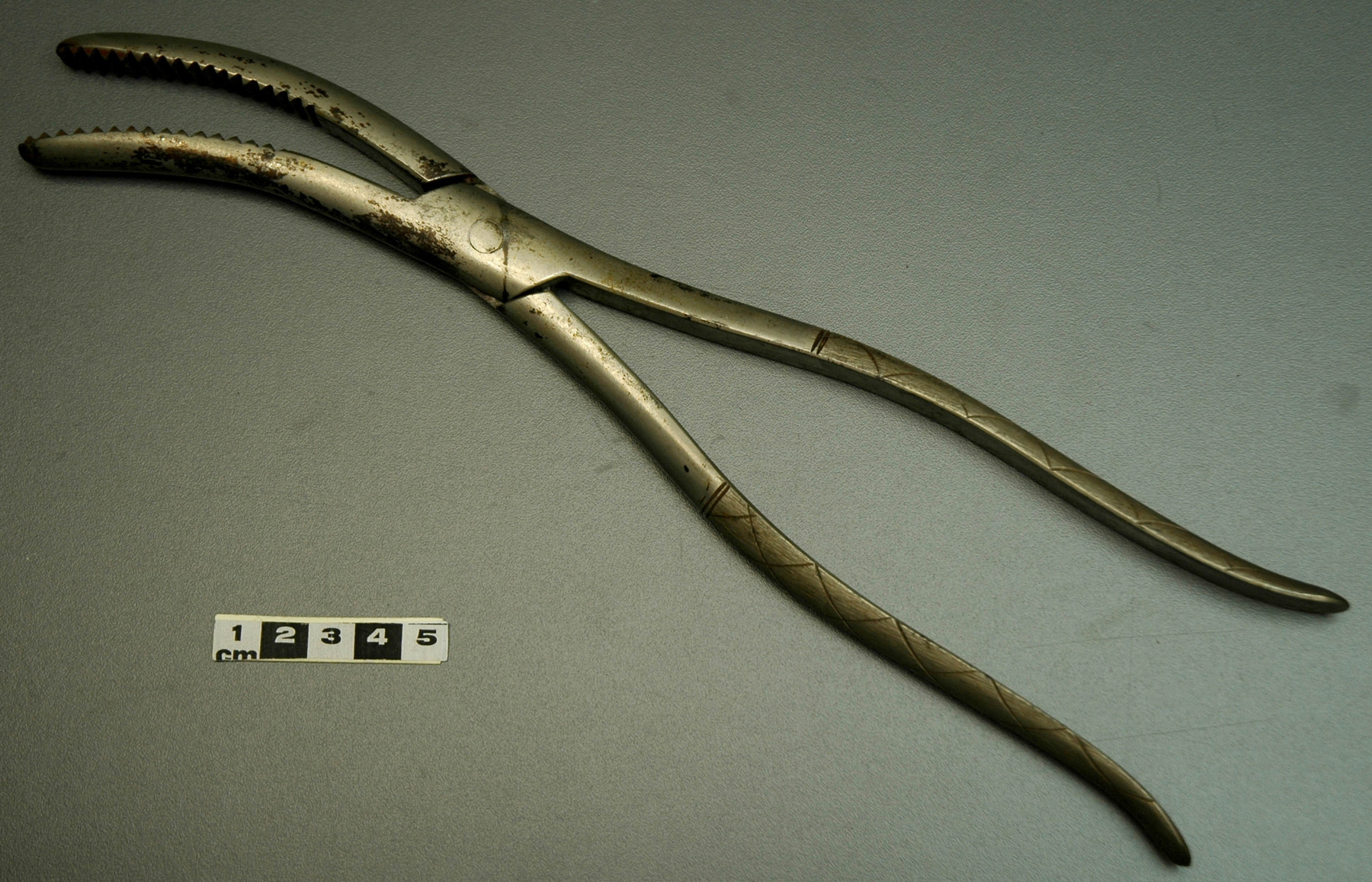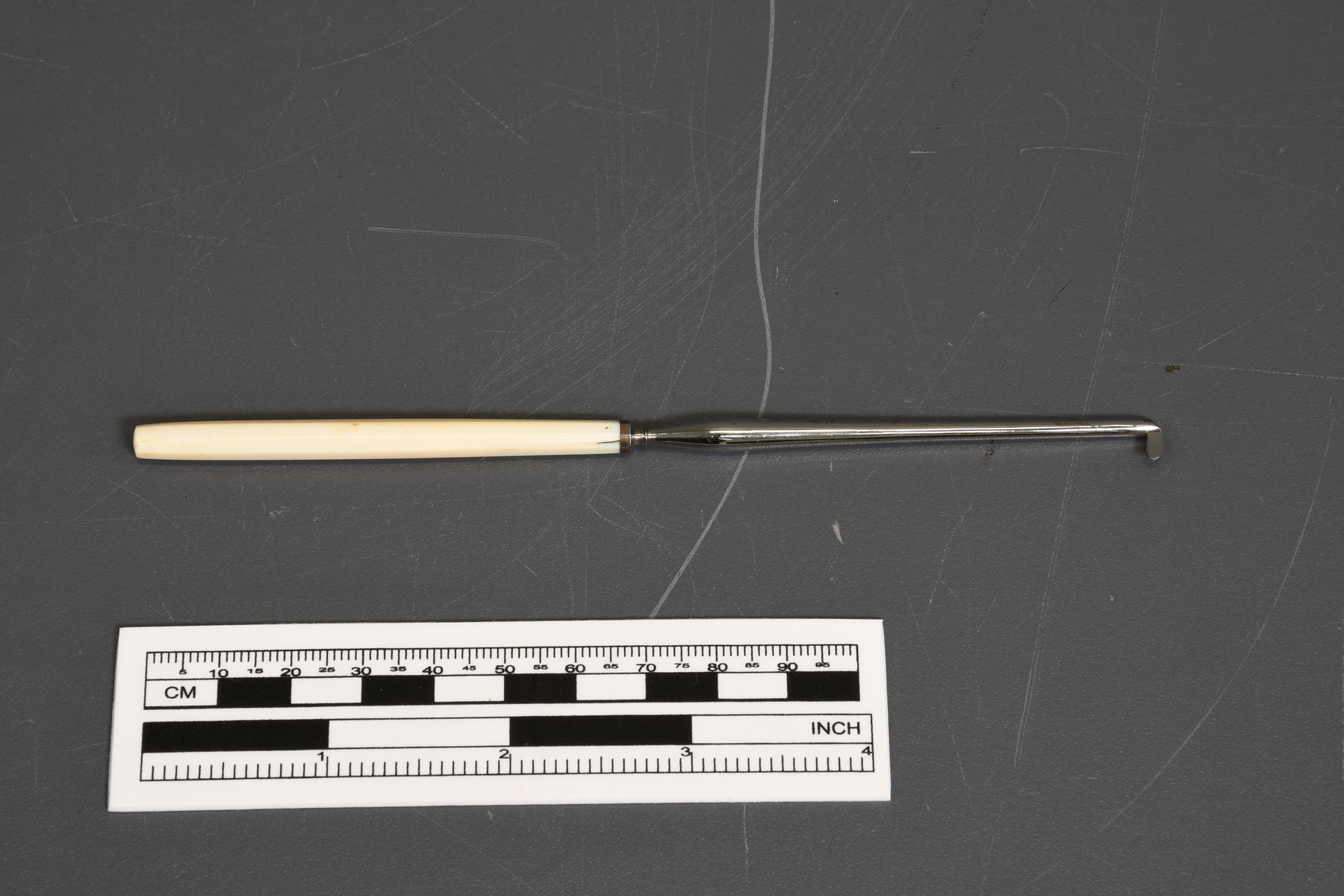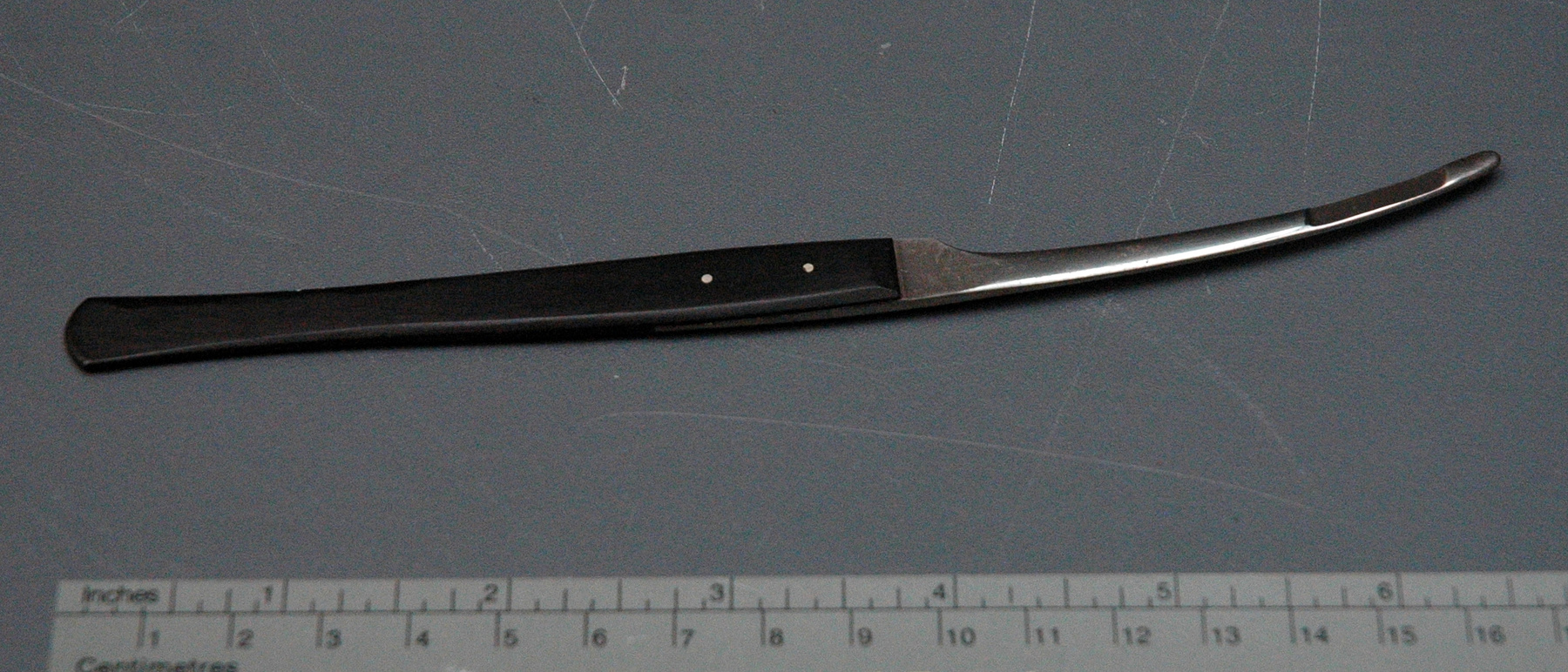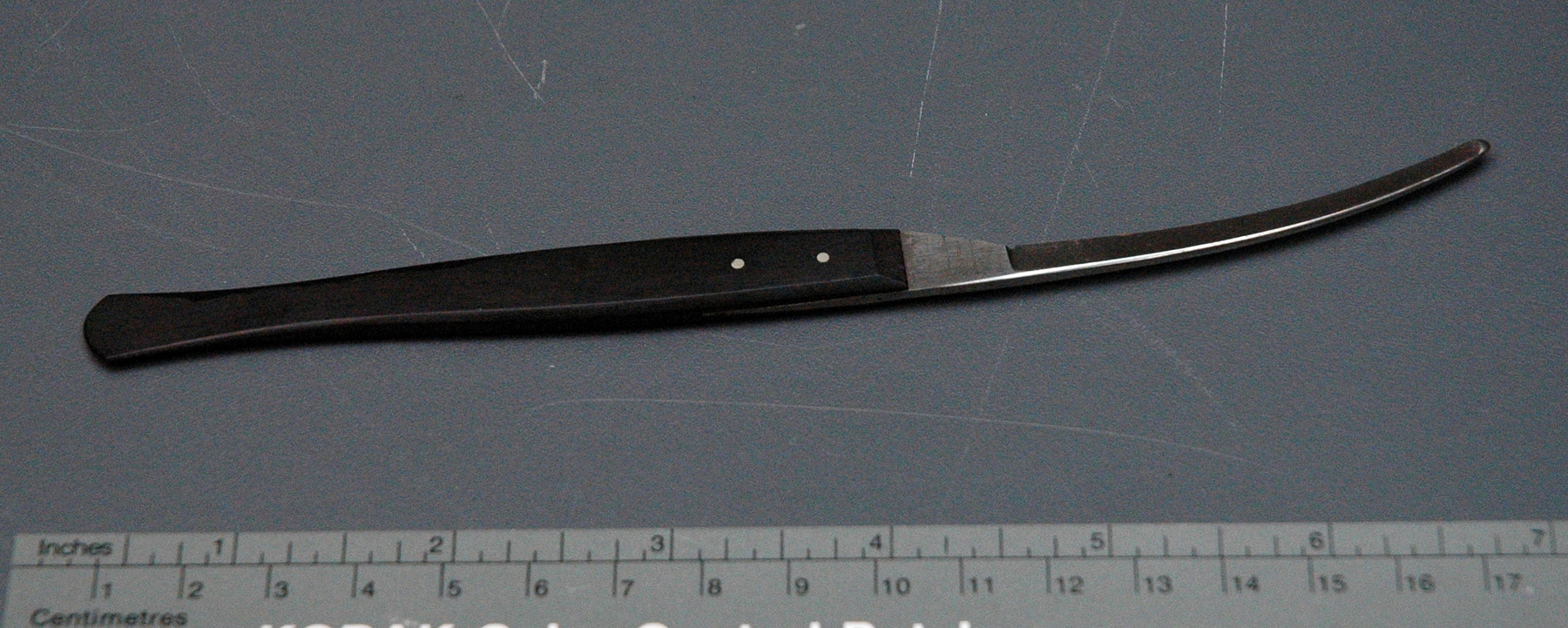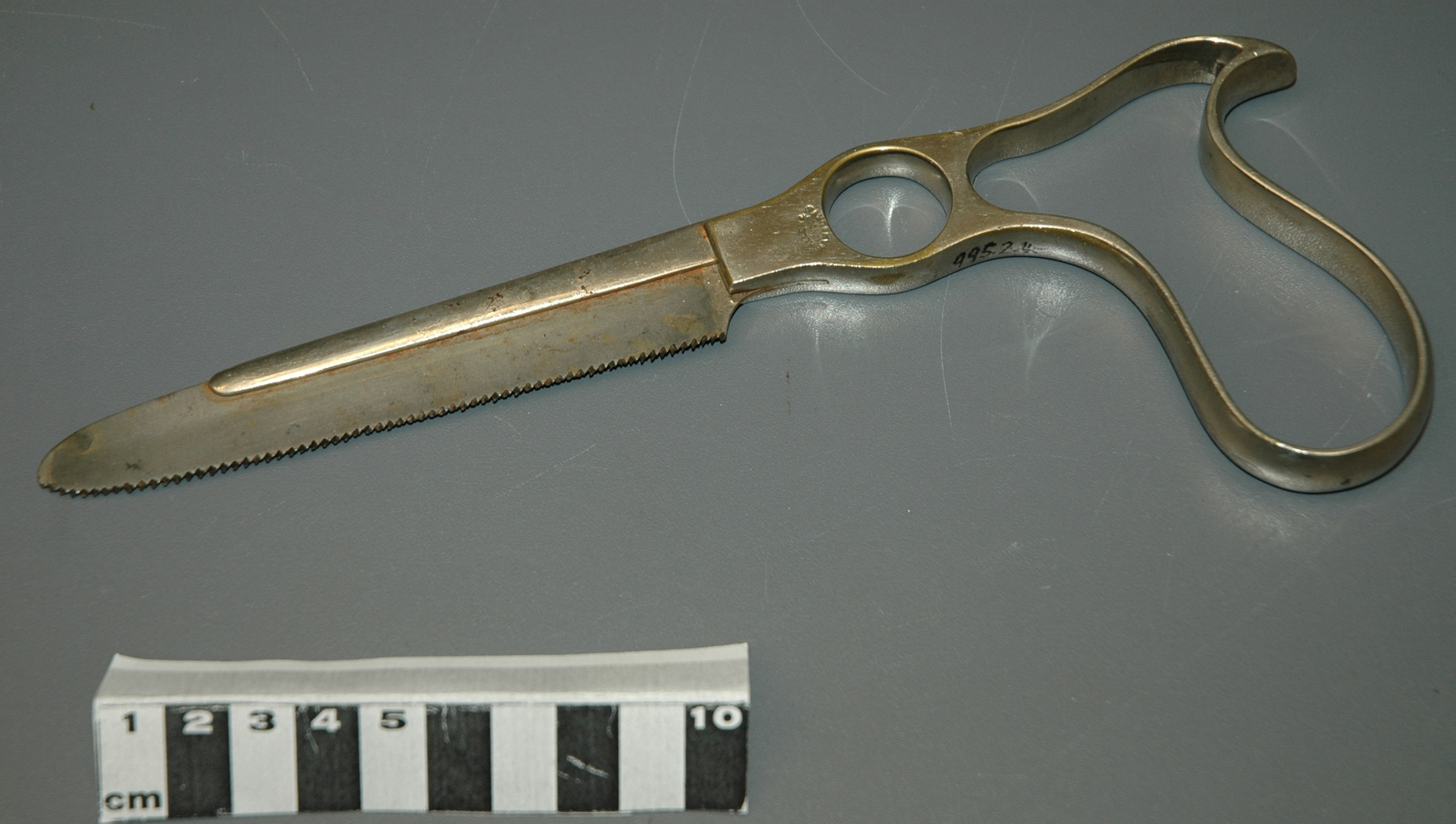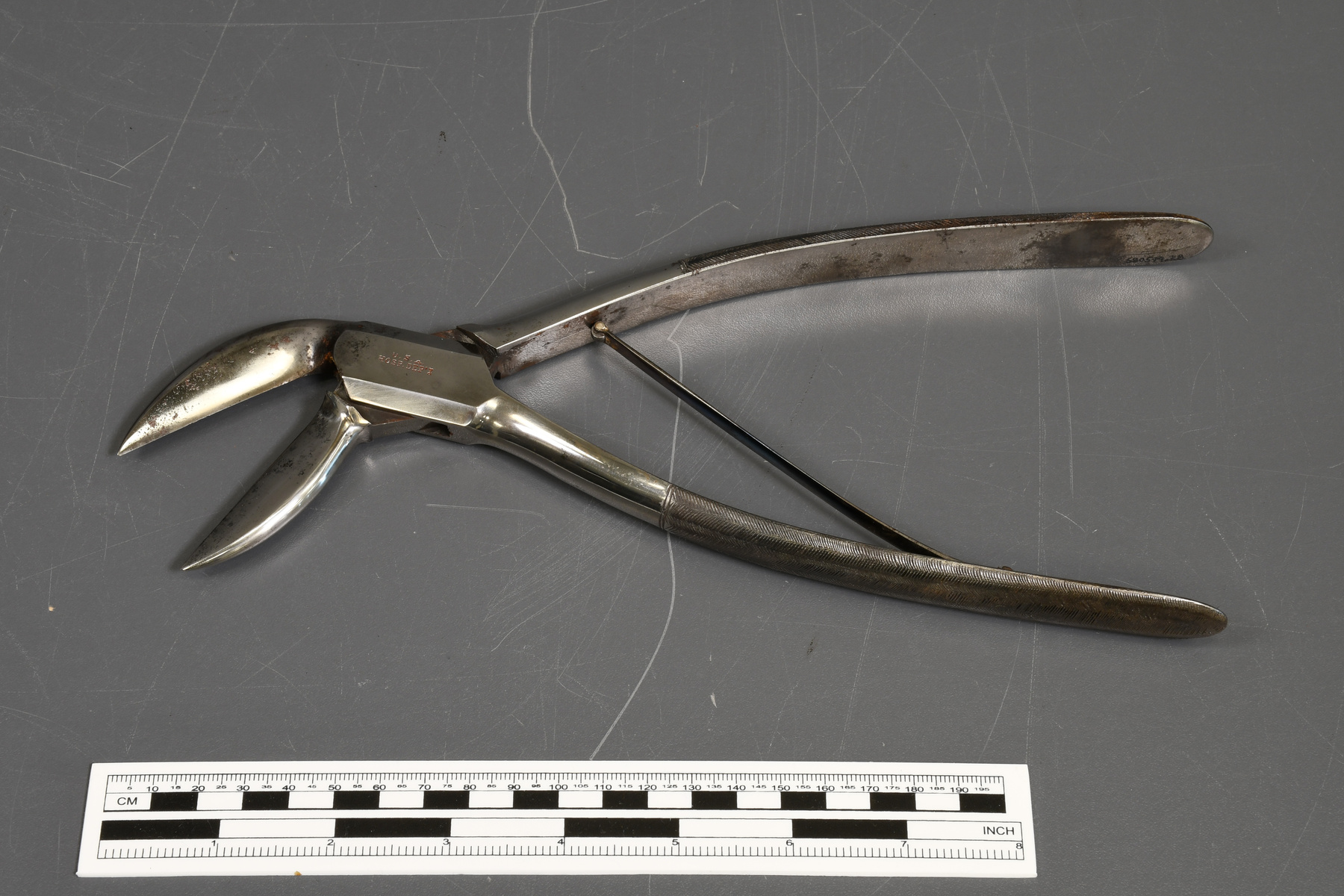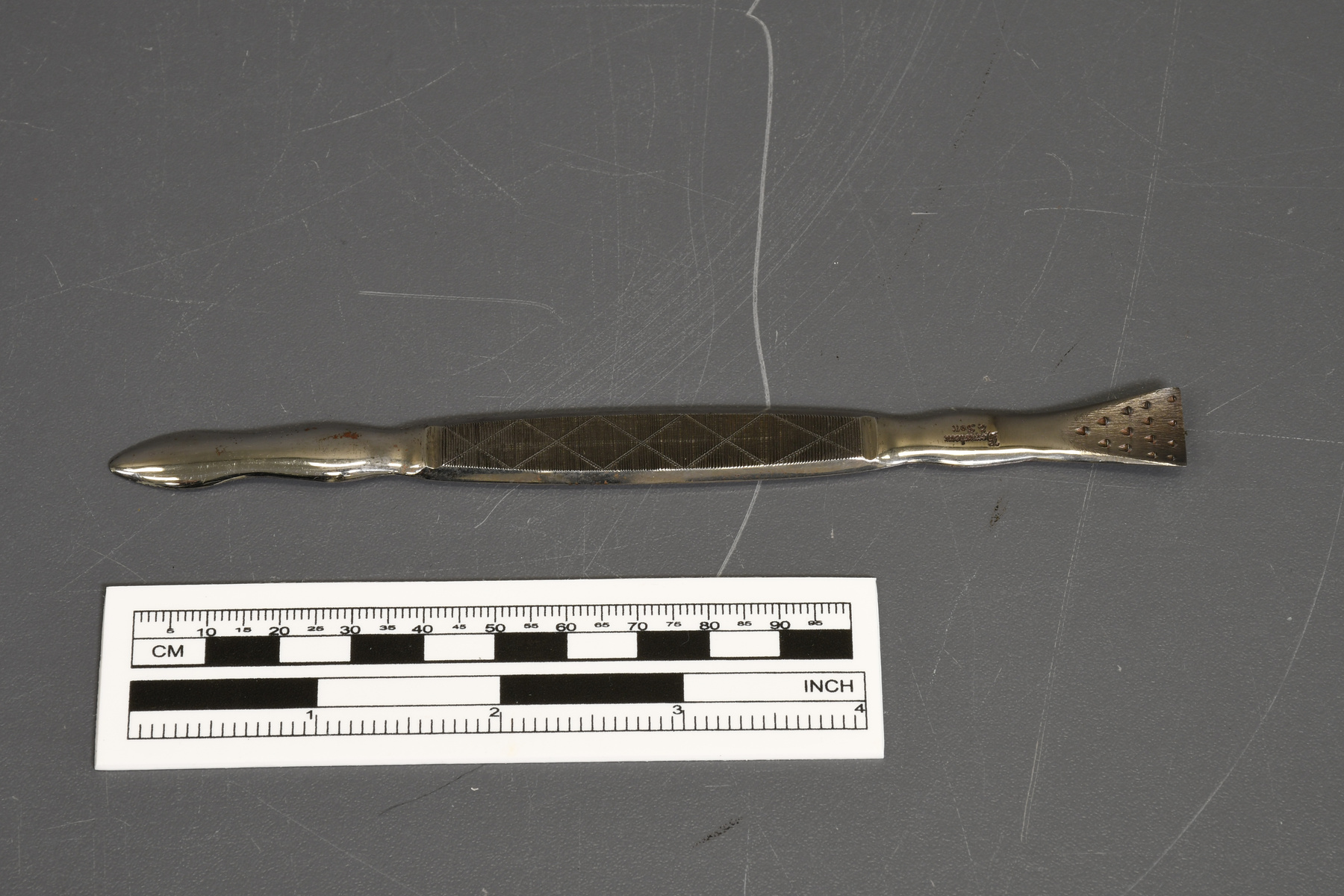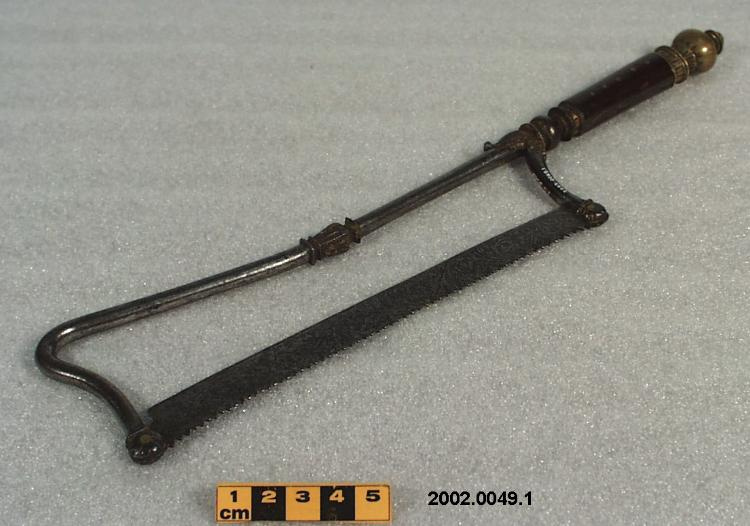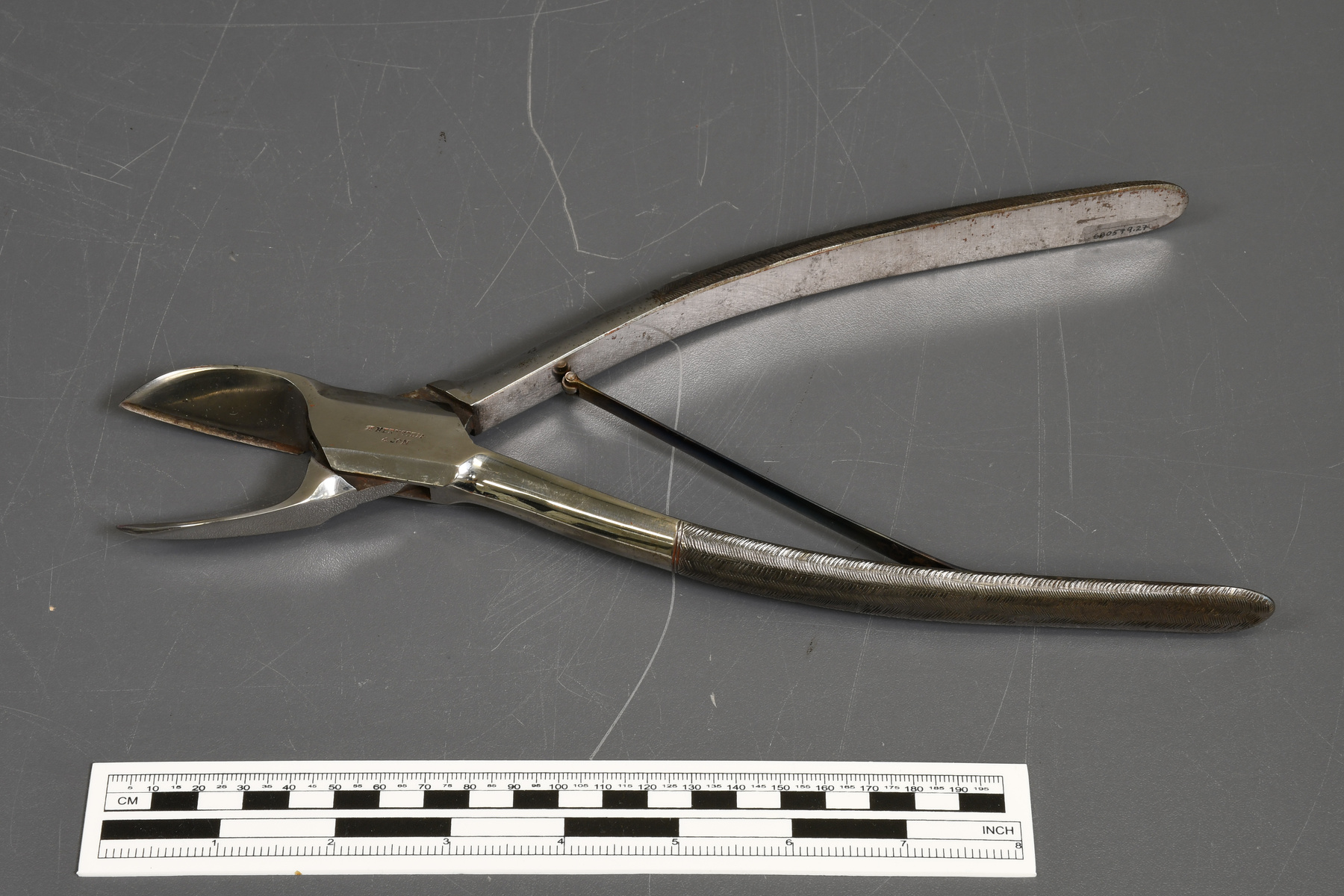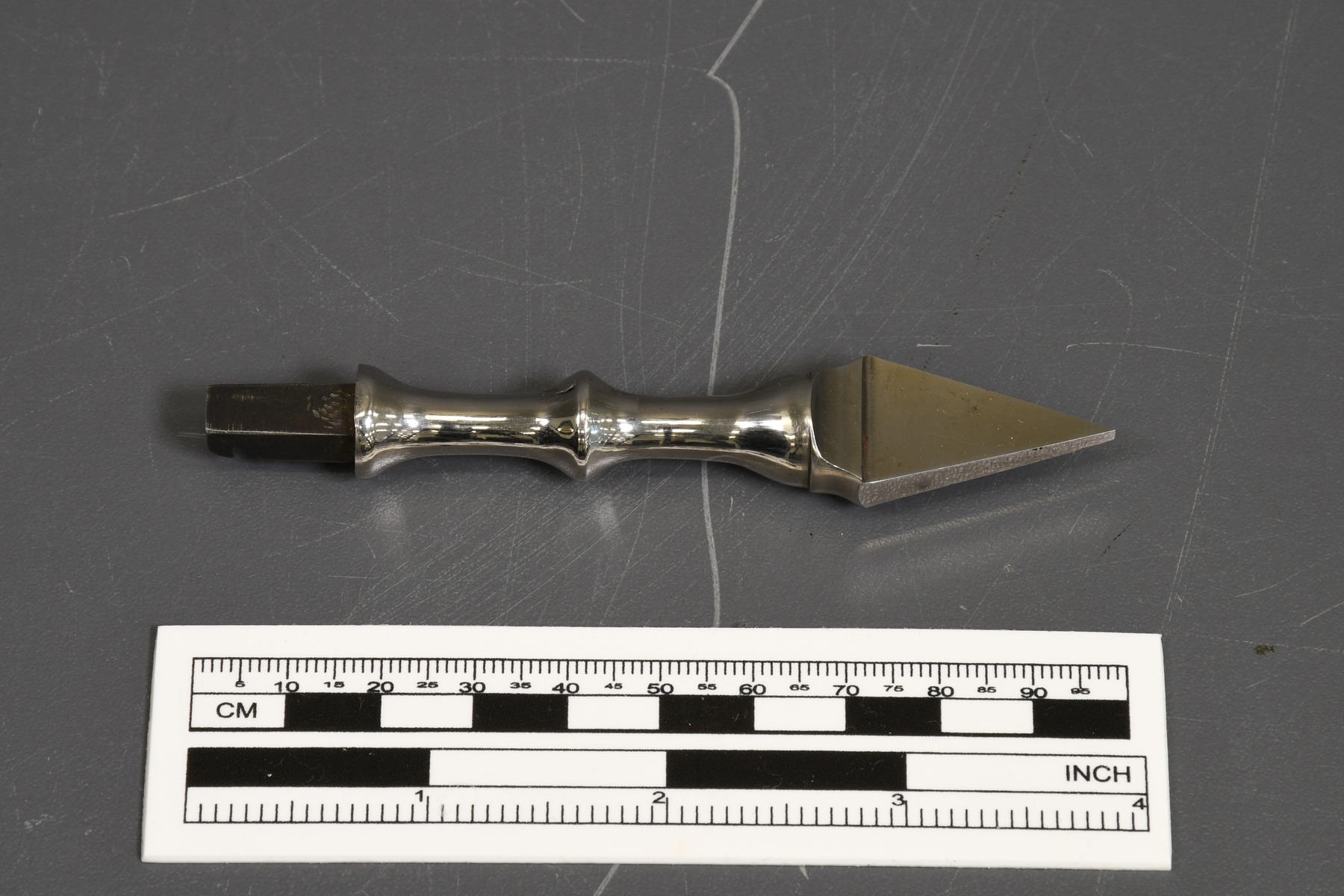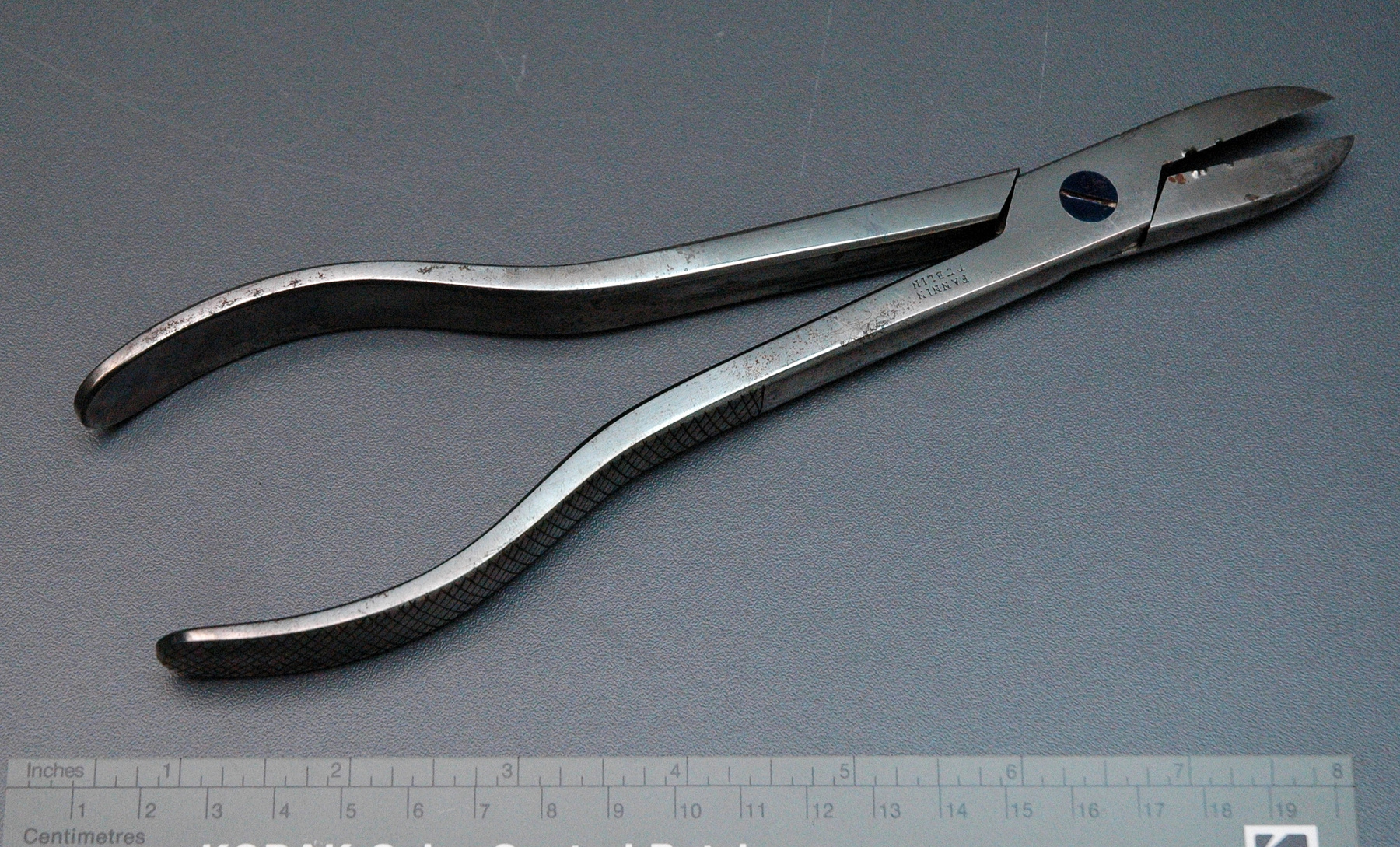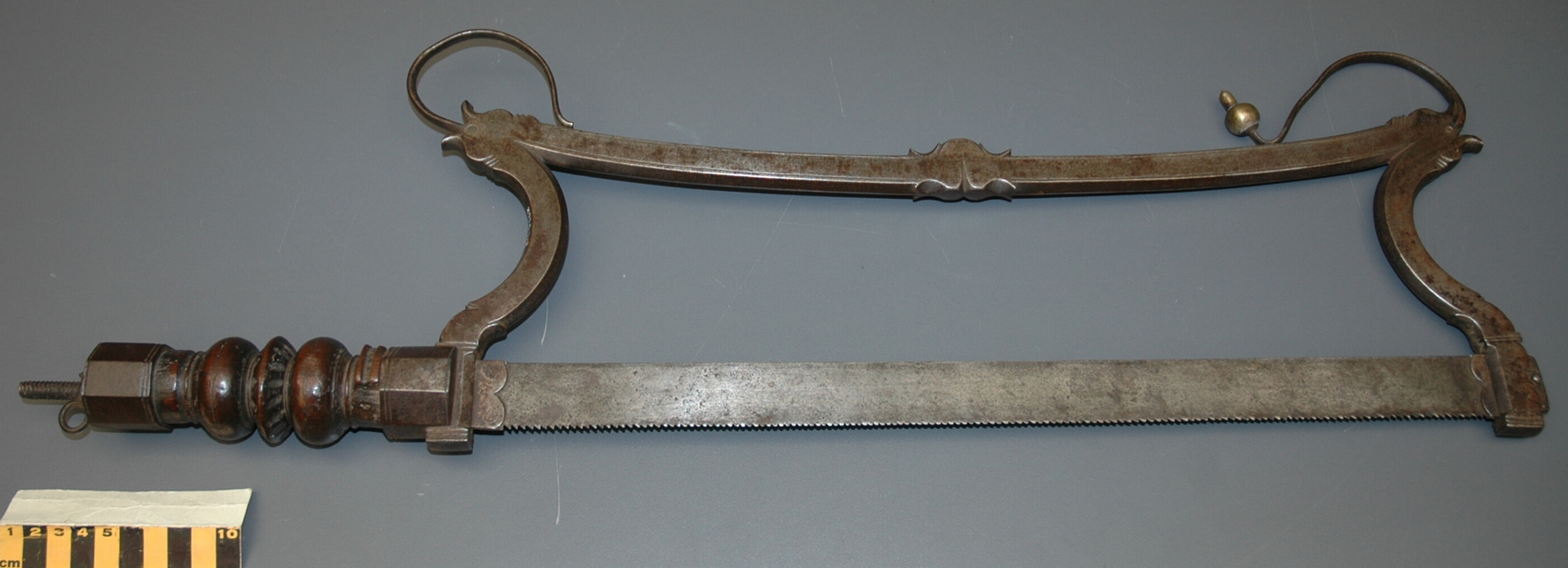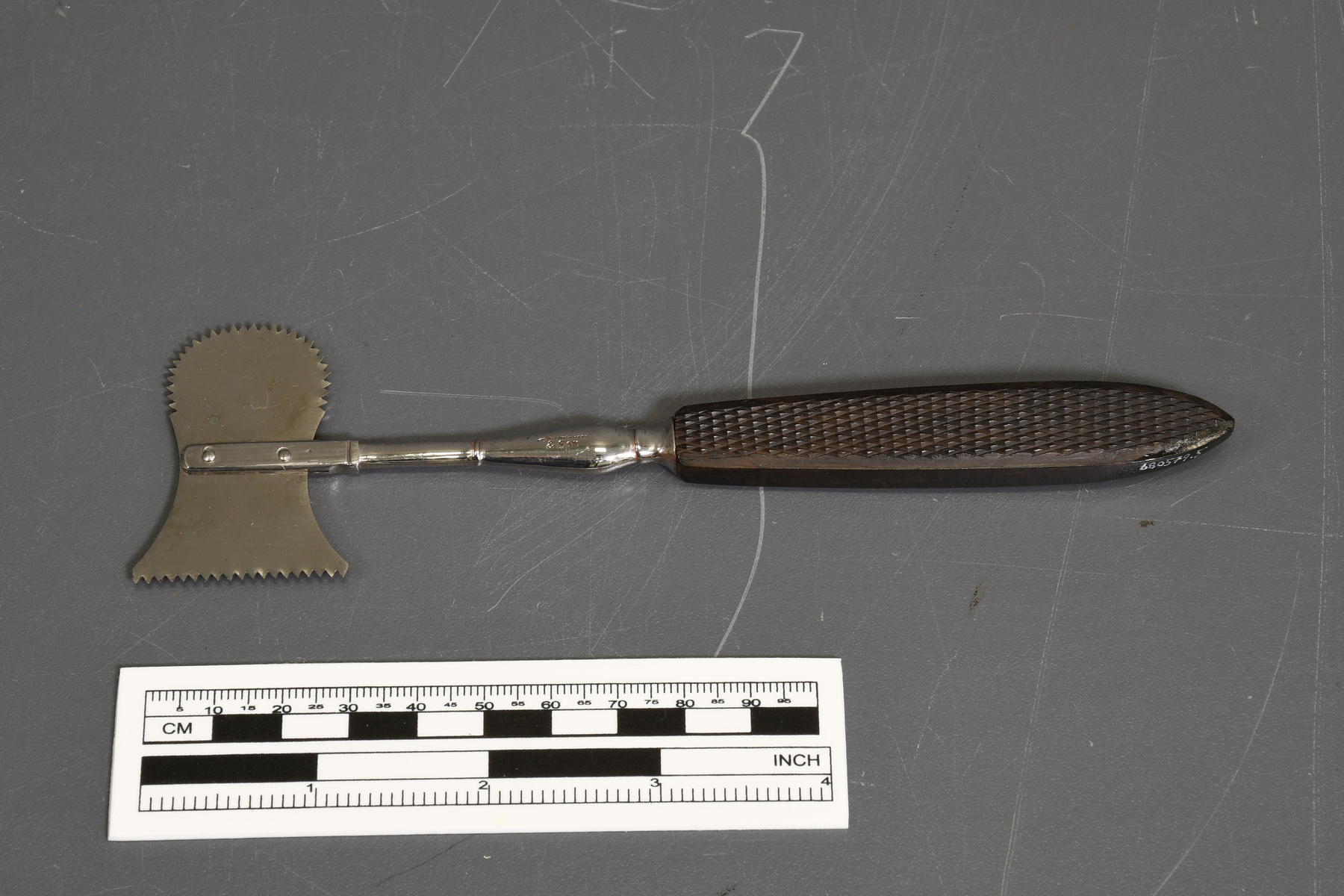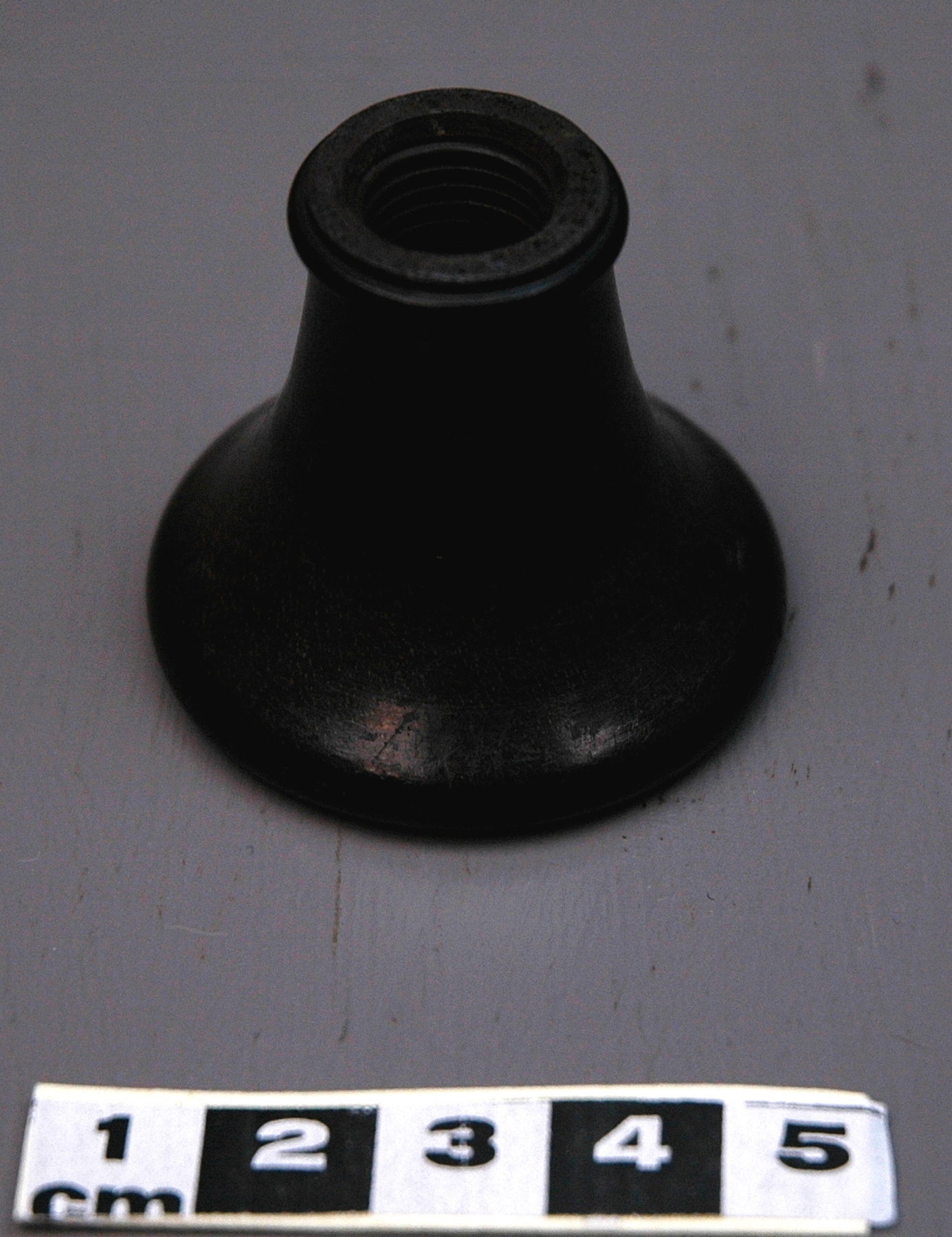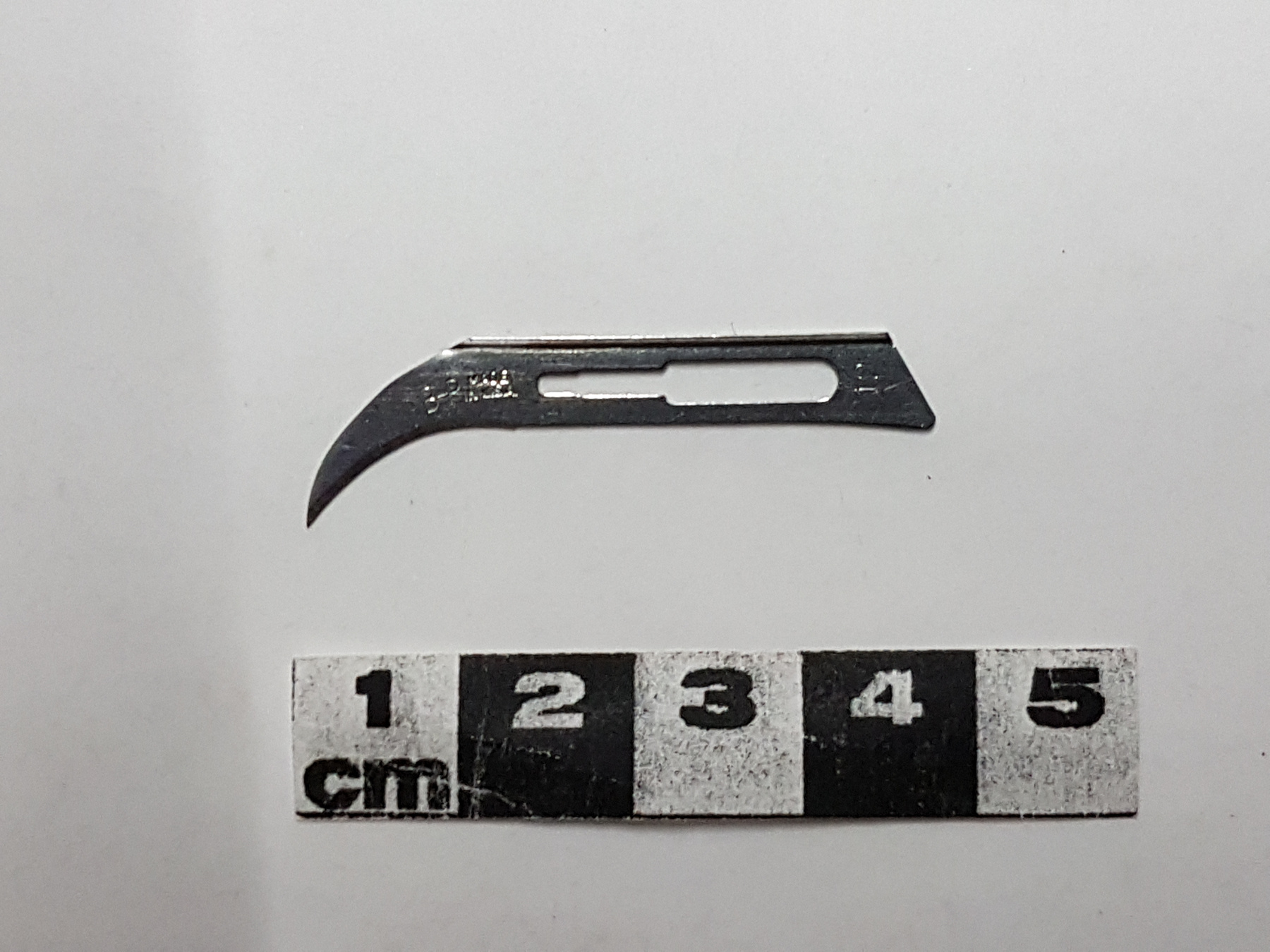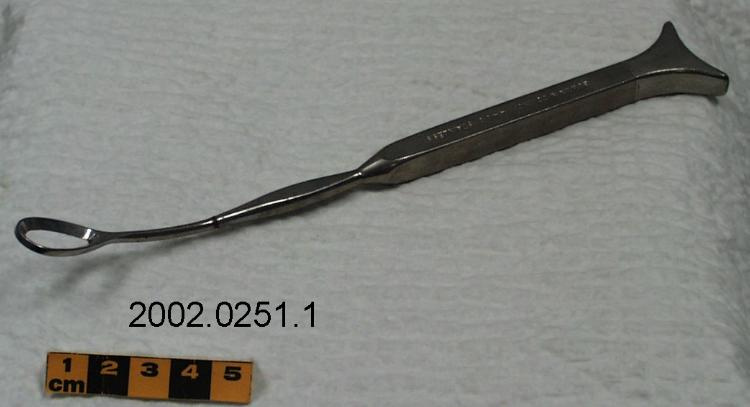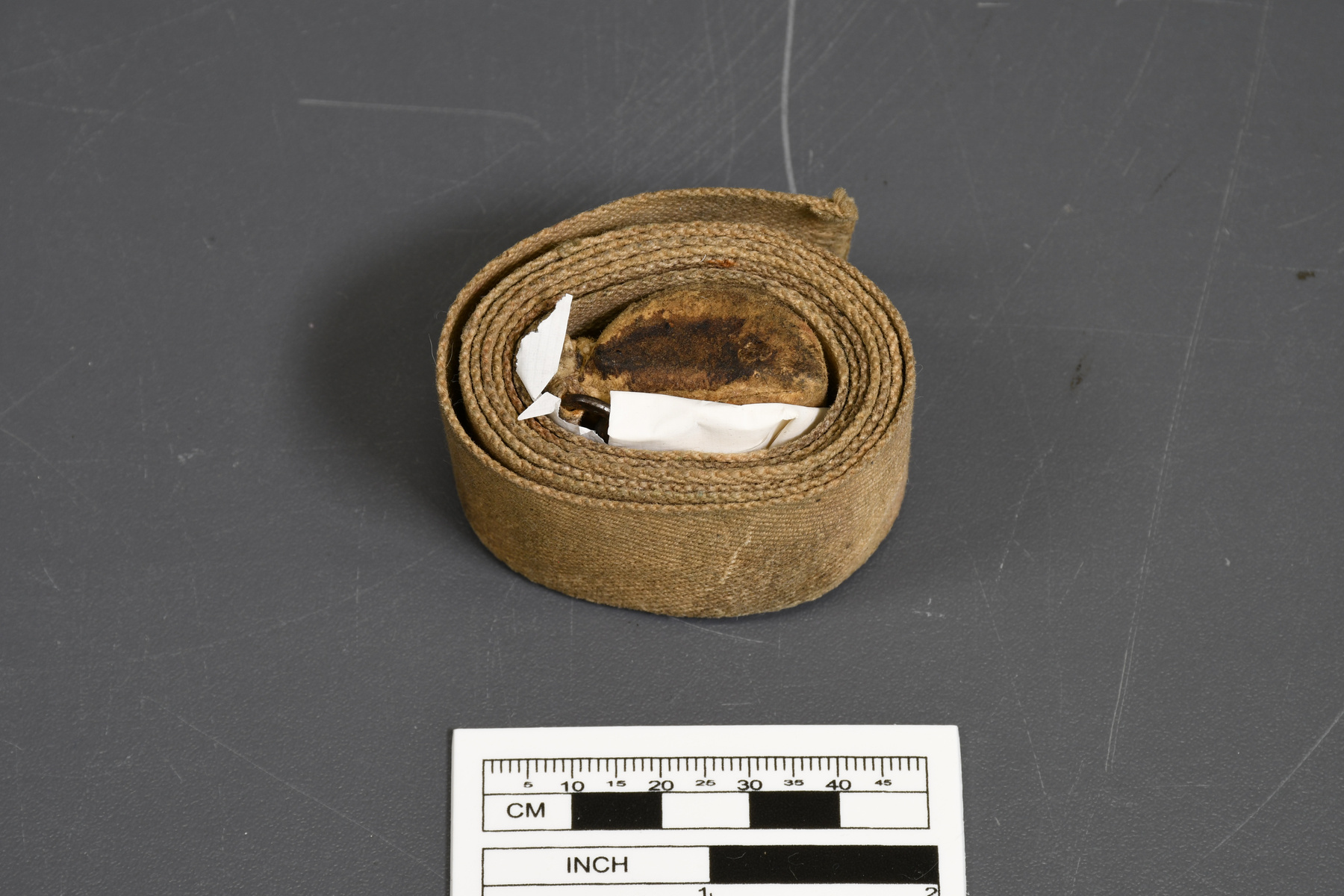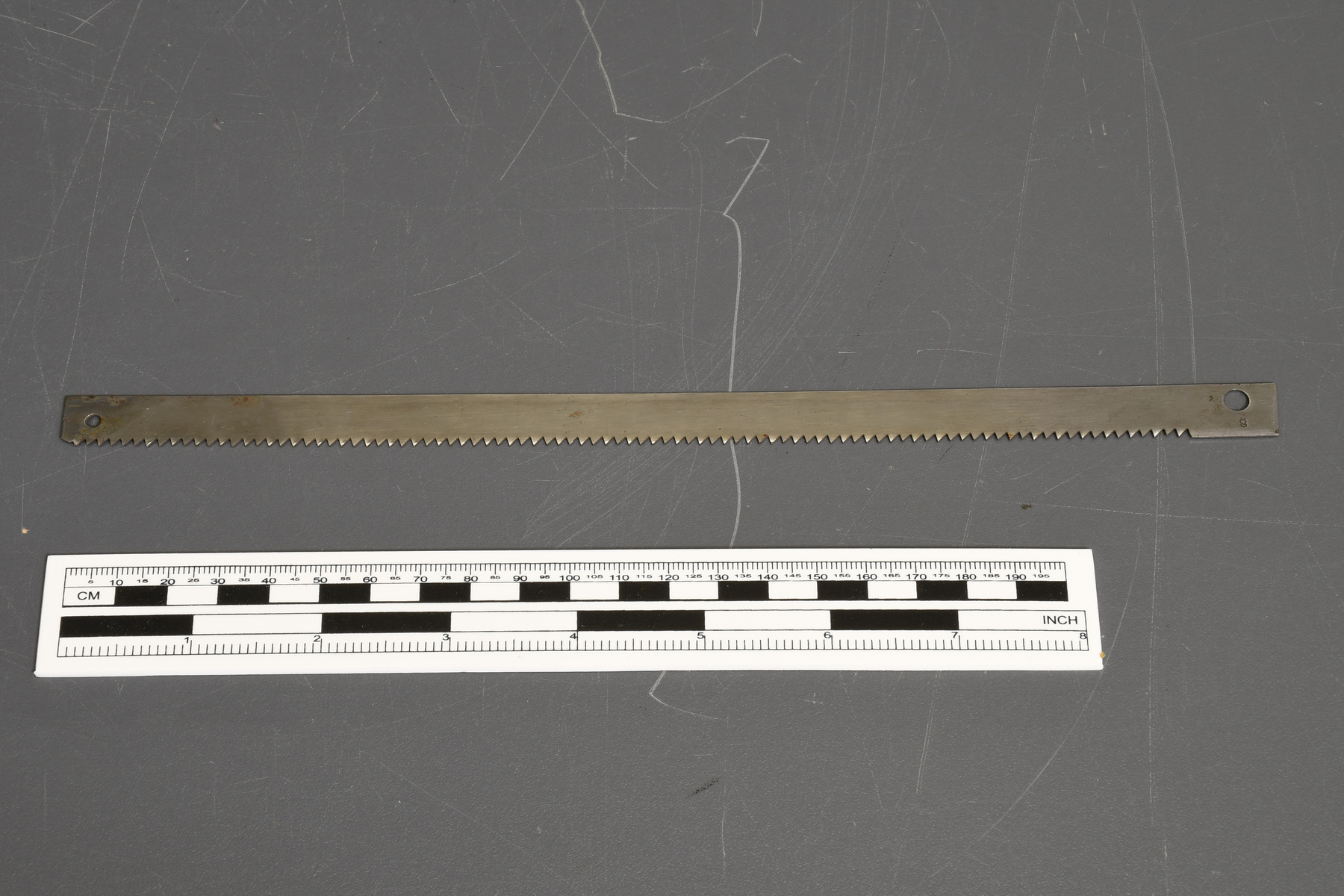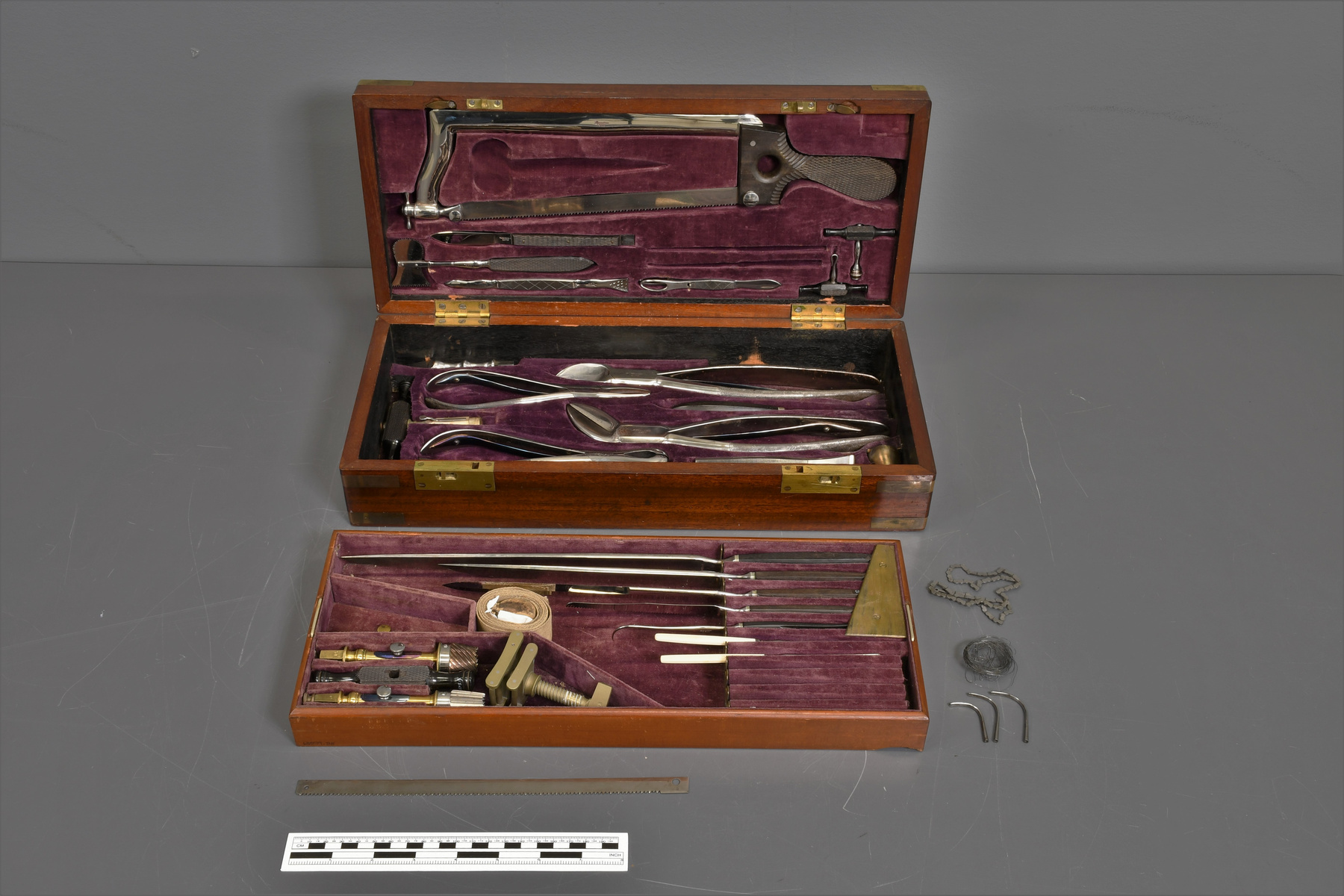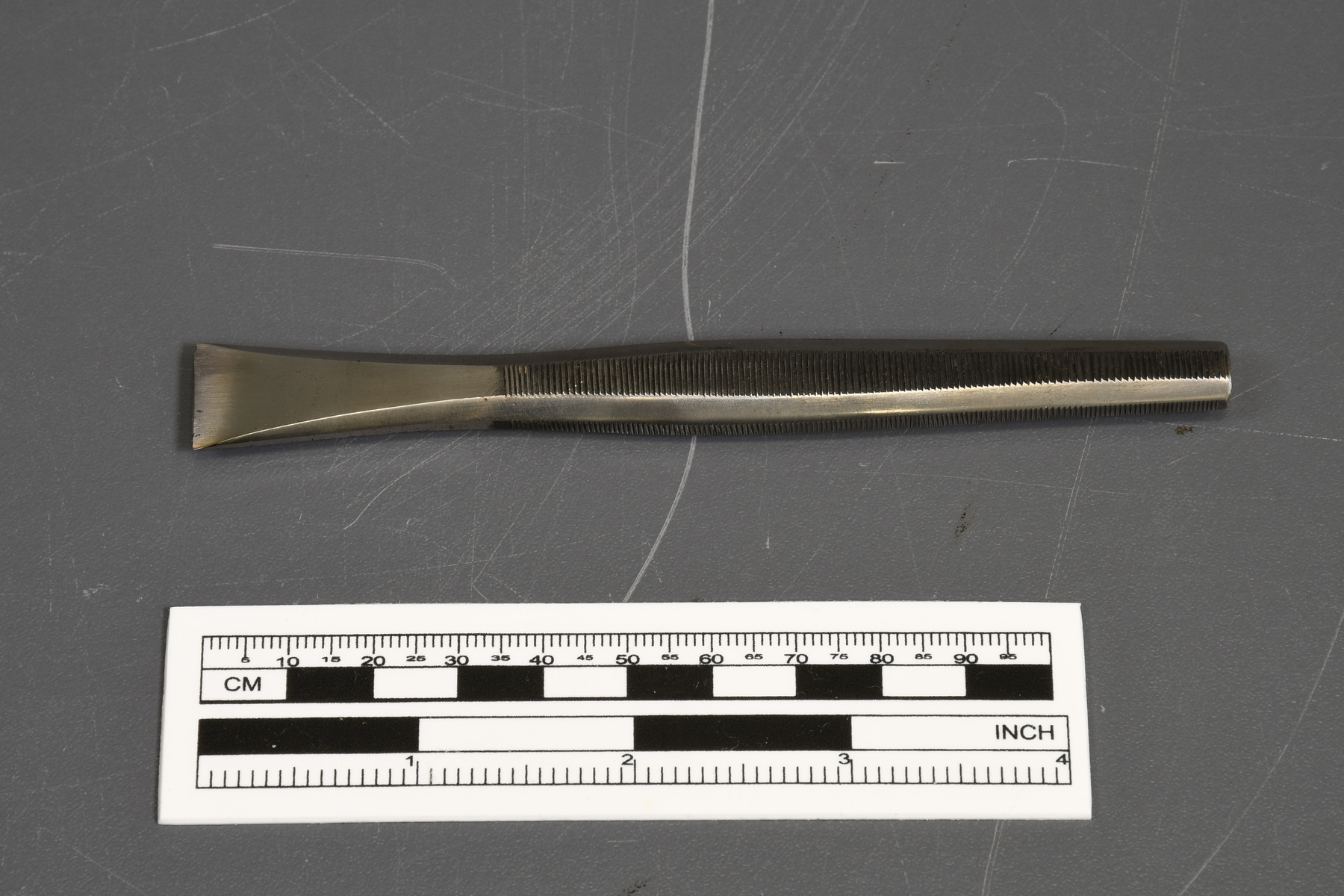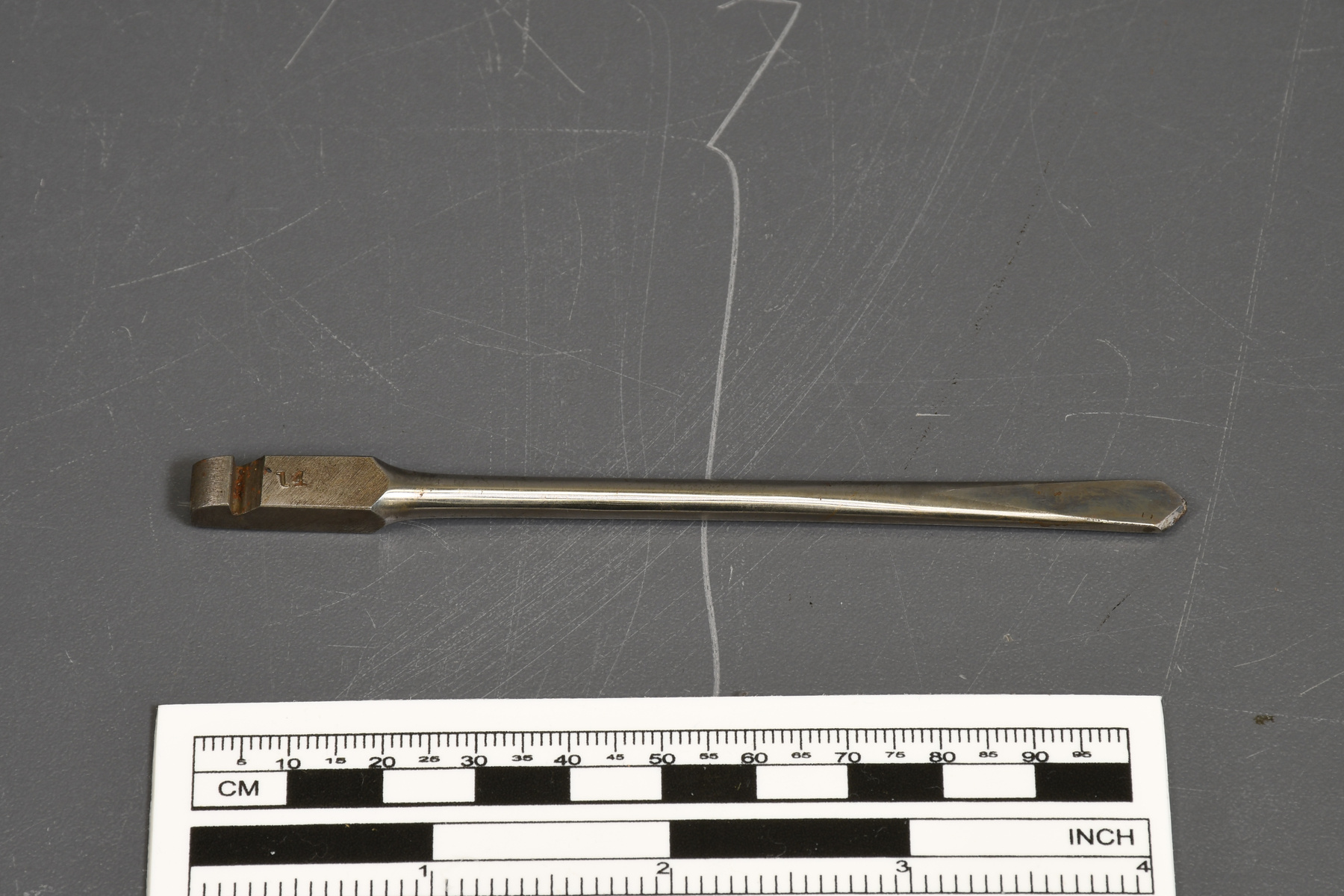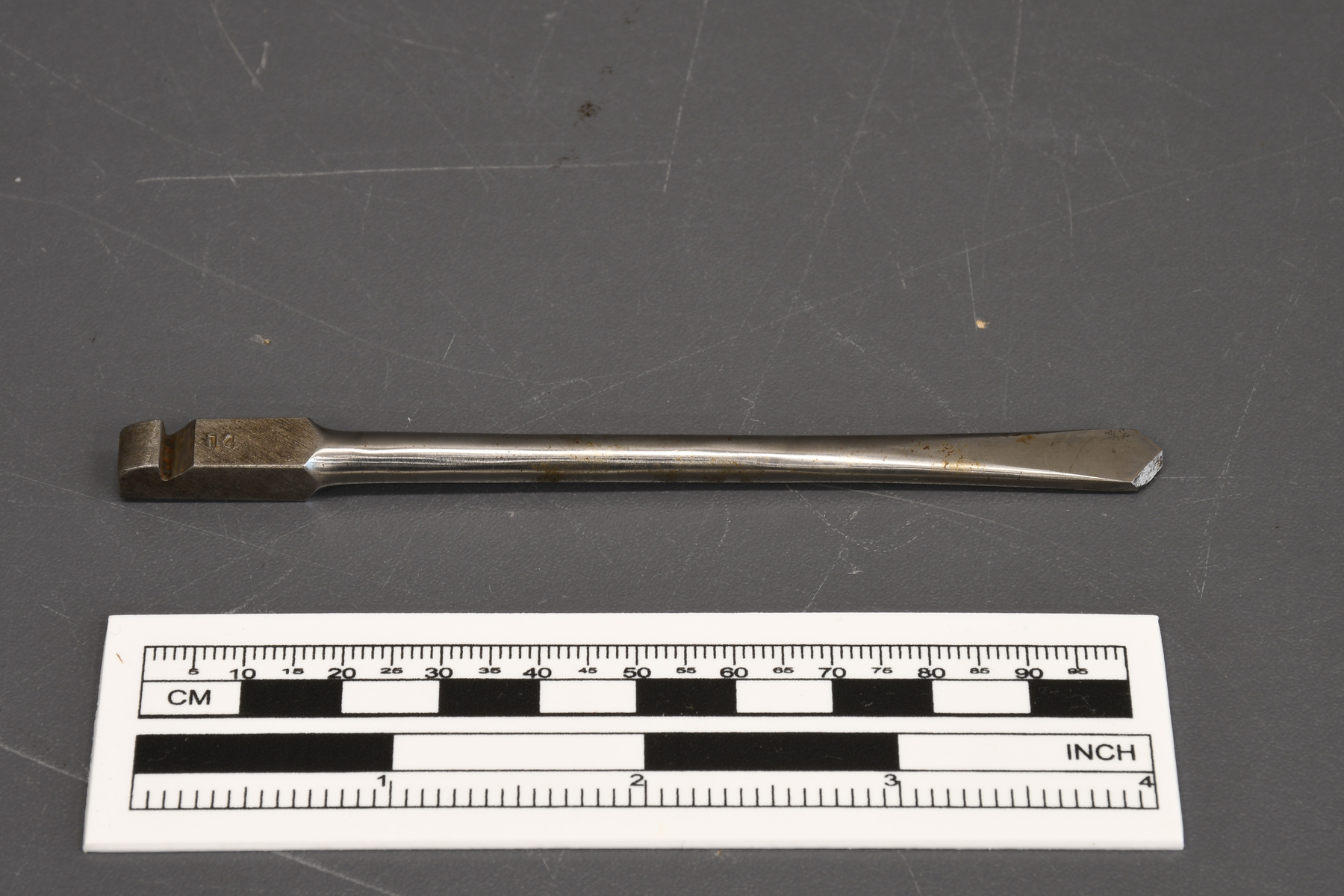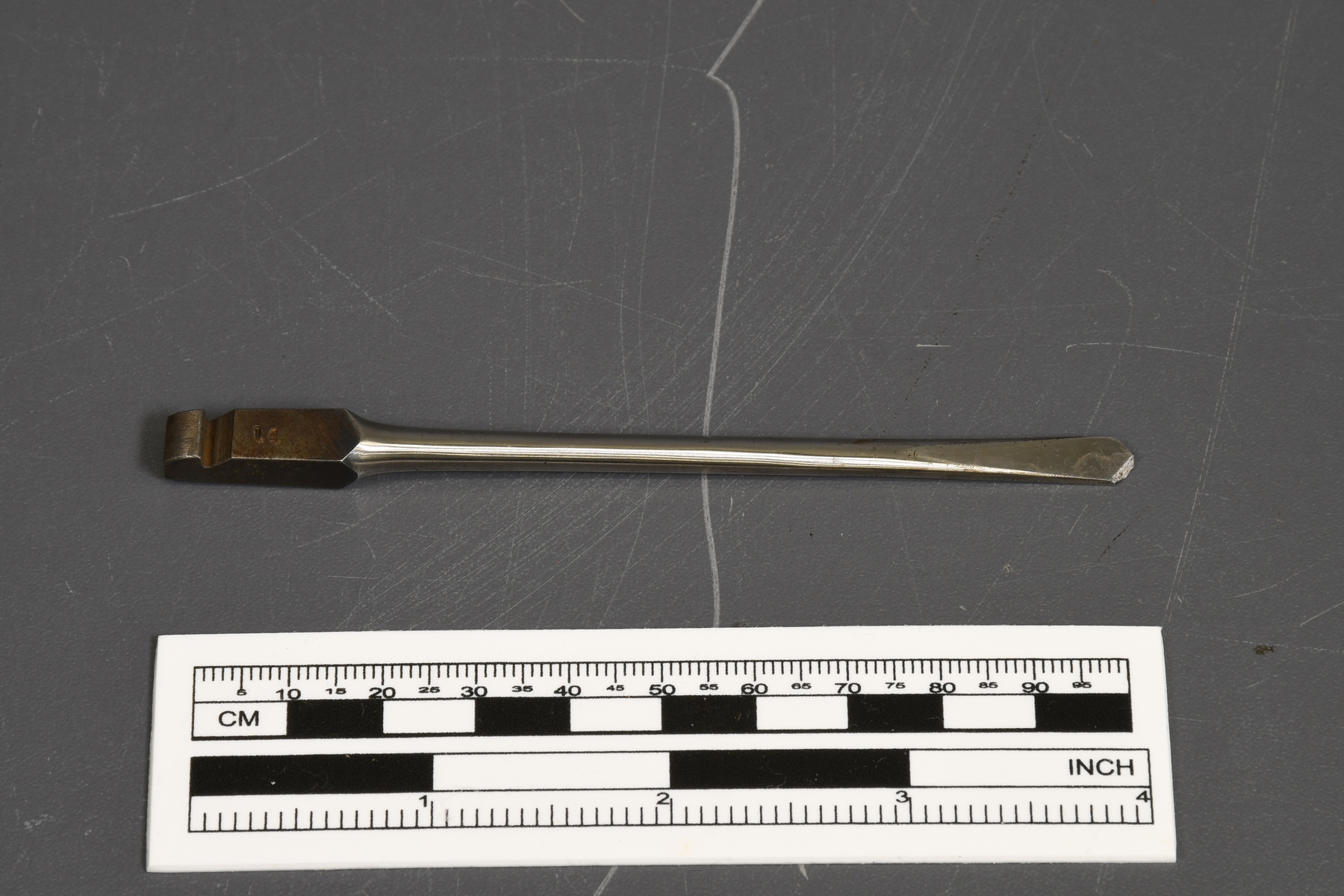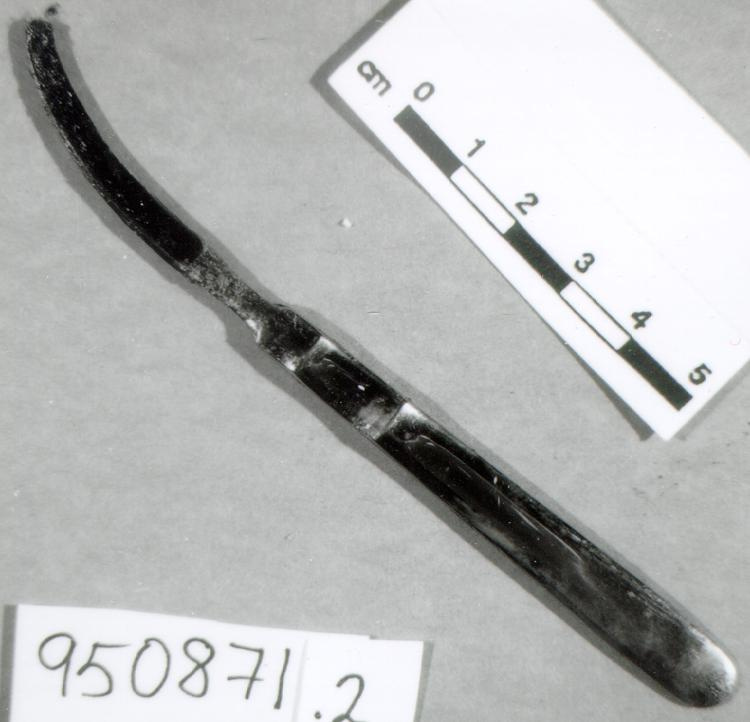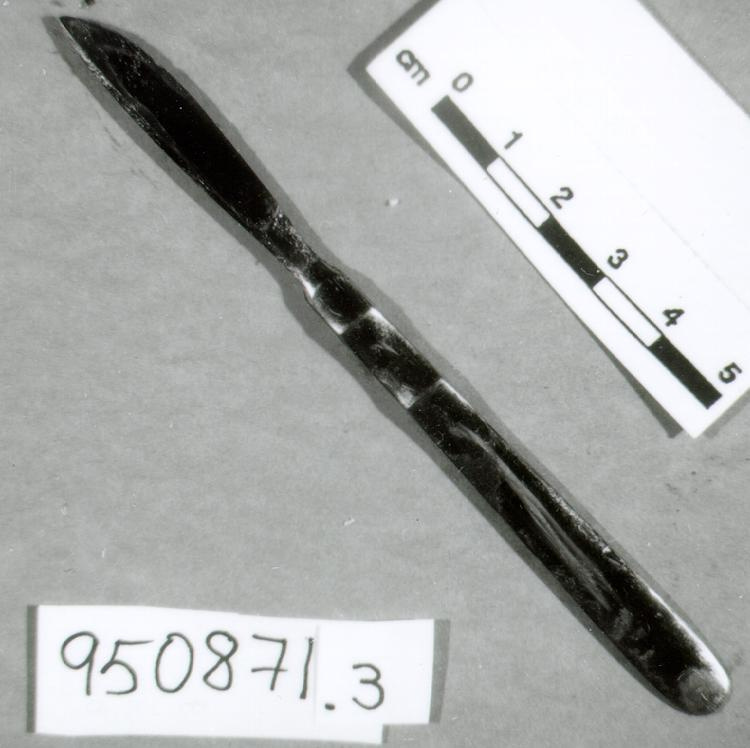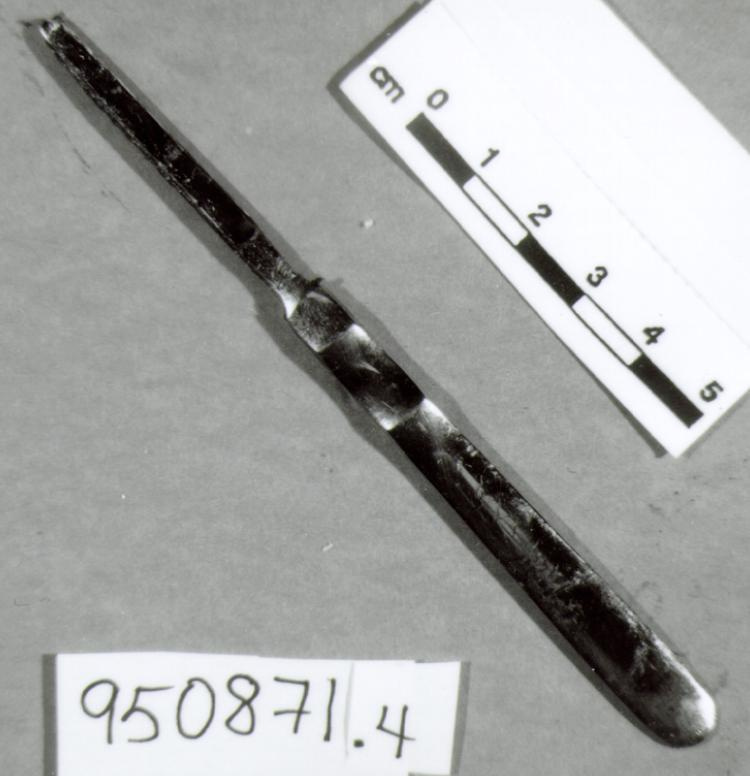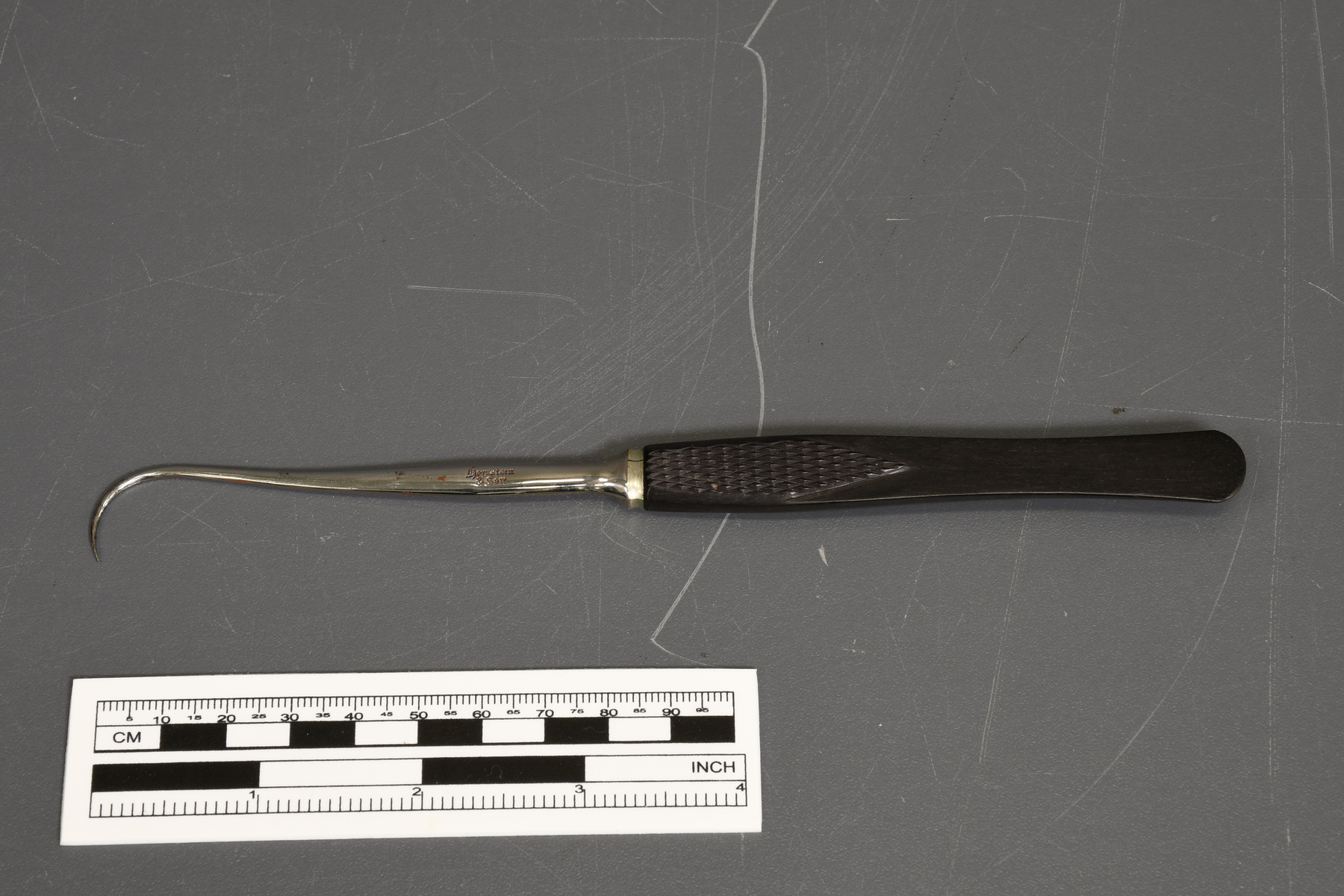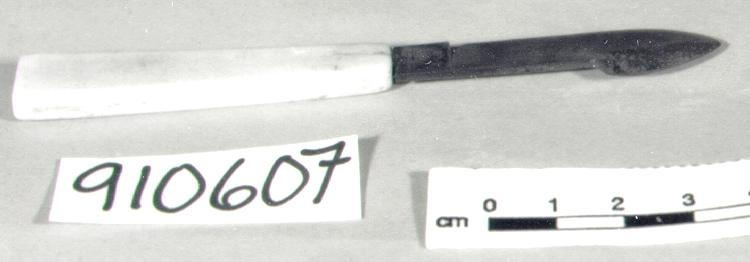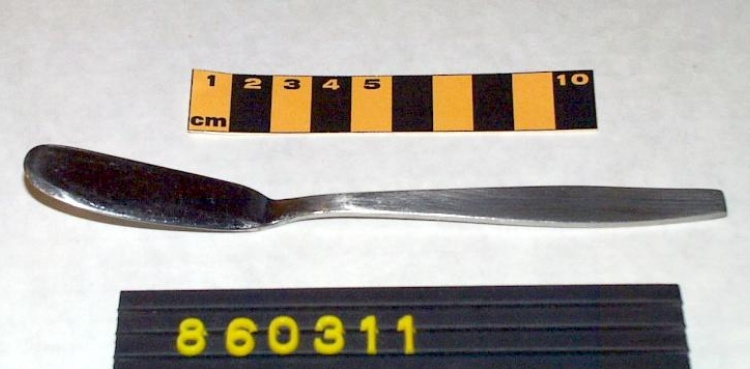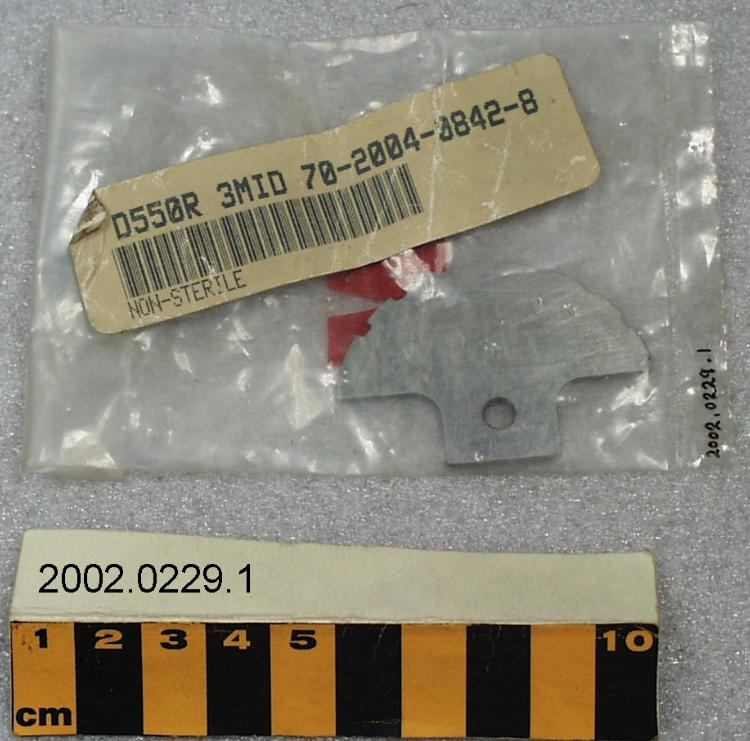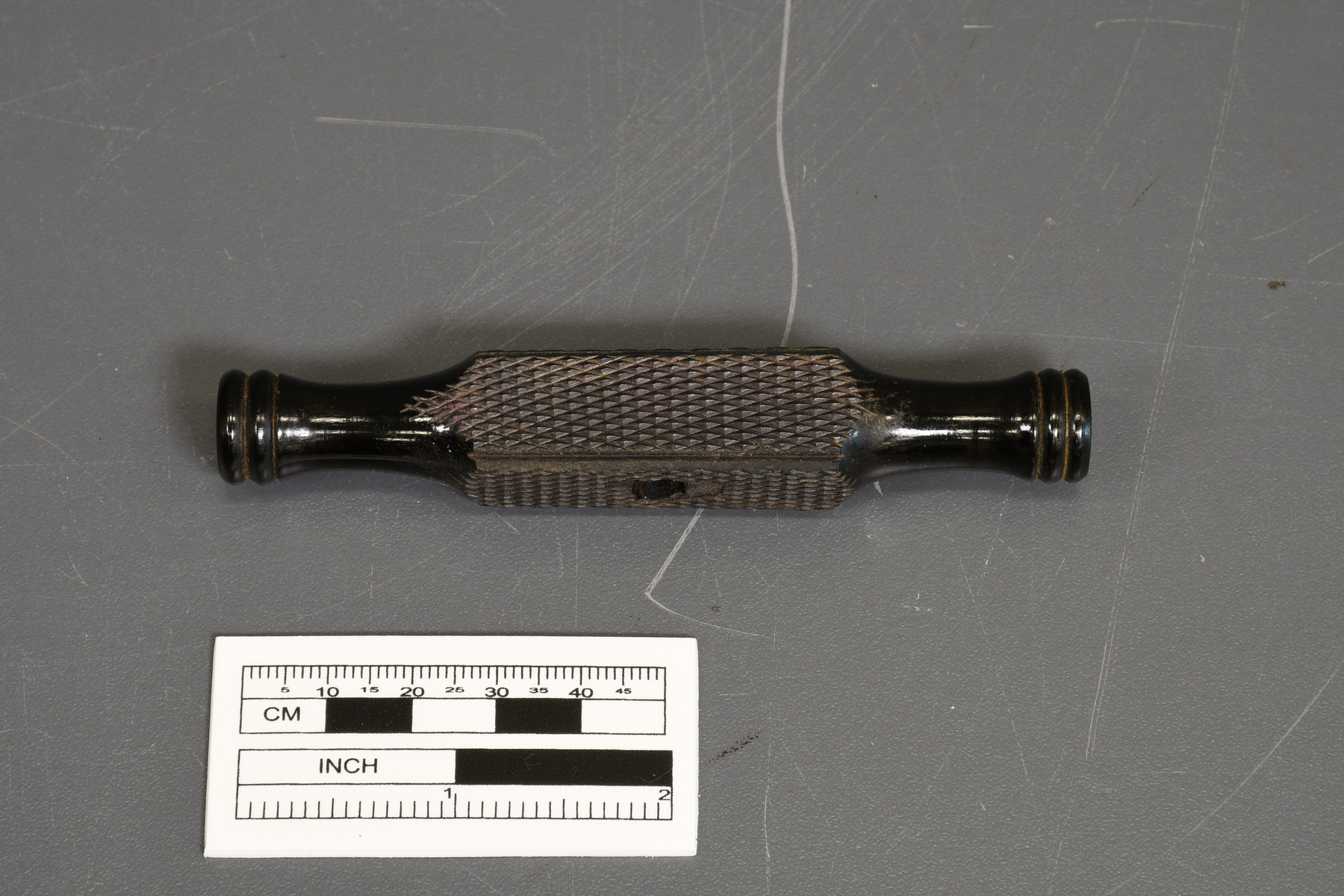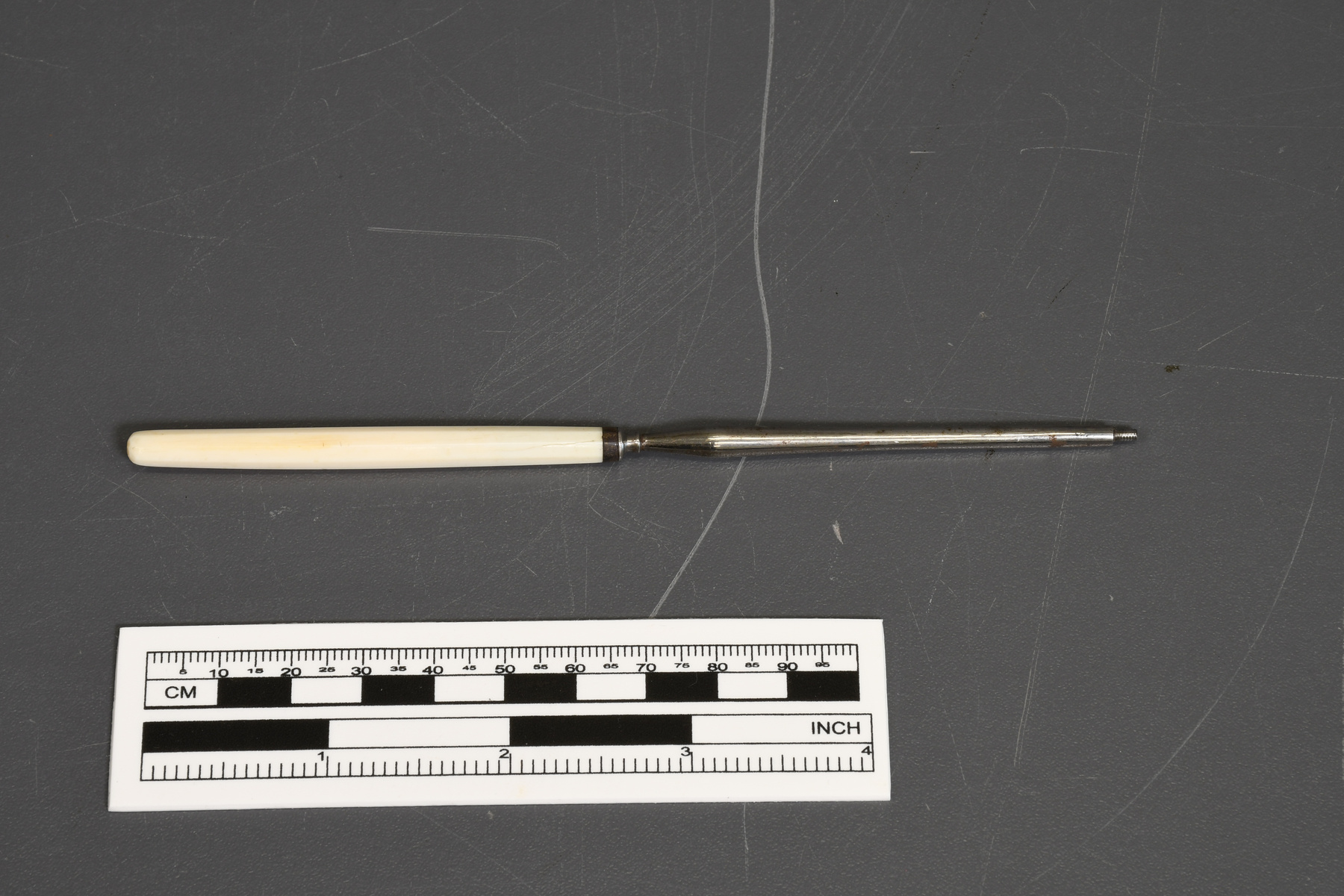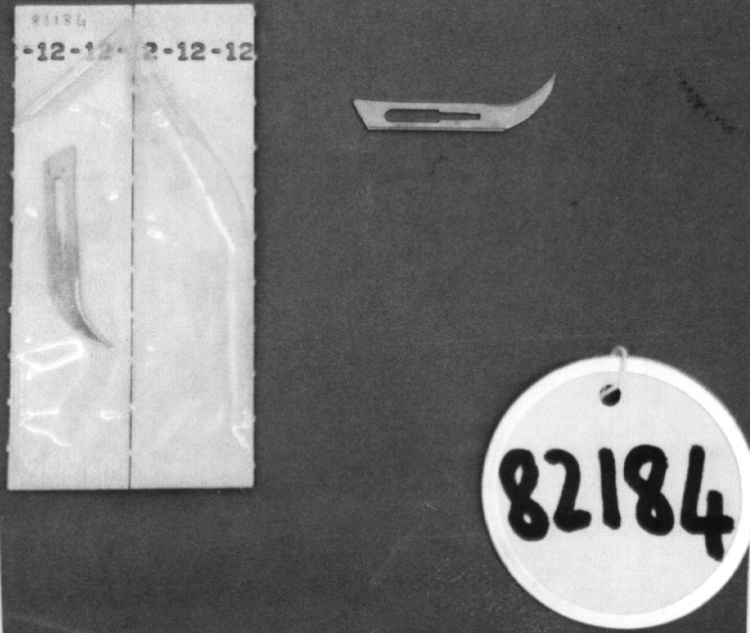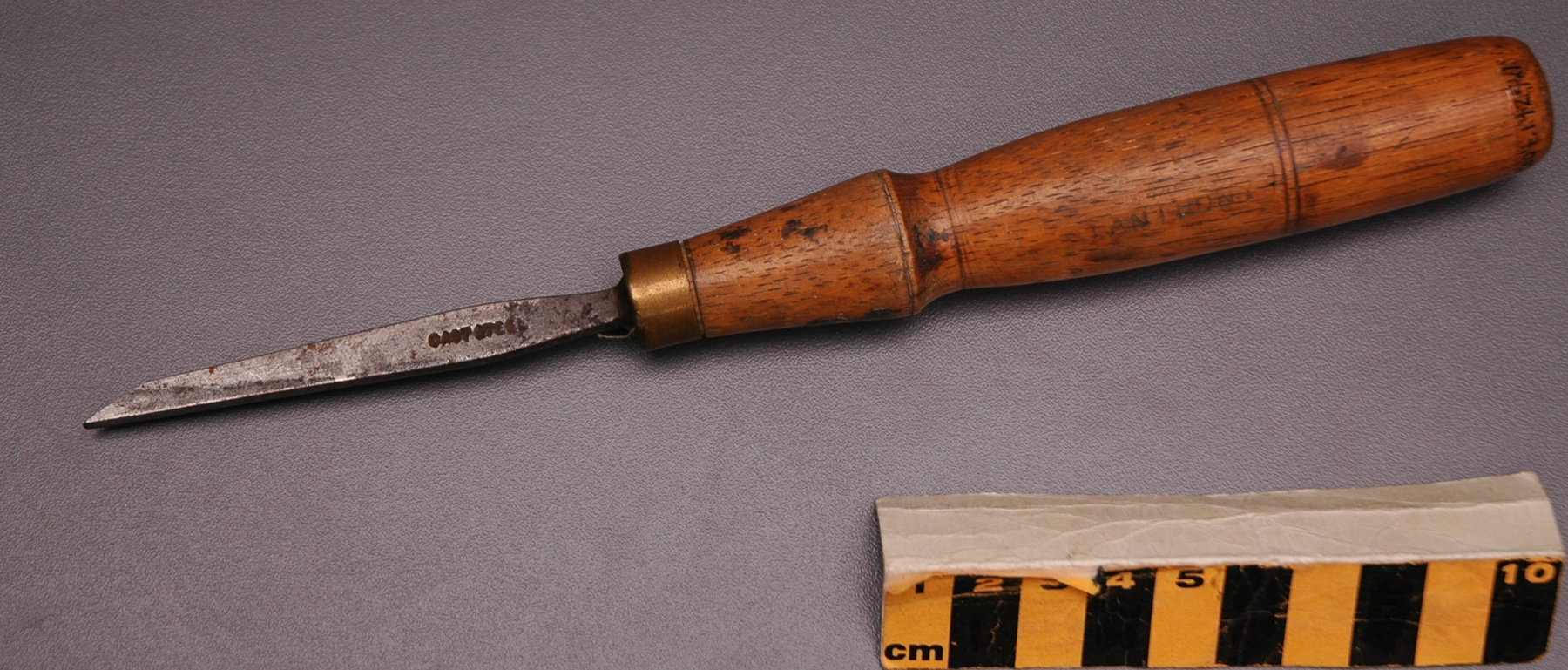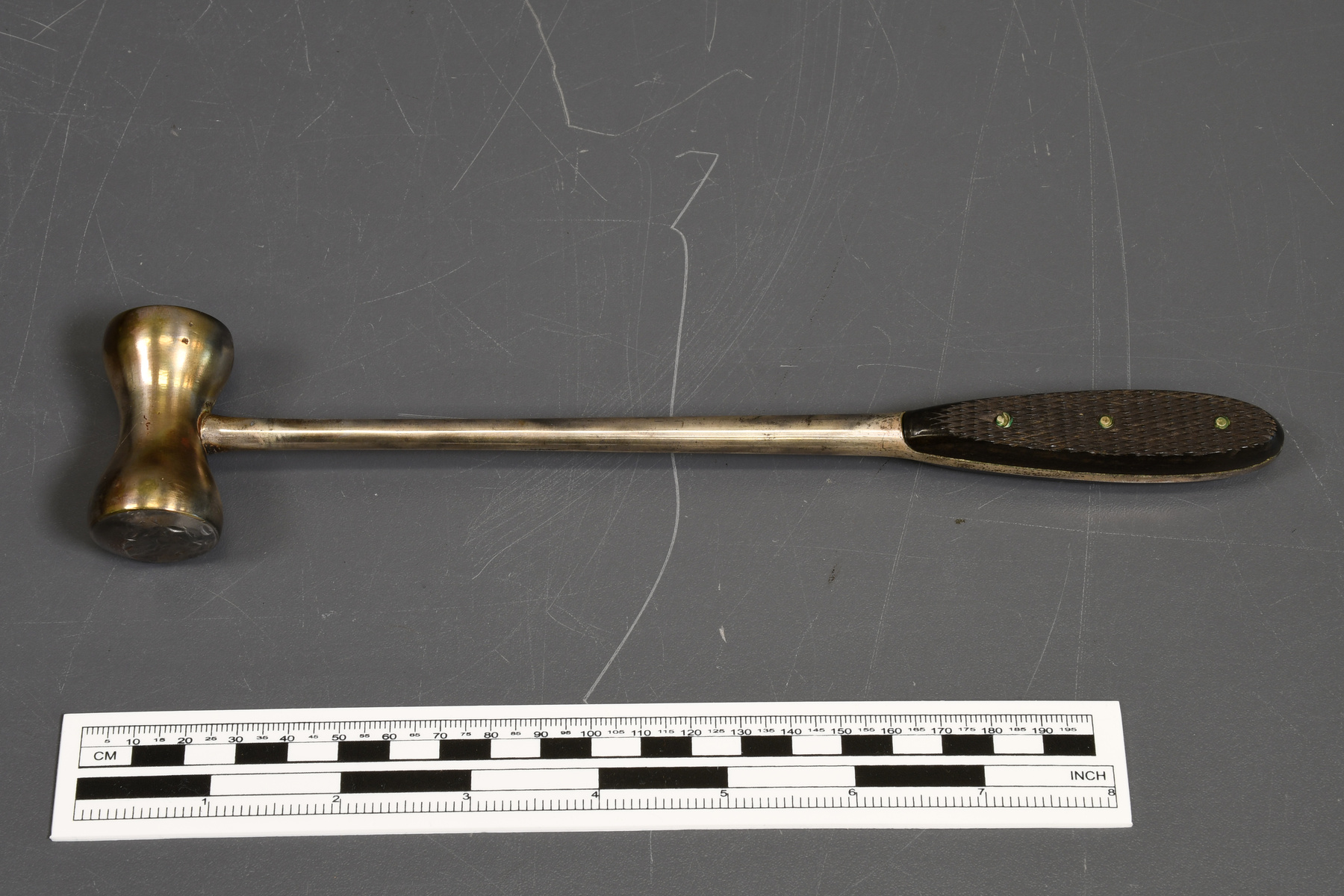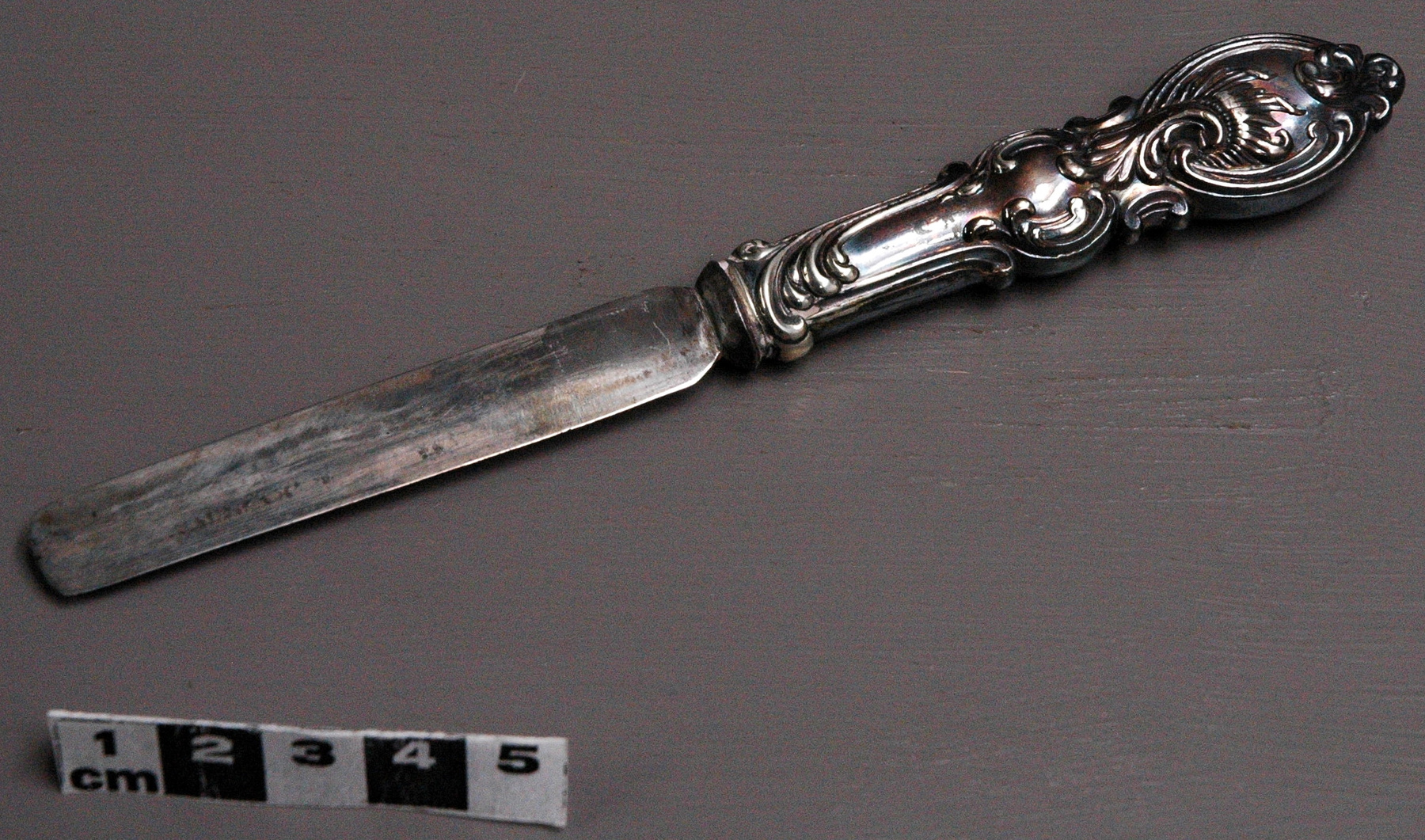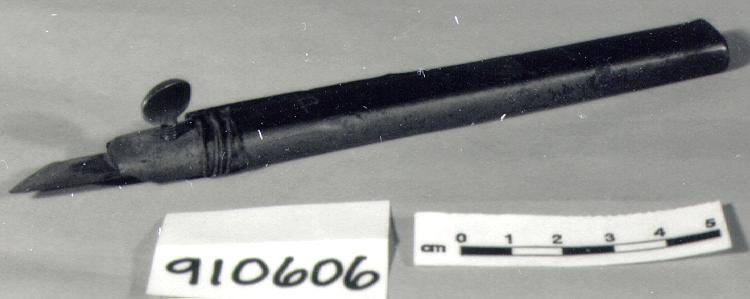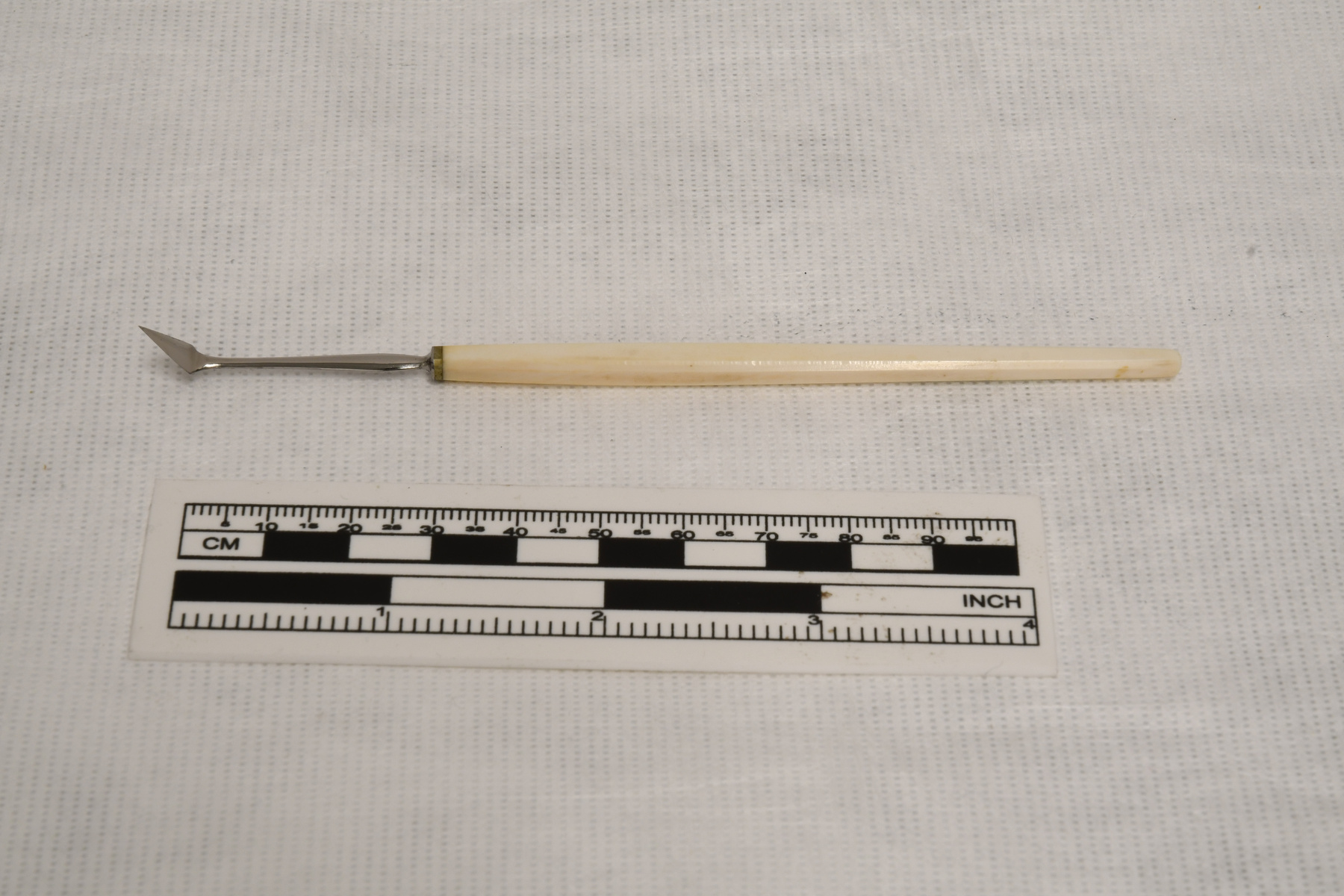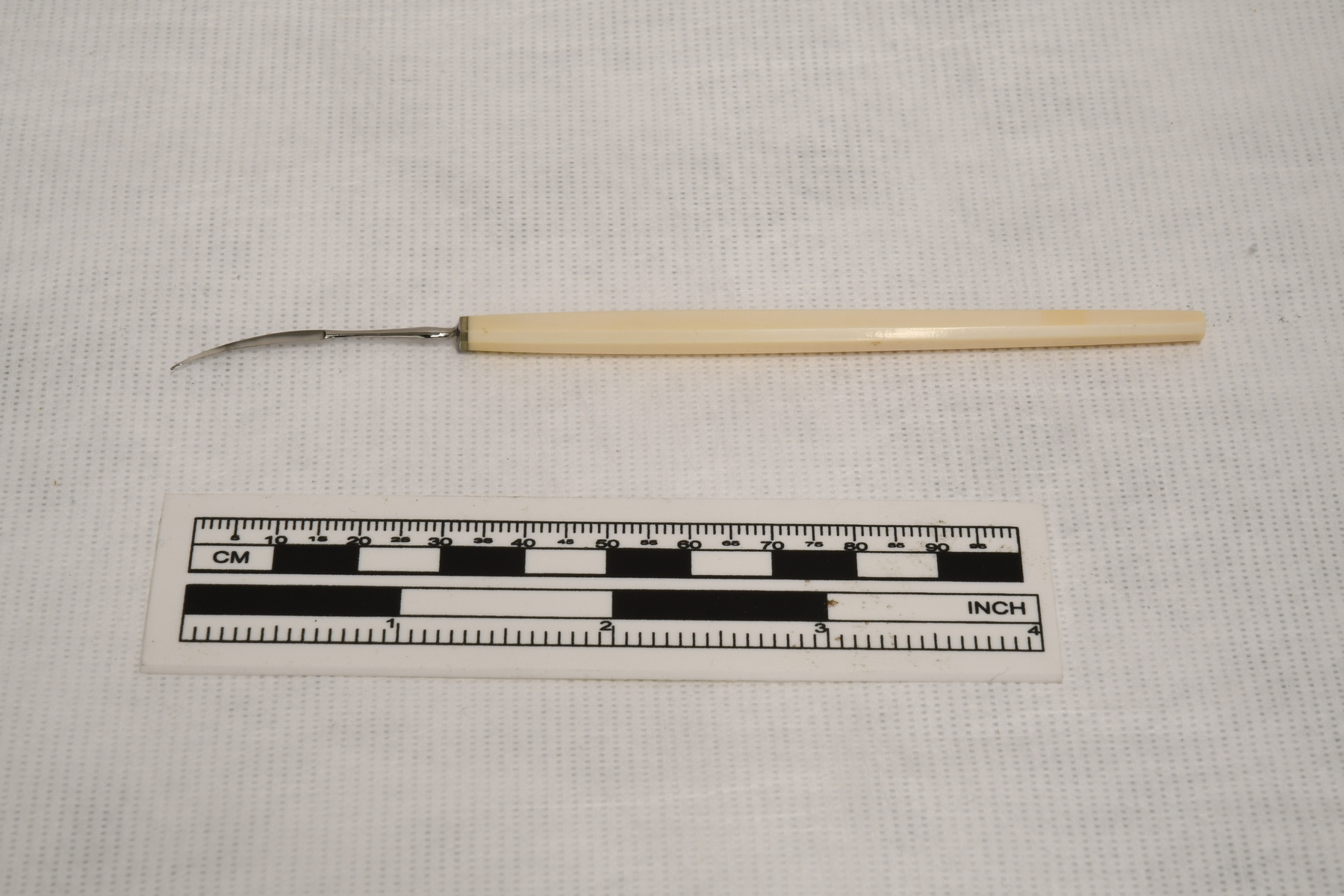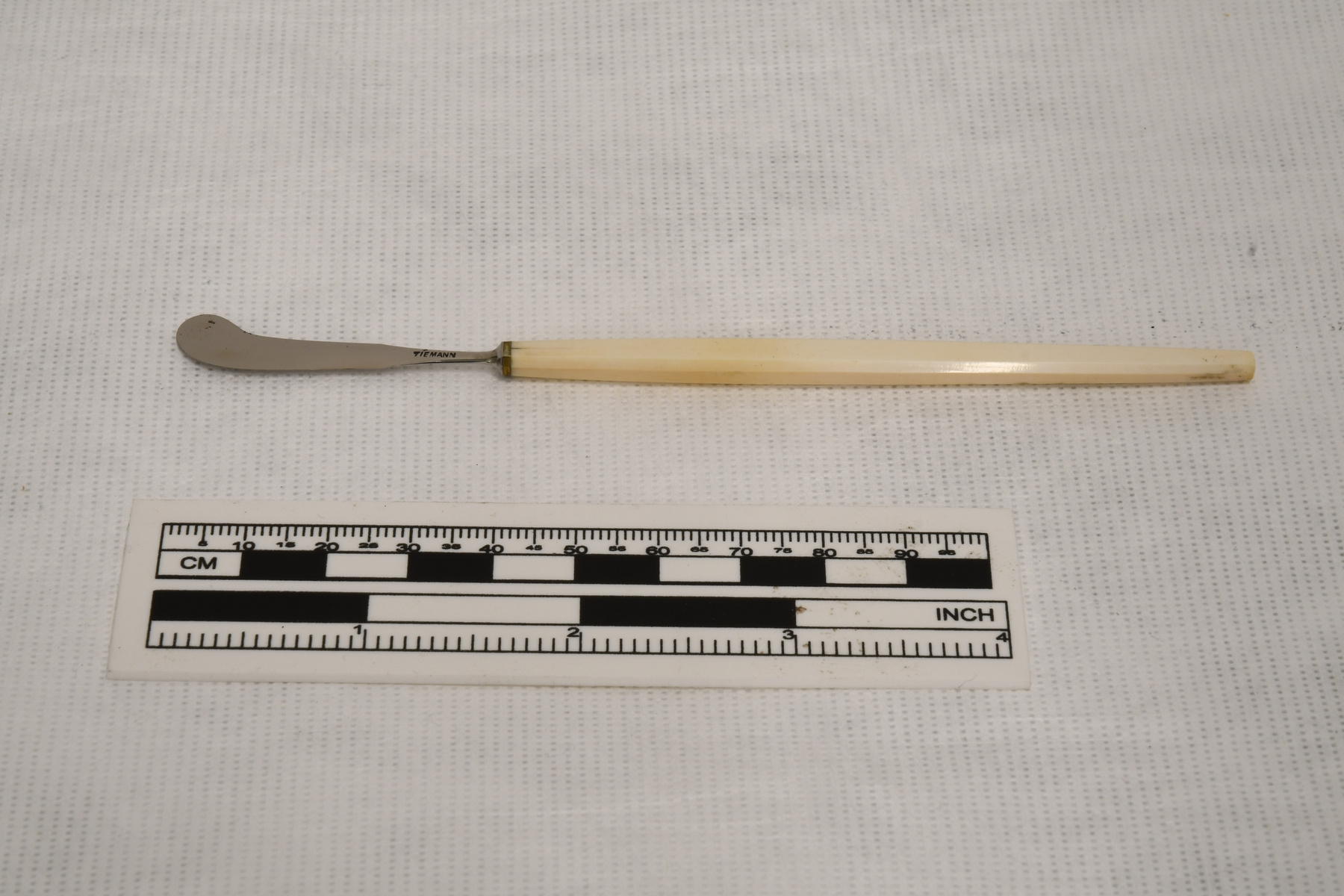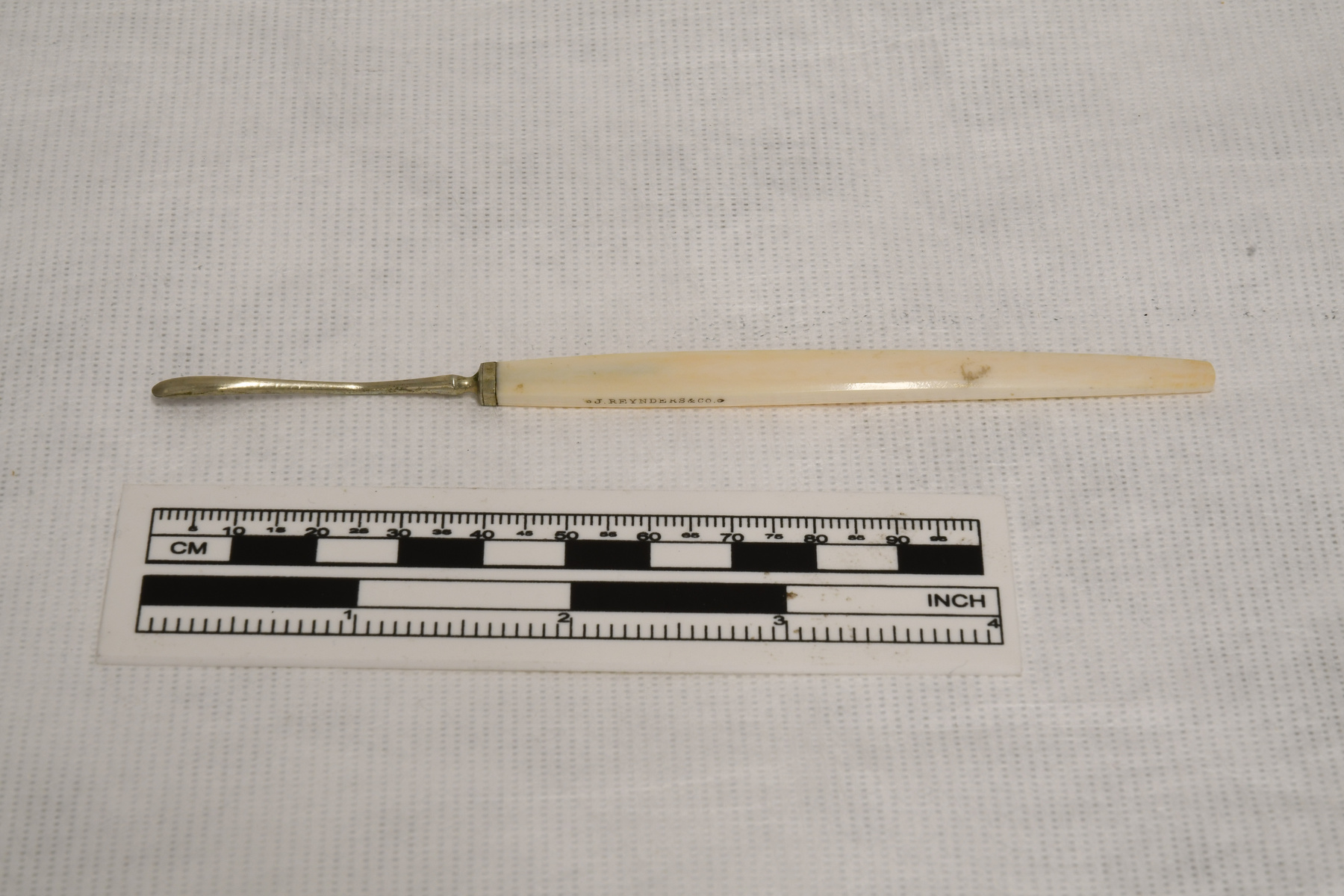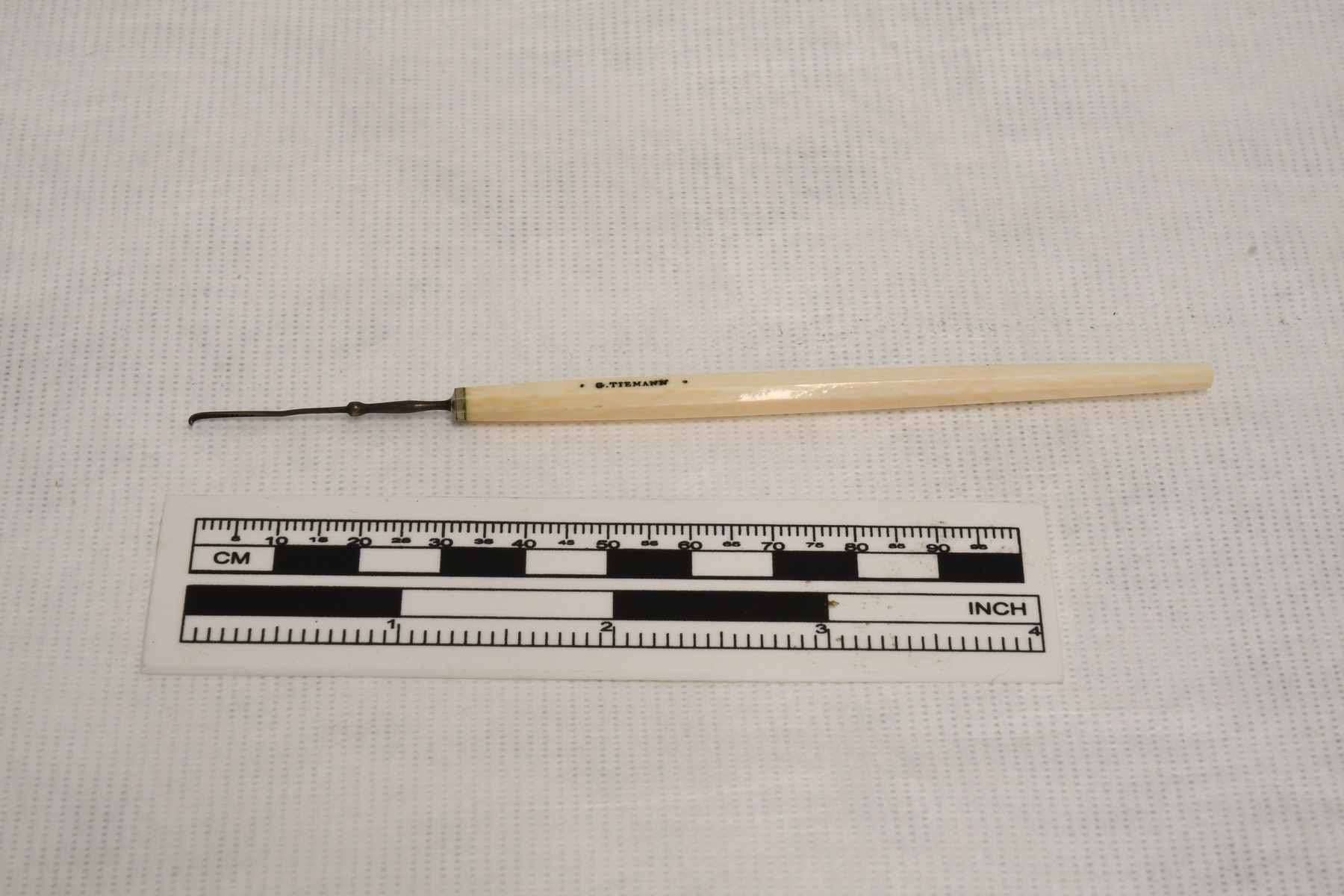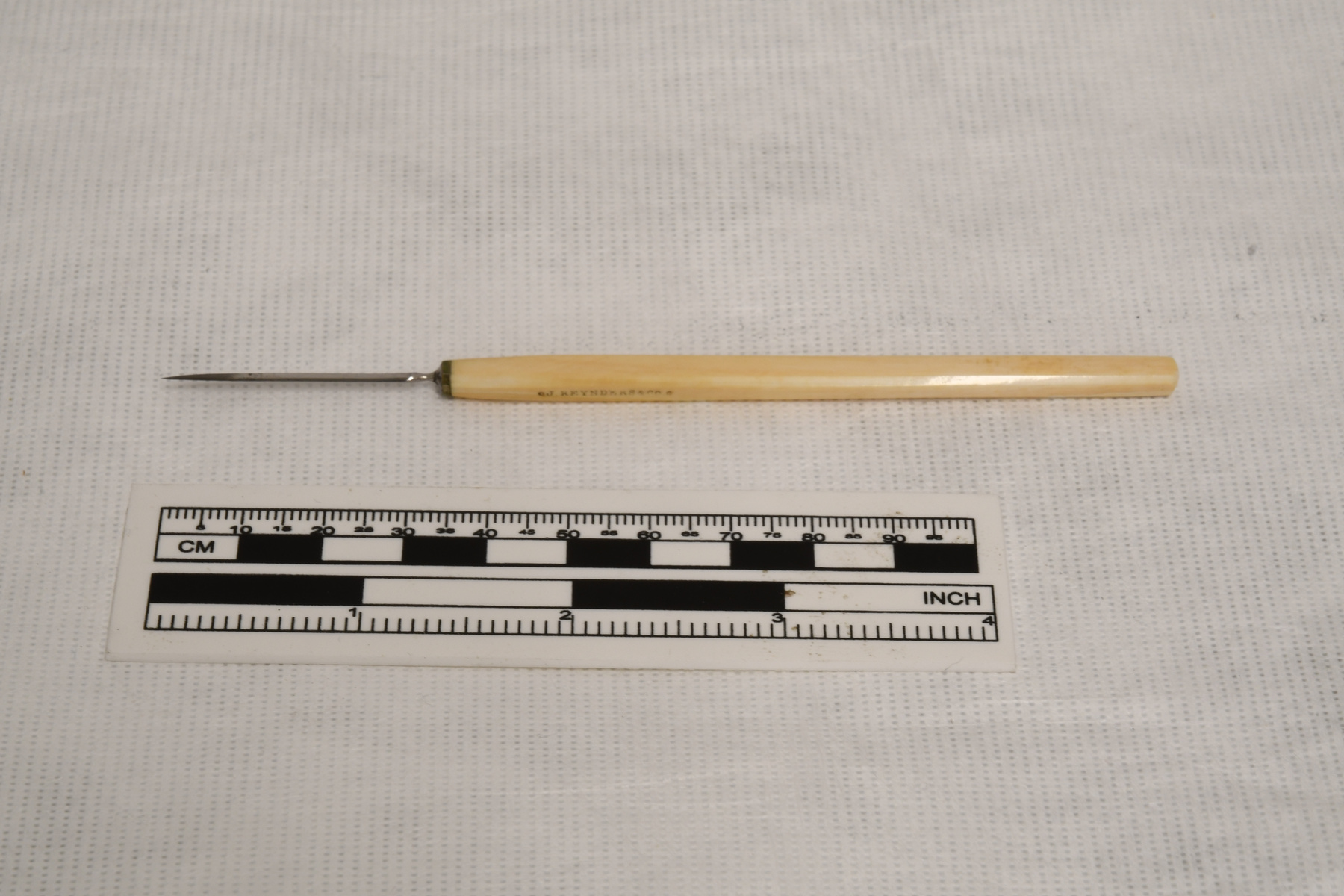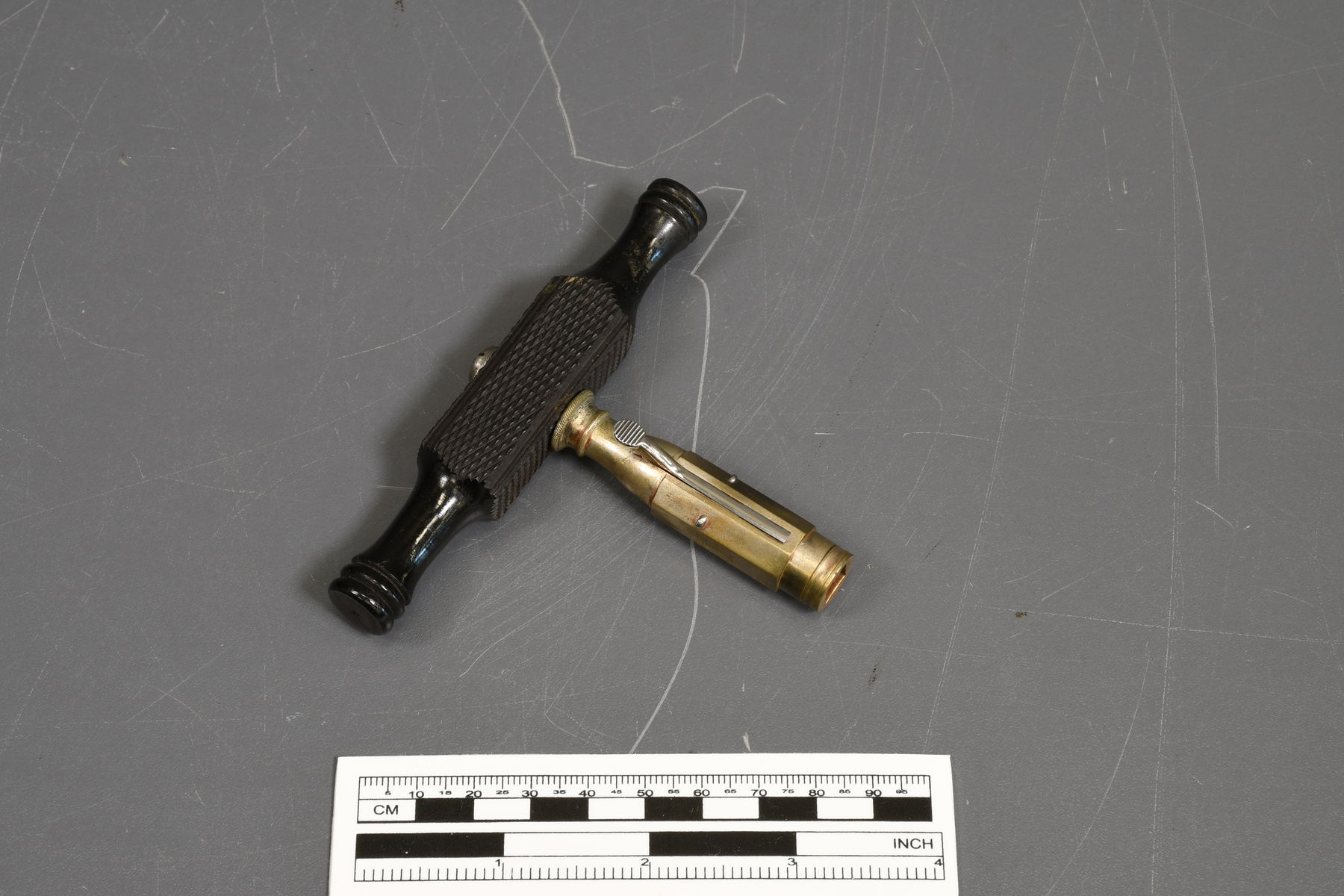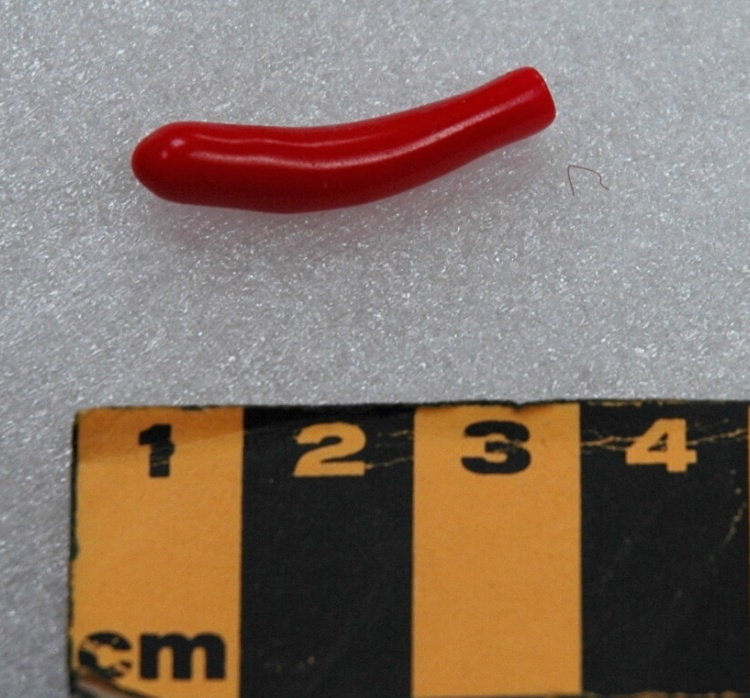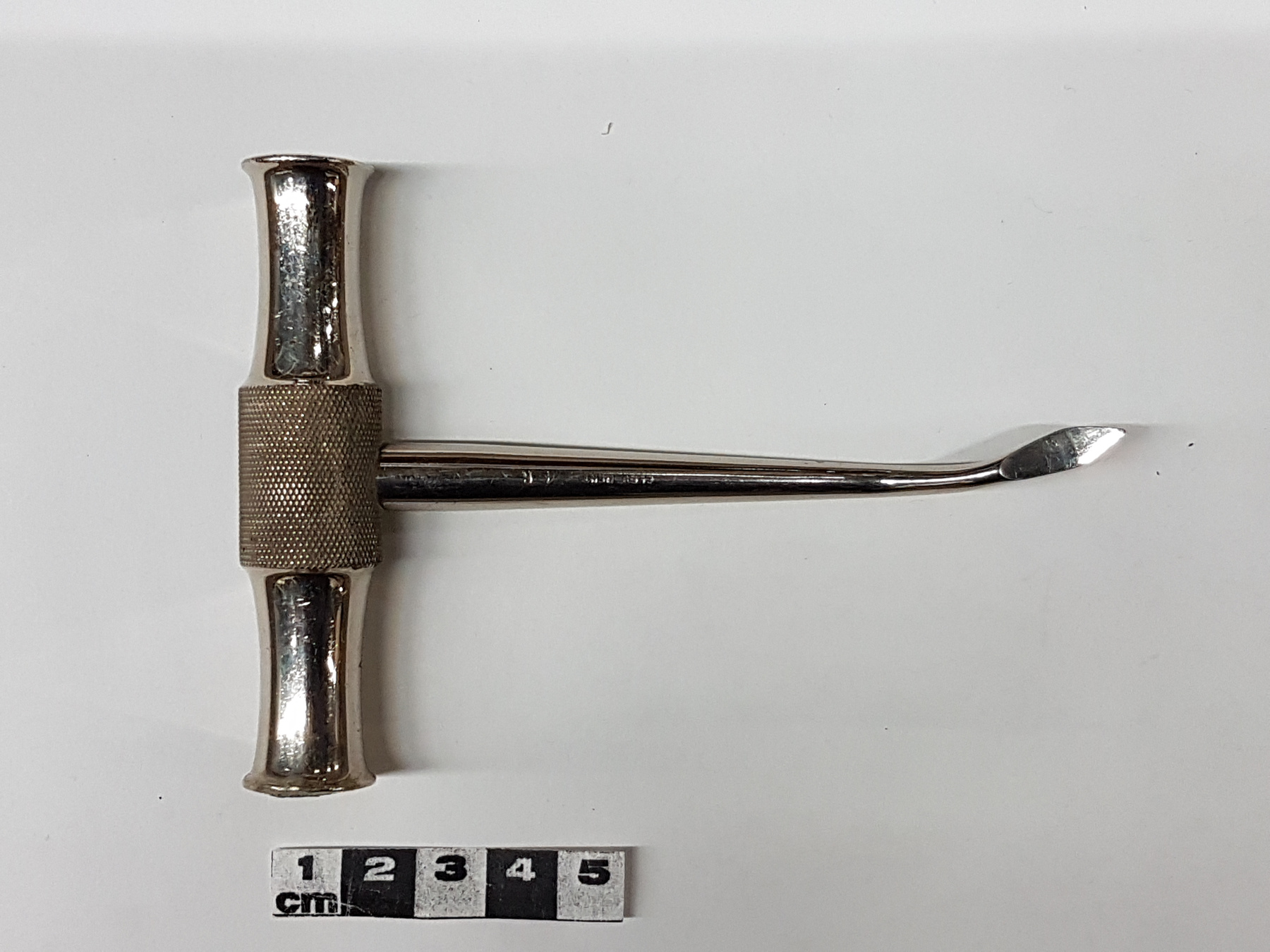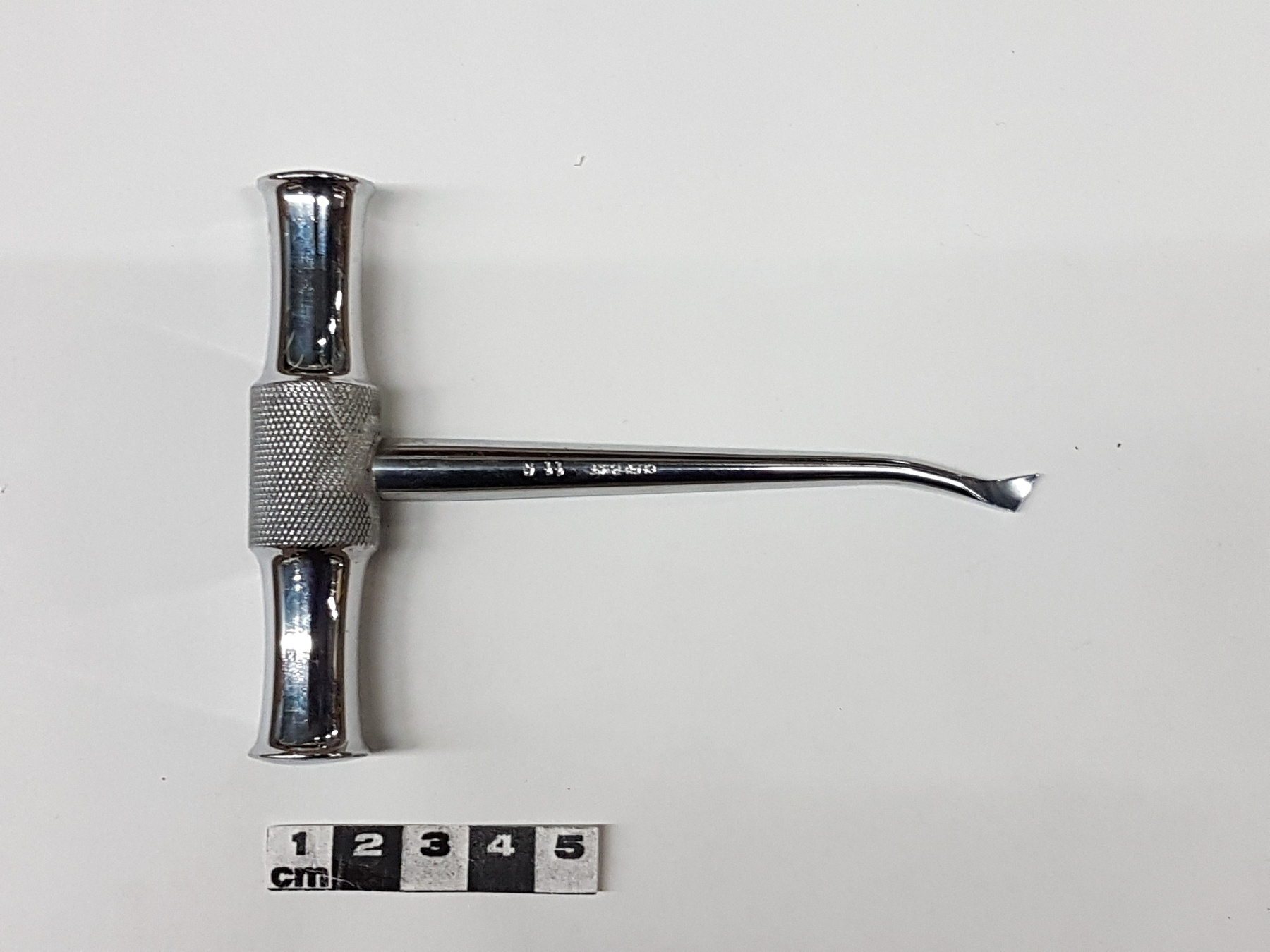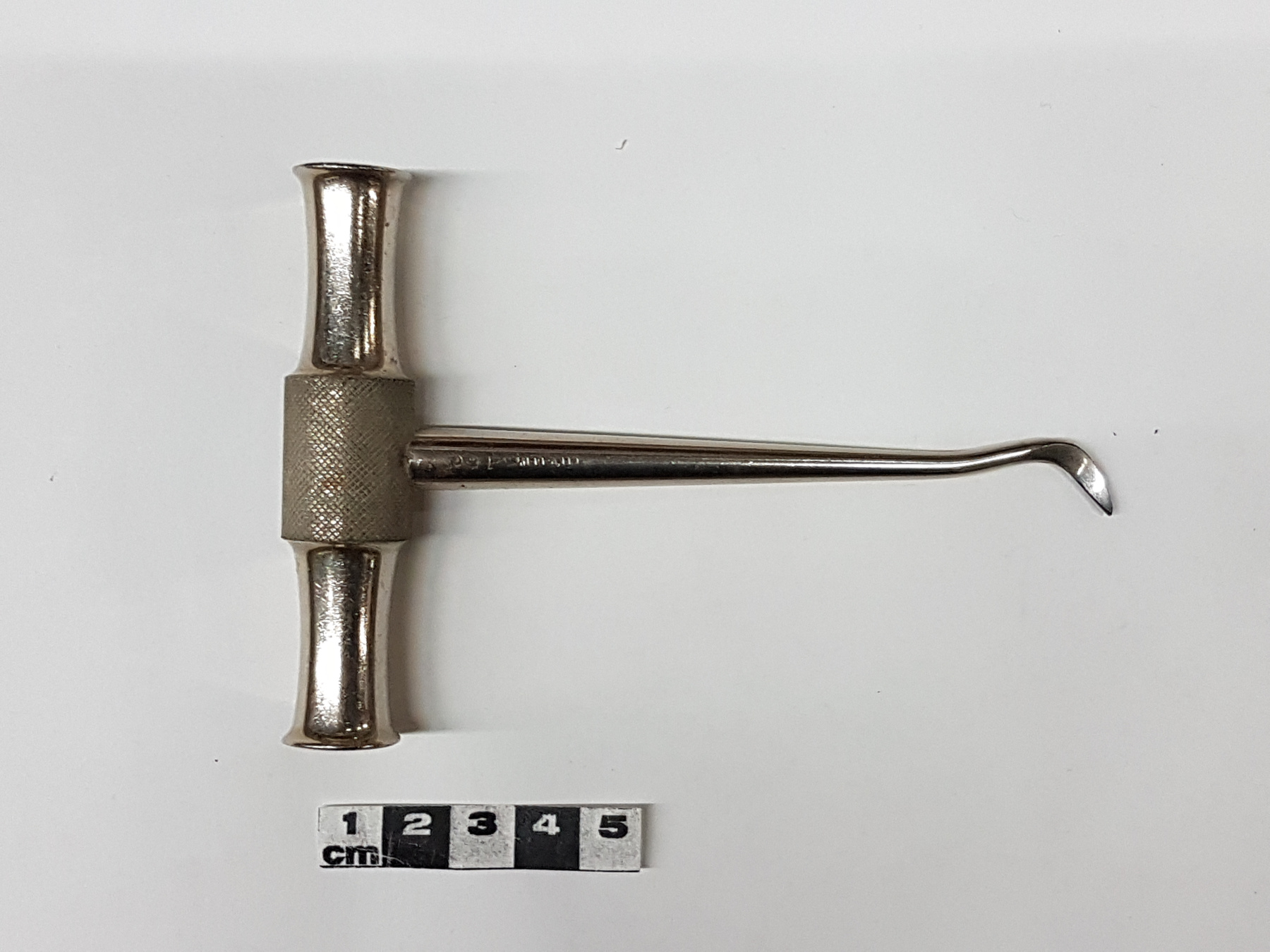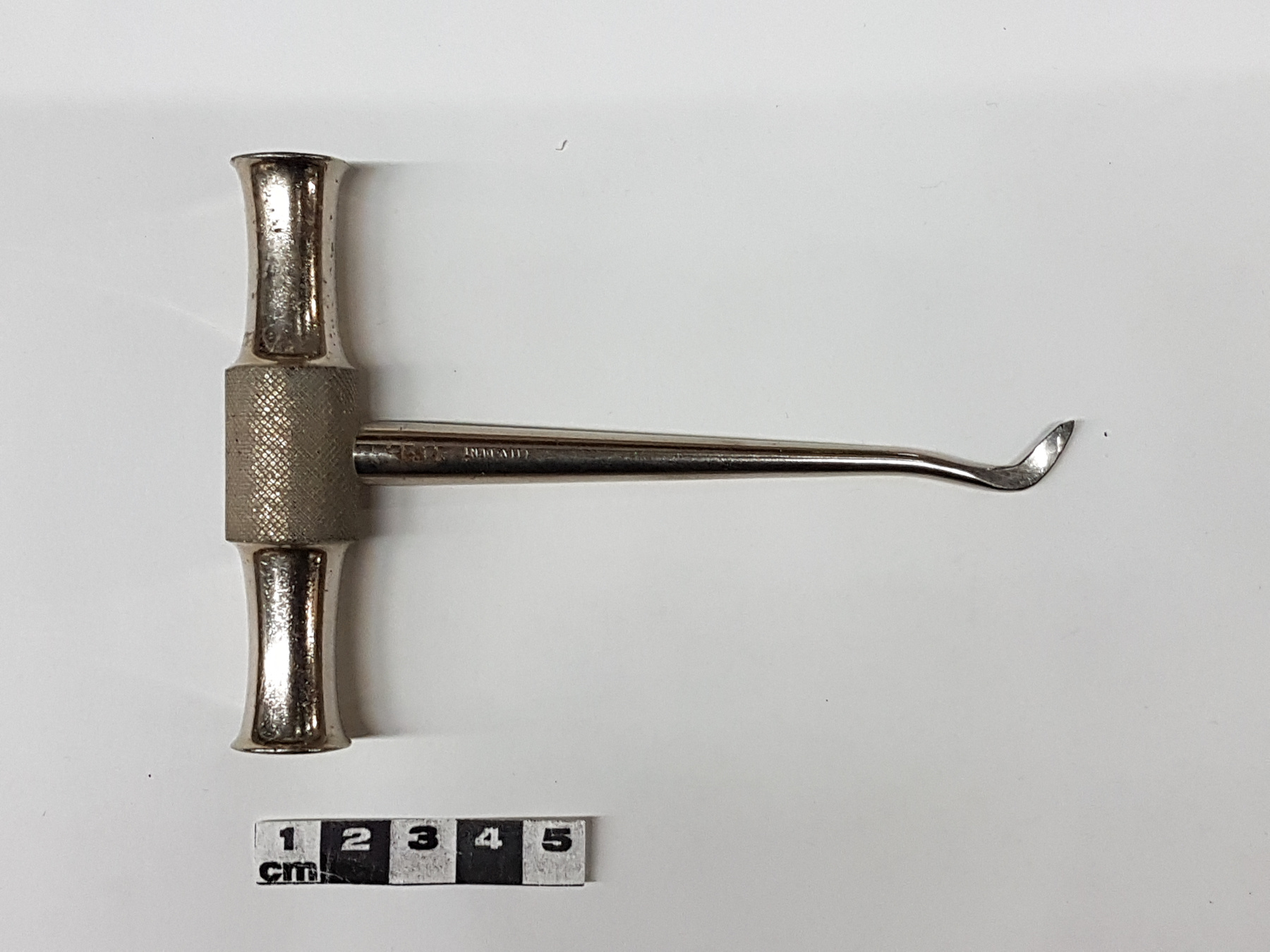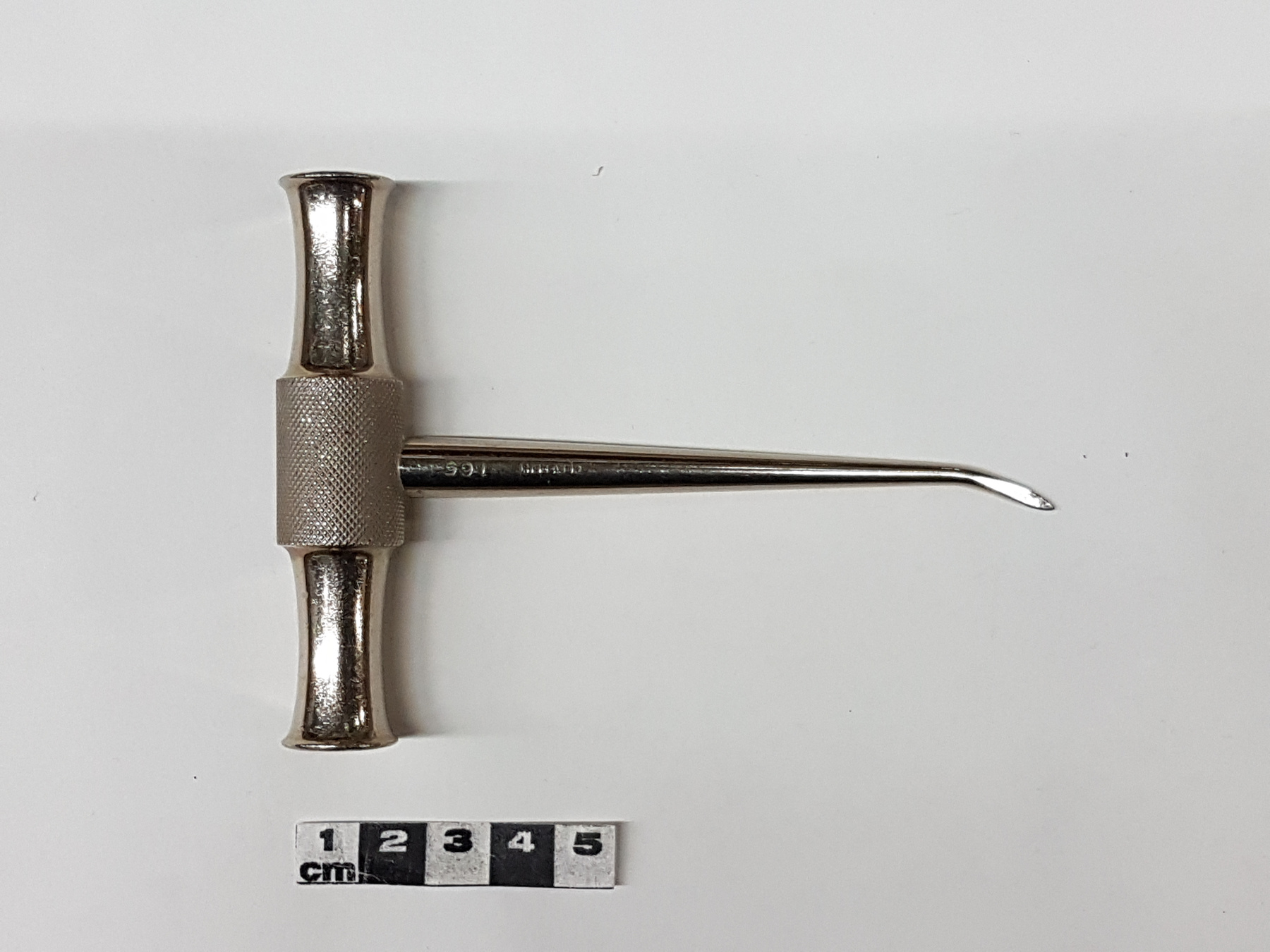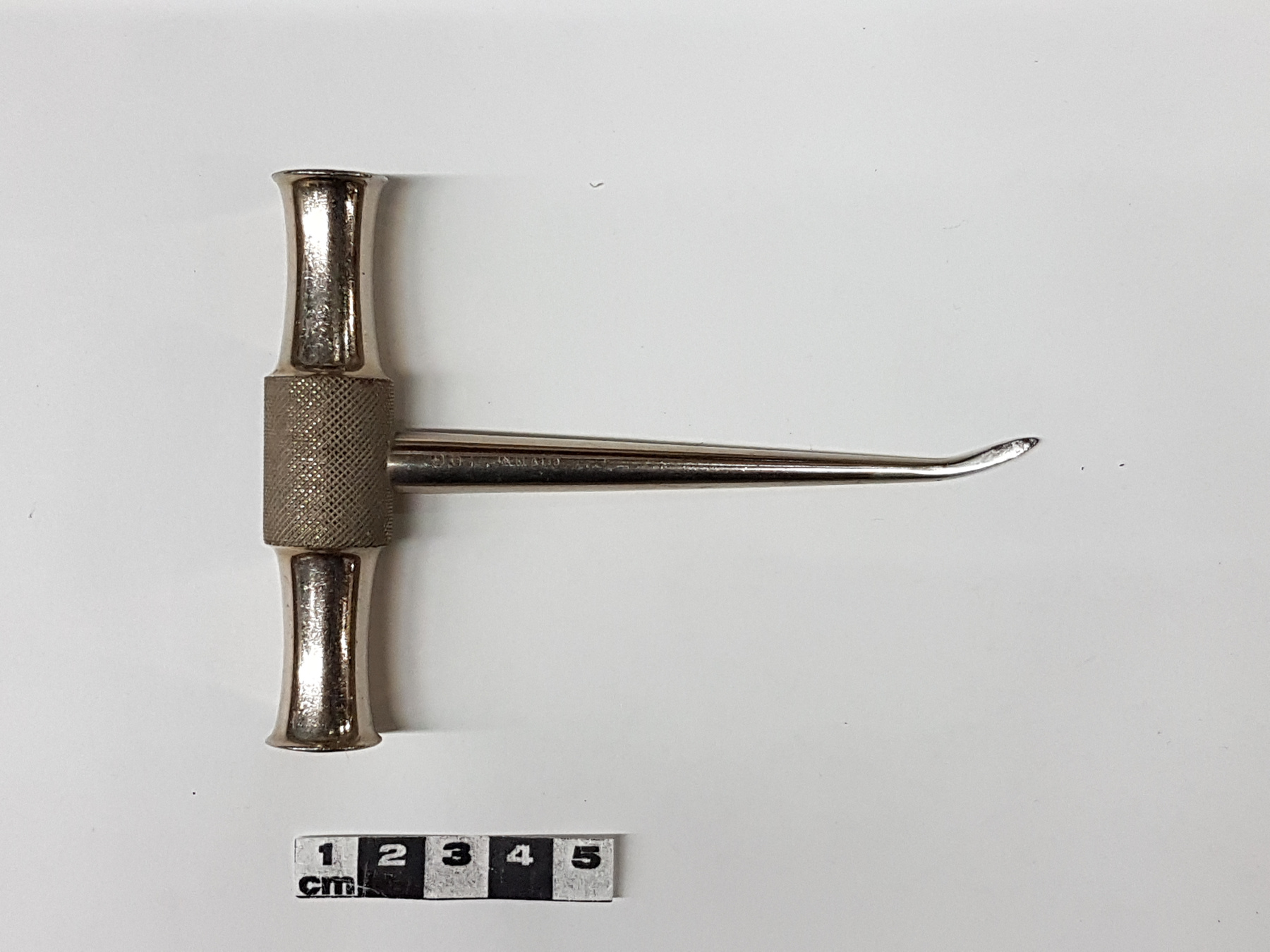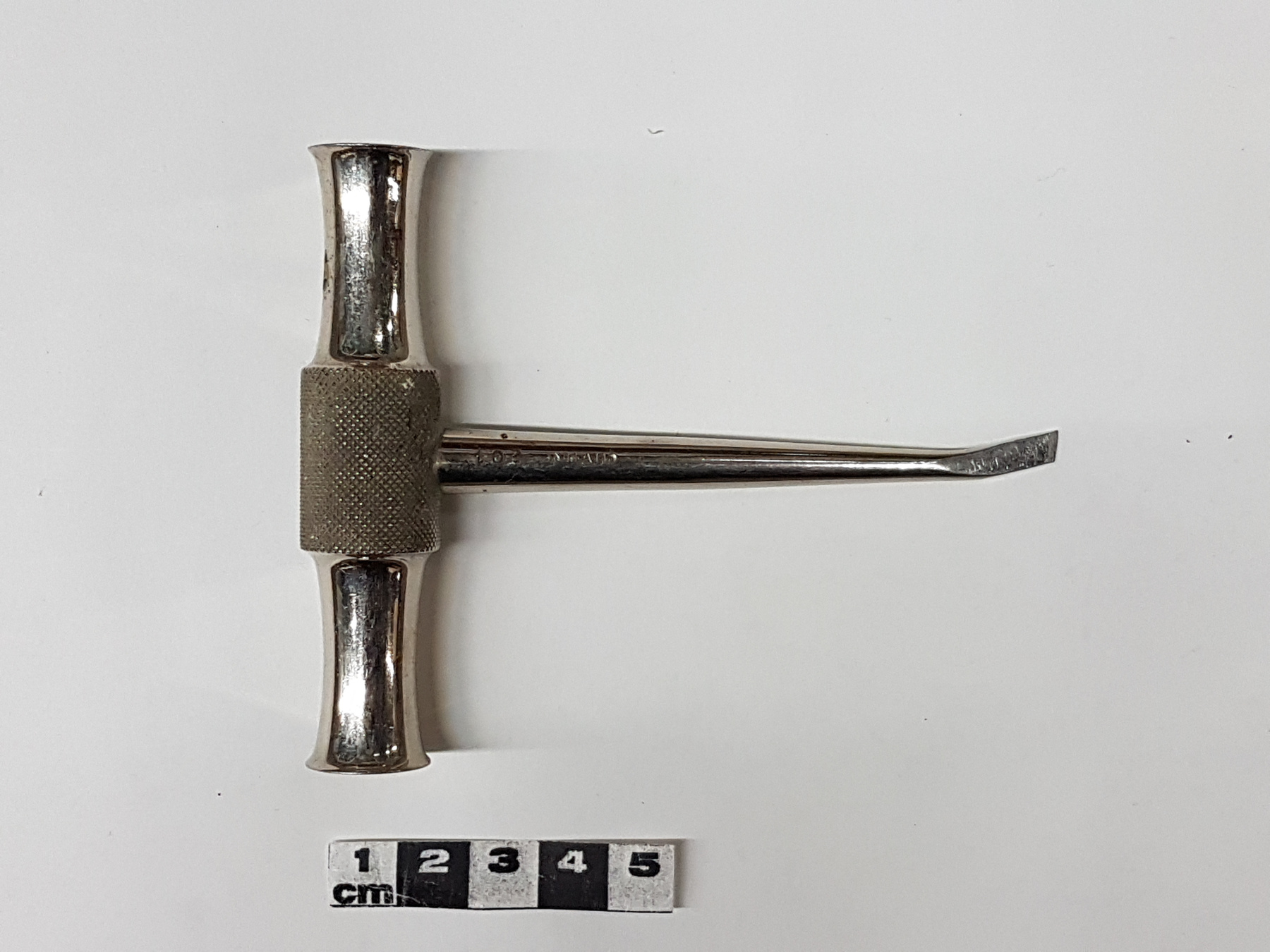Bistouri à amputation
Utiliser cette image
Puis-je réutiliser cette image sans autorisation? Oui
Les images sur le portail de la collection d’Ingenium ont la licence Creative Commons suivante :
Copyright Ingenium / CC BY-NC-ND (Attribution-NonCommercial 4.0 International (CC BY-NC 4.0)
ATTRIBUER CETTE IMAGE
Ingenium,
2002.0579.004
Permalien:
Ingenium diffuse cette image sous le cadre de licence Creative Commons et encourage son téléchargement et sa réutilisation à des fins non commerciales. Veuillez mentionner Ingenium et citer le numéro de l’artefact.
TÉLÉCHARGER L’IMAGEACHETER CETTE IMAGE
Cette image peut être utilisée gratuitement pour des fins non commerciales.
Pour un usage commercial, veuillez consulter nos frais de reproduction et communiquer avec nous pour acheter l’image.
- TYPE D’OBJET
- SURGICAL/LISTON'S/LONG
- DATE
- 1864–1886
- NUMÉRO DE L’ARTEFACT
- 2002.0579.004
- FABRICANT
- Tiemann & Co.
- MODÈLE
- Inconnu
- EMPLACEMENT
- New York, New York, United States of America
Plus d’information
Renseignements généraux
- Nº de série
- S/O
- Nº de partie
- 4
- Nombre total de parties
- 18
- Ou
- S/O
- Brevets
- S/O
- Description générale
- metal blade; gutta-percha (?) handle
Dimensions
Remarque : Cette information reflète la taille générale pour l’entreposage et ne représente pas nécessairement les véritables dimensions de l’objet.
- Longueur
- 37,0 cm
- Largeur
- 2,0 cm
- Hauteur
- 1,5 cm
- Épaisseur
- S/O
- Poids
- S/O
- Diamètre
- S/O
- Volume
- S/O
Lexique
- Groupe
- Technologie médicale
- Catégorie
- Instruments
- Sous-catégorie
- S/O
Fabricant
- Ou
- Tiemann
- Pays
- United States of America
- État/province
- New York
- Ville
- New York
Contexte
- Pays
- Canada
- État/province
- Ontario
- Période
- Probably used c. mid- 1860s- c. 1890. Thin, straight blade; collar or band attachment point between blade & handle; and heavy, ornate handle suggest this knife may be c. 1850s.
- Canada
-
From cased set of amputation instruments originally owned, and presumably used, by Dr. George H. Bowen, of Leeds County, Ontario. He was registered as M.R.C.P. in 1877. This set was given to Dr. Bowen by his mother. [Ref. 3] - Fonction
-
Used to cut through soft tissue, exposing long bones of leg thigh or upper arm. - Technique
-
Robert Liston (England} is largely credited with re-introducing the flap amputation. Previously, circular amputation was widely practiced: using a sickle-like curved blade knife skin, muscle and bone were cut and separated from one another. After the bone was severed, arteries were tied and the soft tissues pulled together and secured. Of longer duration, and appreciably more pain and trauma circular amputations also resulted in a much-shortened limb. Flap amputations reduced the time necessary to cut through to bone, and produced a more useful stump. Liston advocated using instruments of a size proportionate to the specific amputation (ie. long blades for thigh amputations), and smooth or polished handles. This example features an older style (or pre-aseptic) handle with deeply incised pattern grip. (Ref. 4) - Notes sur la région
-
Inconnu
Détails
- Marques
- "Tiemann & Co" stamped into butt joint of blade. "X969.12.1B" printed by hand in white ink, below.
- Manque
- None.
- Fini
- Dark brown/black gutta percha (?) handle has deeply recessed checkered pattern on all sides, but is smooth near end; bright silver metal blade; goldtone colour metal collar
- Décoration
- S/O
FAIRE RÉFÉRENCE À CET OBJET
Si vous souhaitez publier de l’information sur cet objet de collection, veuillez indiquer ce qui suit :
Tiemann & Co., Bistouri à amputation, entre 1864–1886, Numéro de l'artefact 2002.0579, Ingenium - Musées des sciences et de l'innovation du Canada, http://collections.ingeniumcanada.org/fr/id/2002.0579.004/
RÉTROACTION
Envoyer une question ou un commentaire sur cet artefact.
Plus comme ceci

